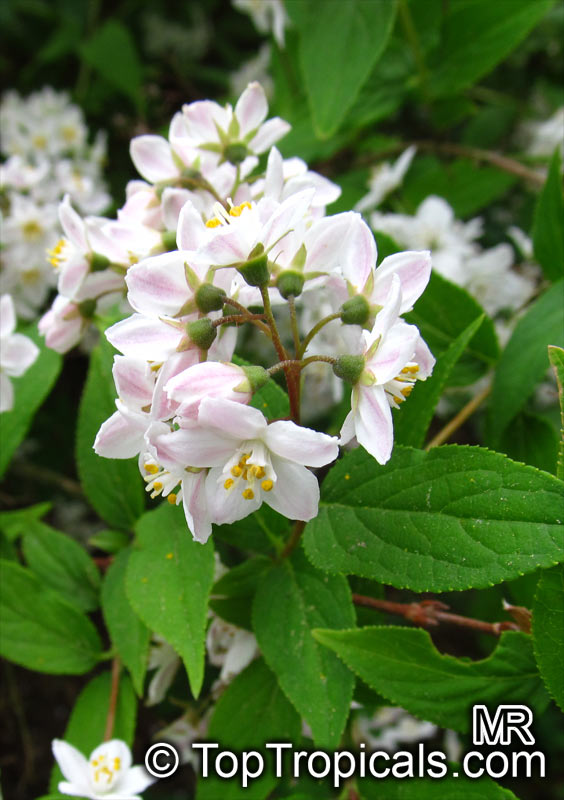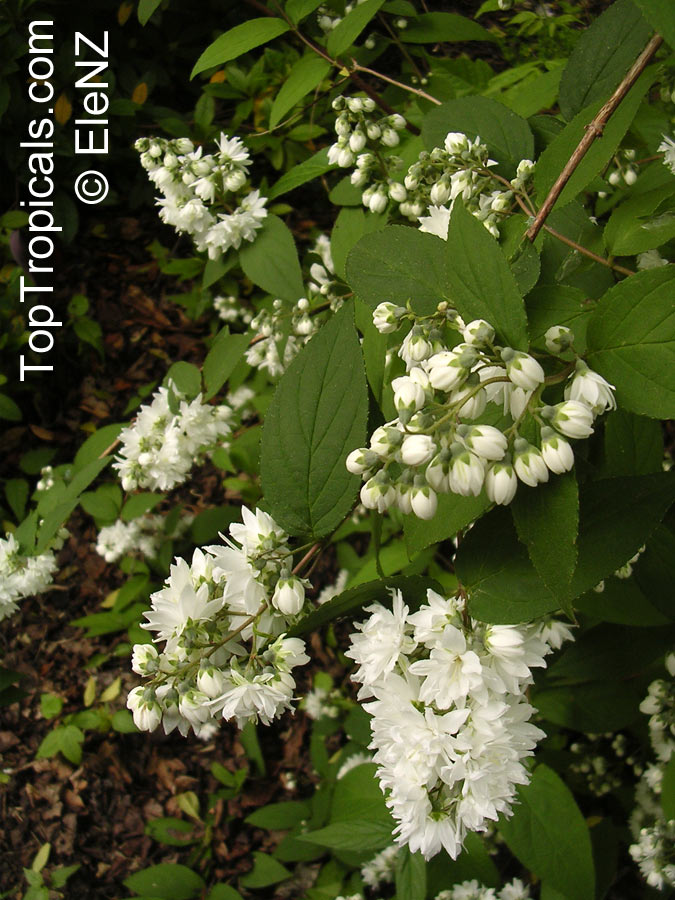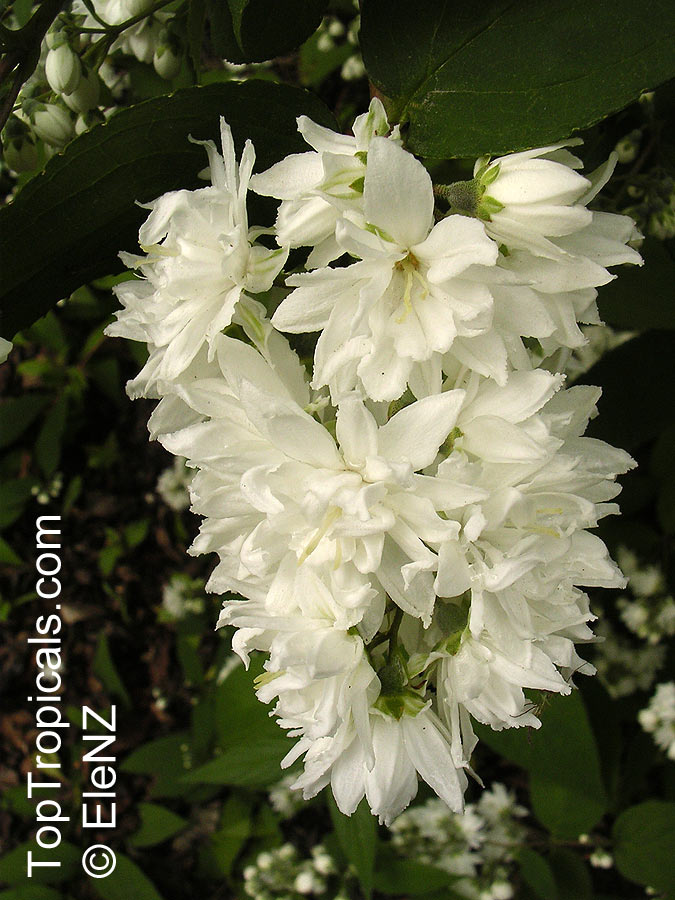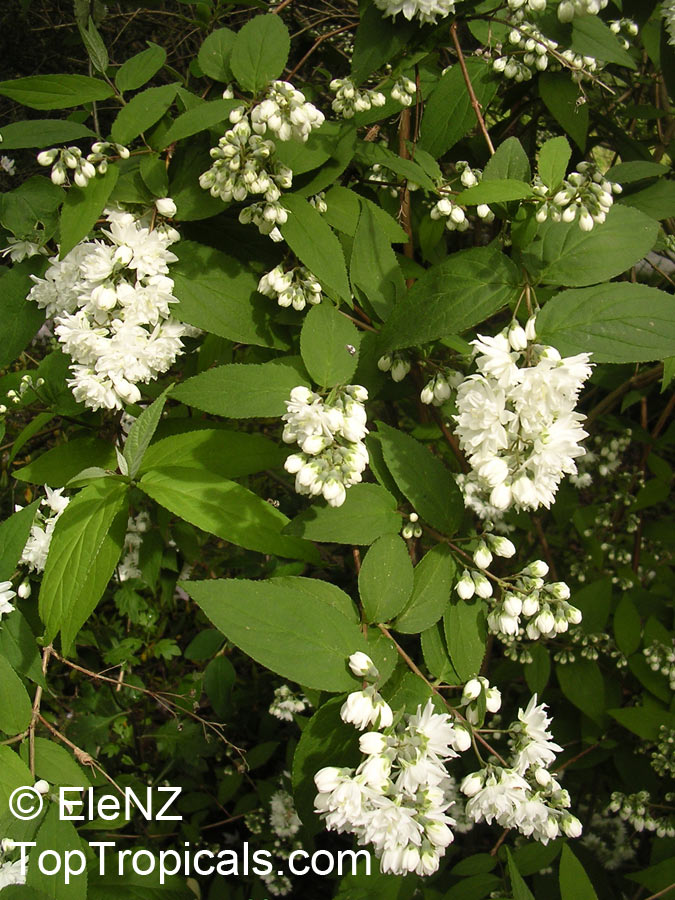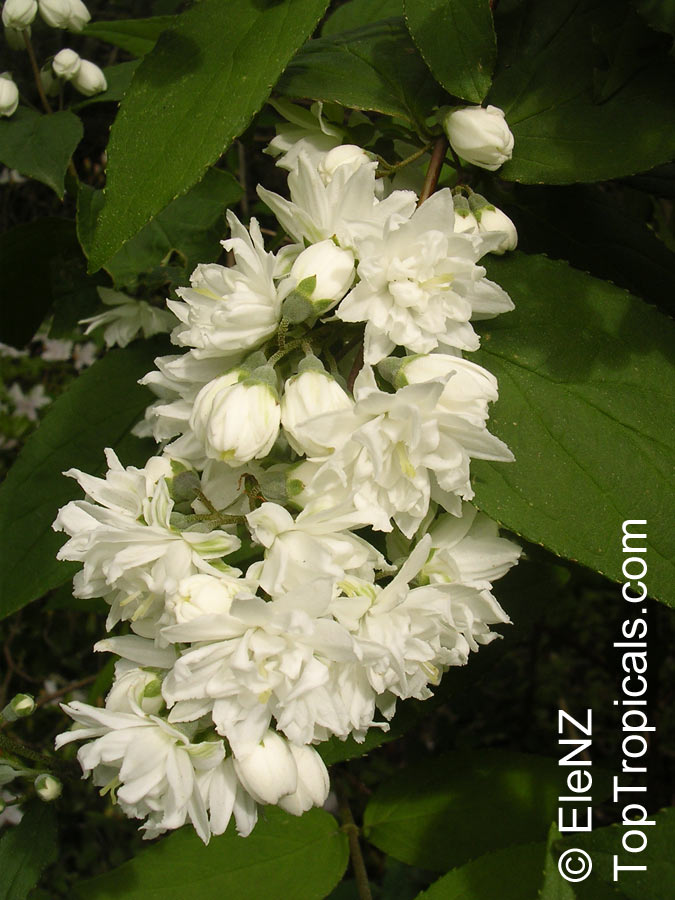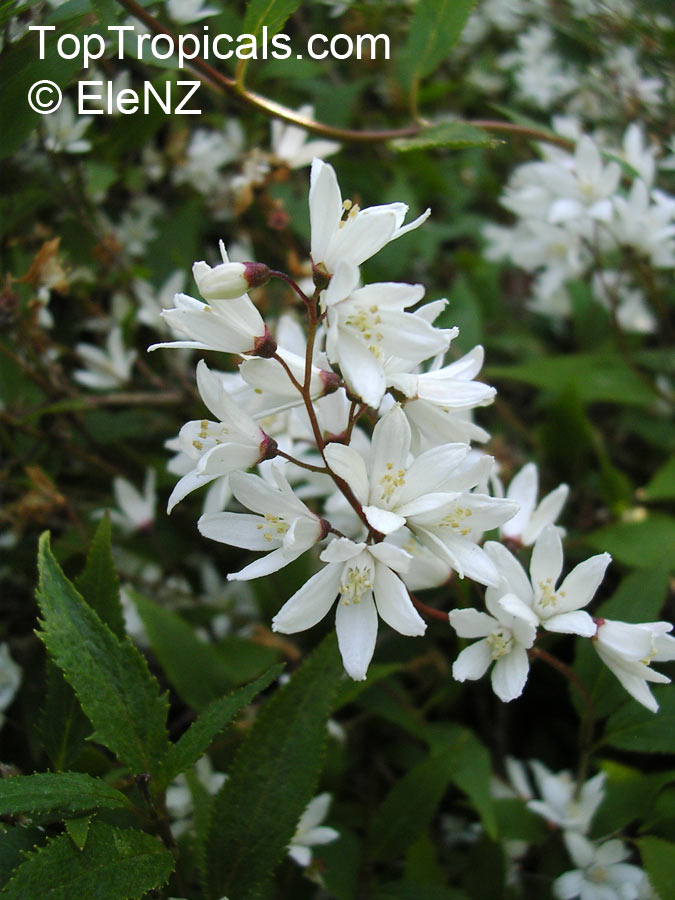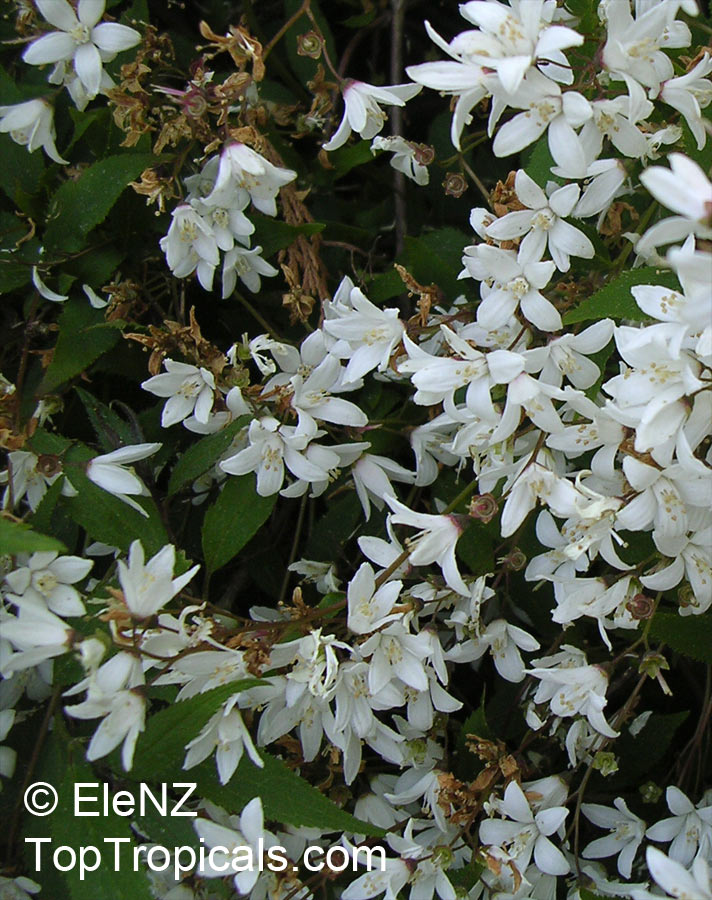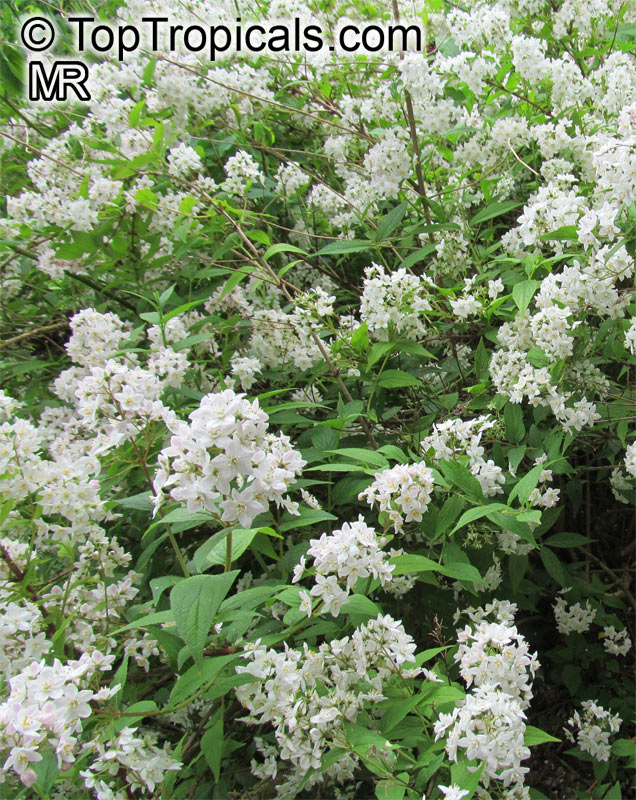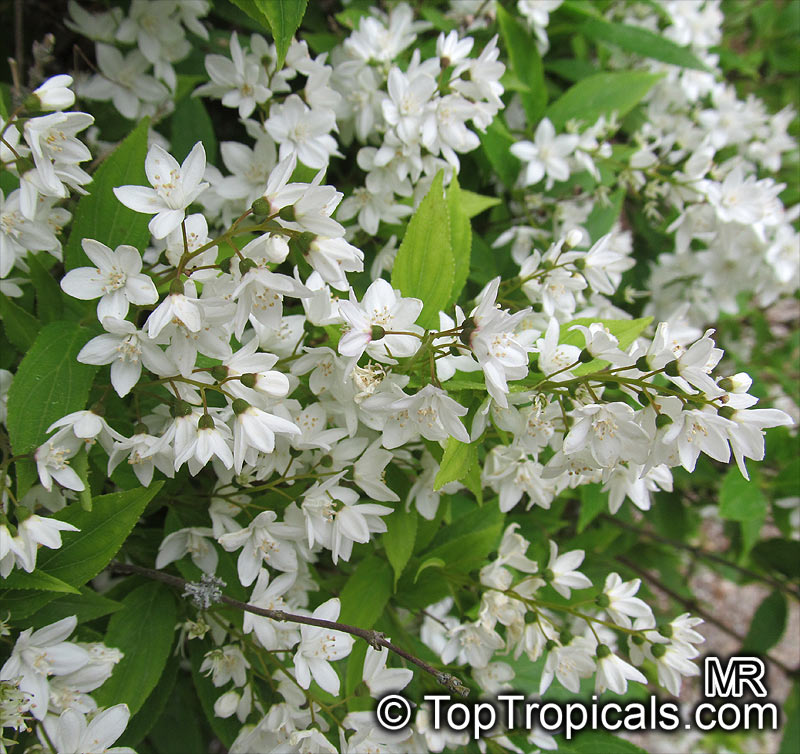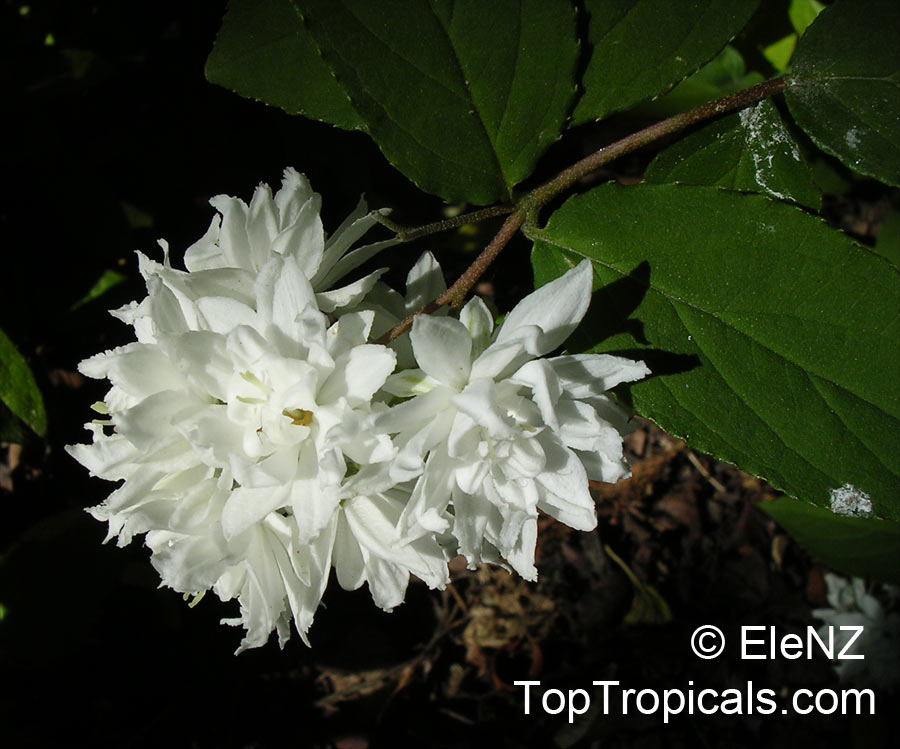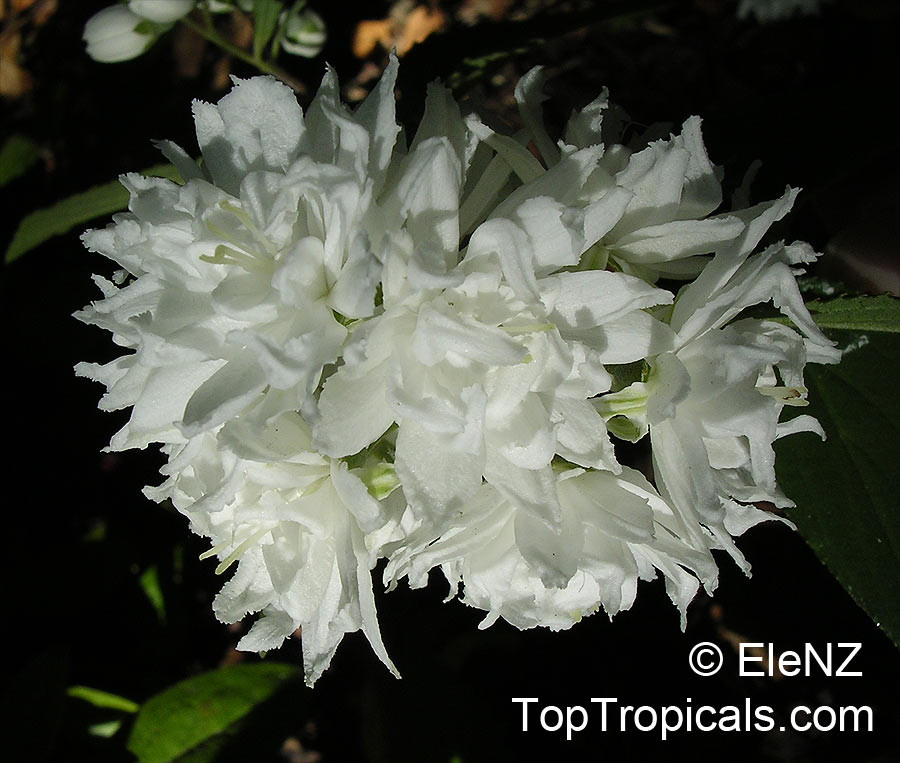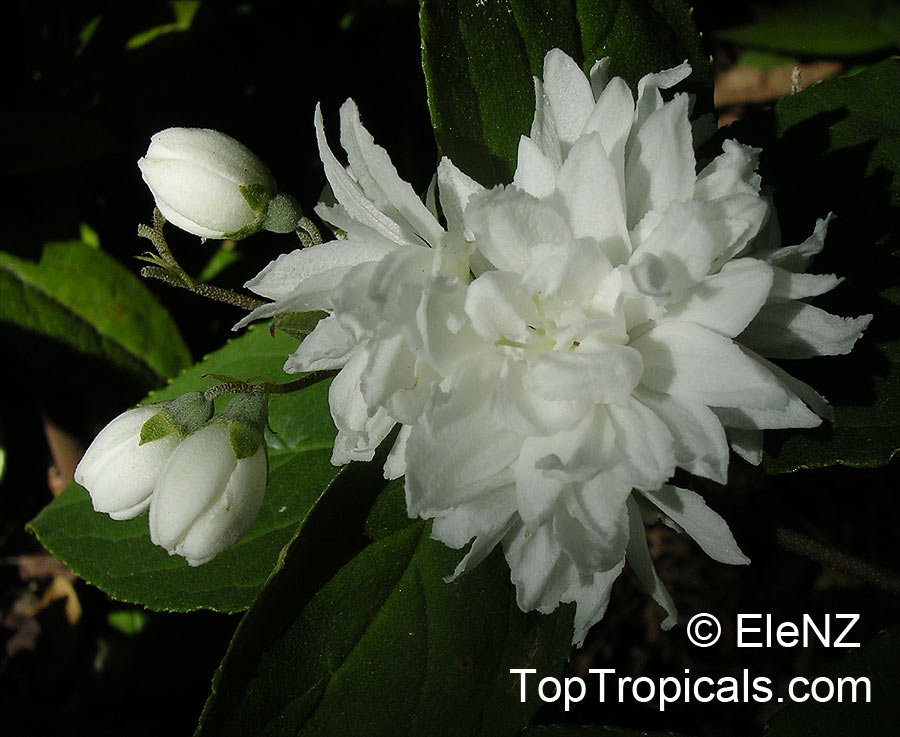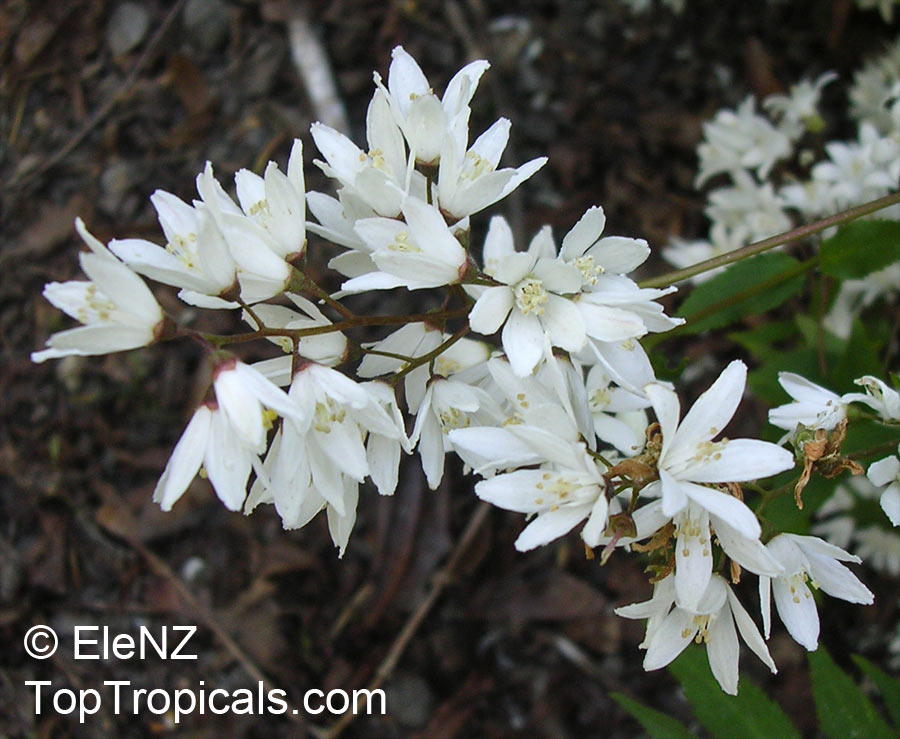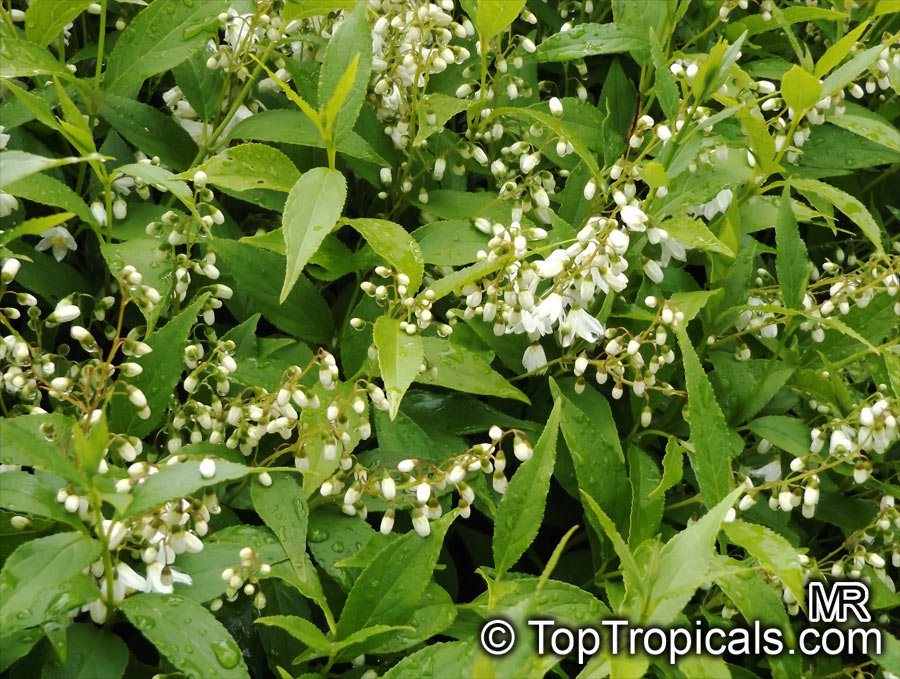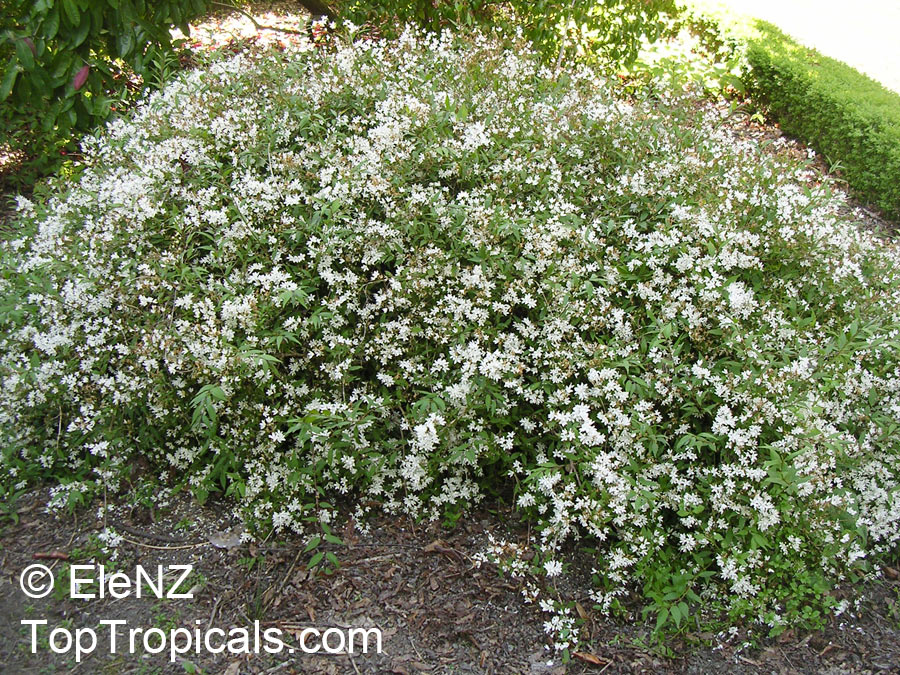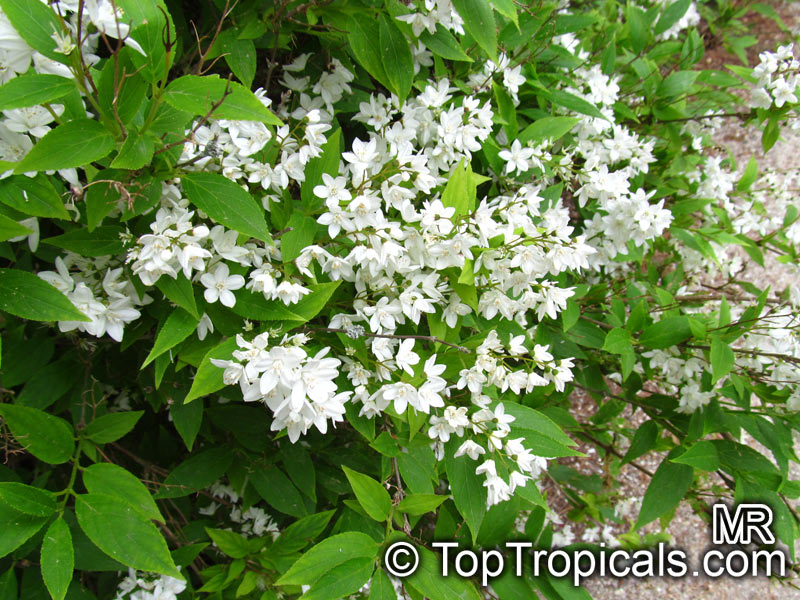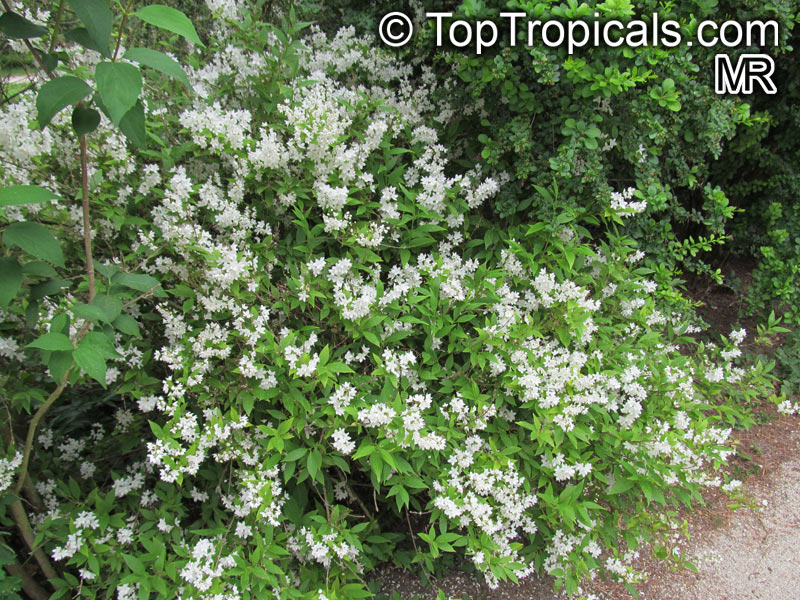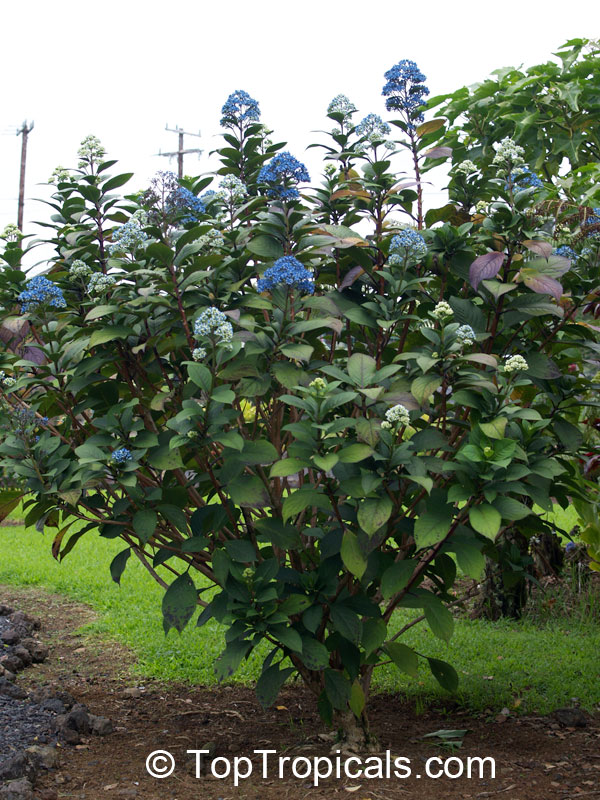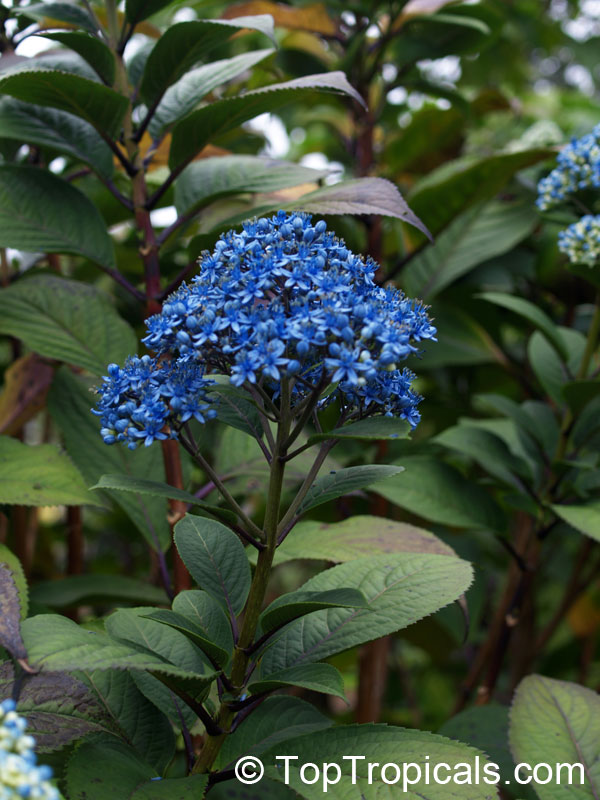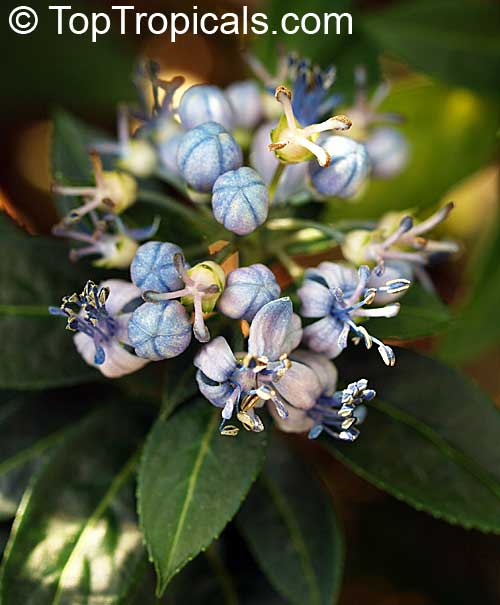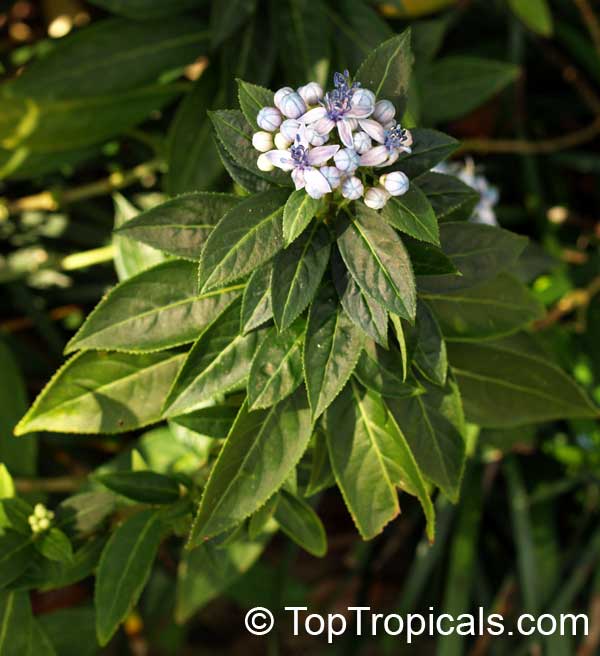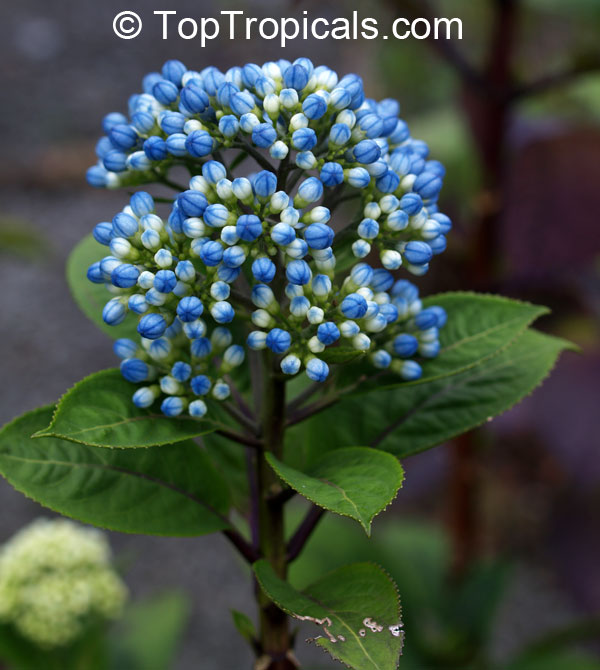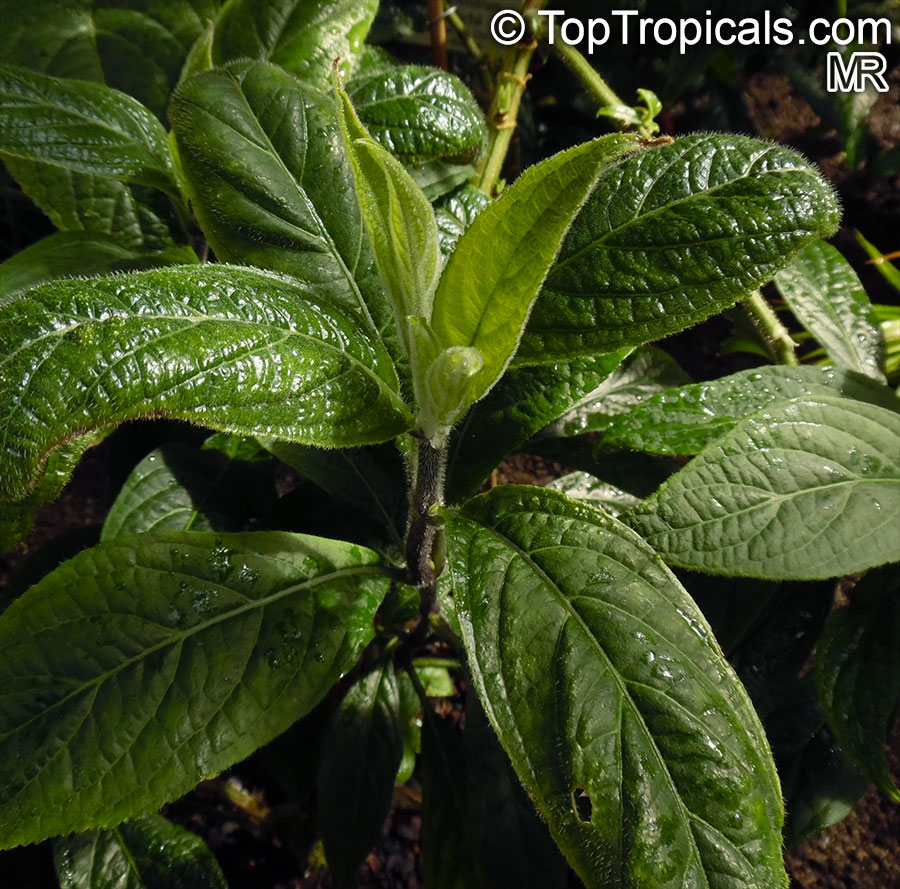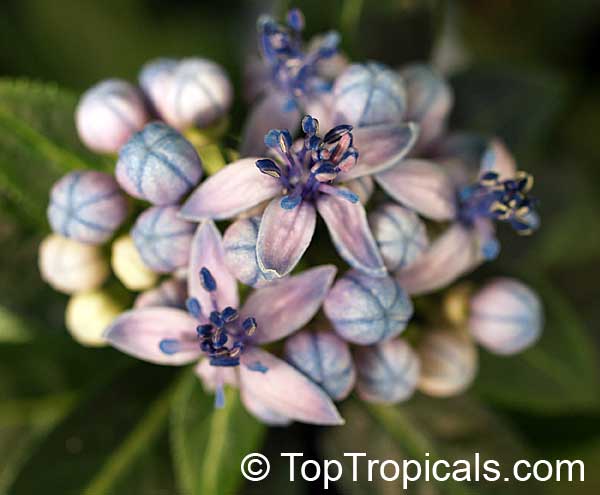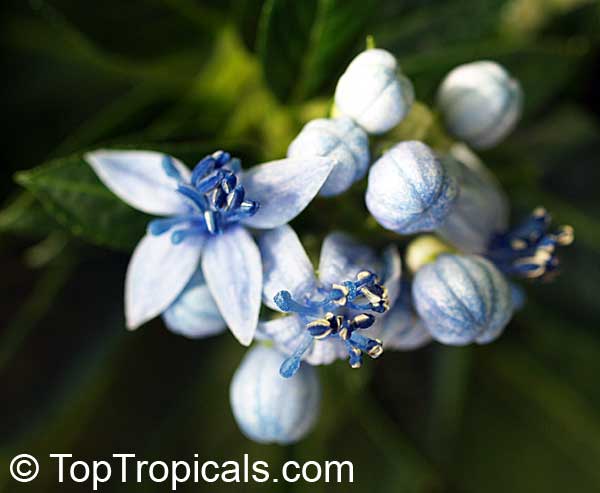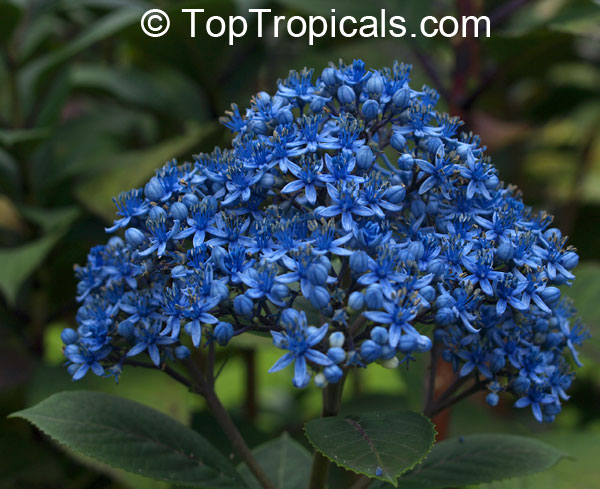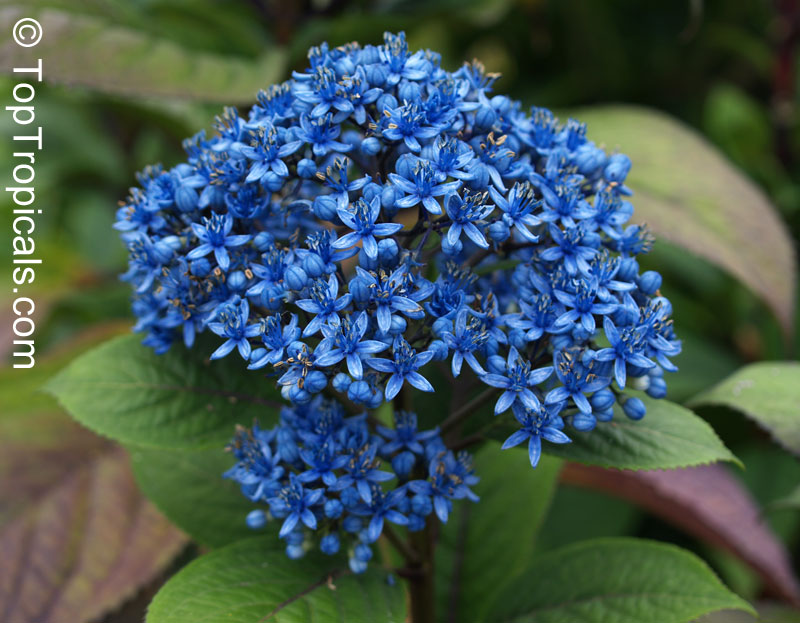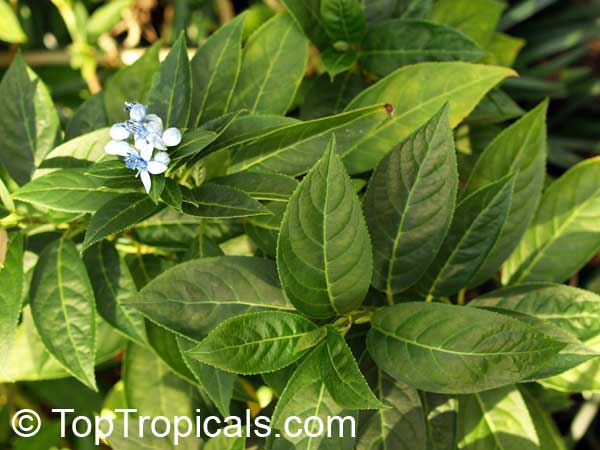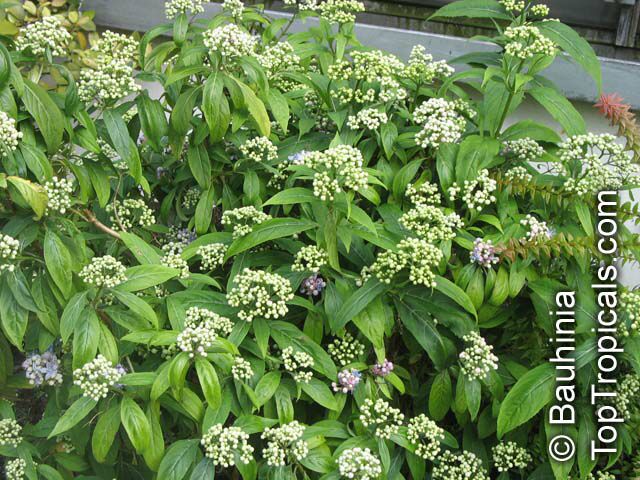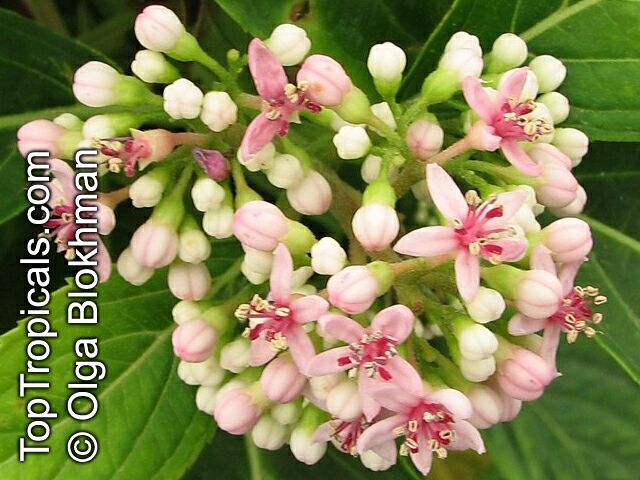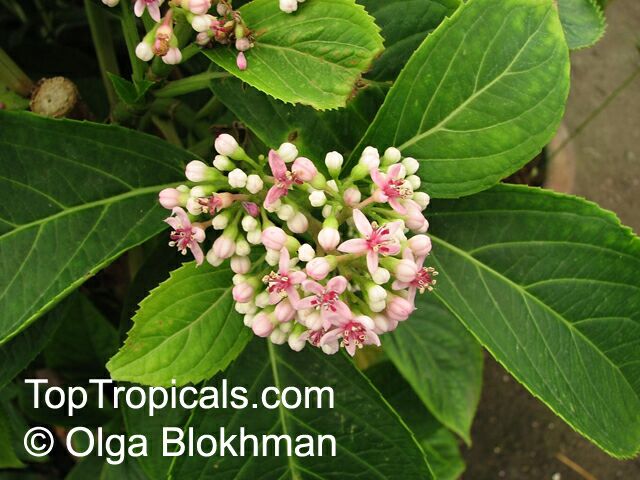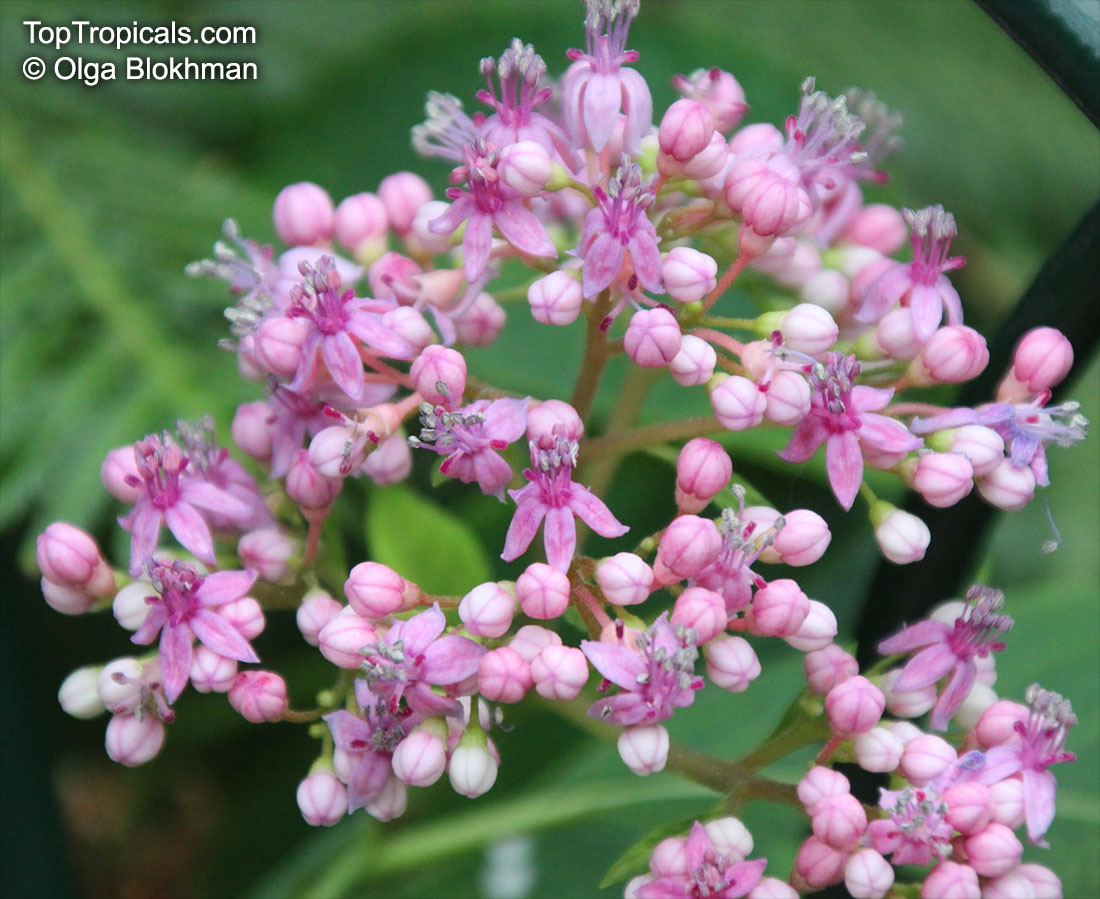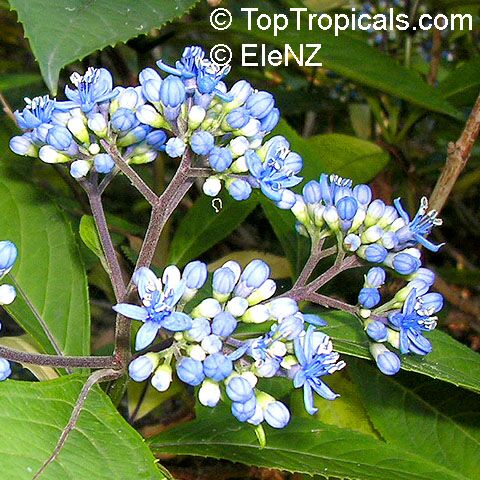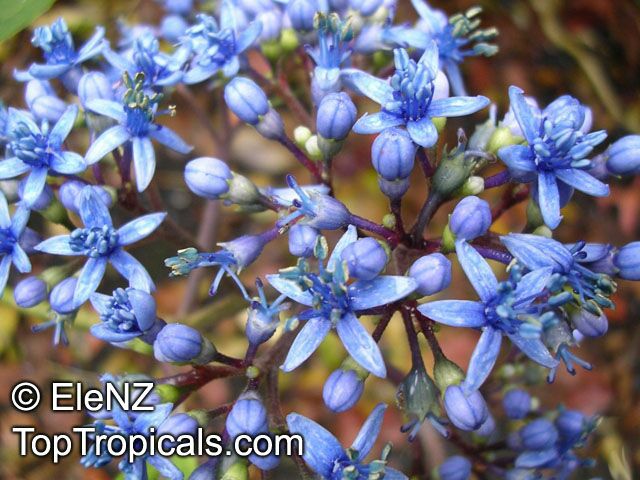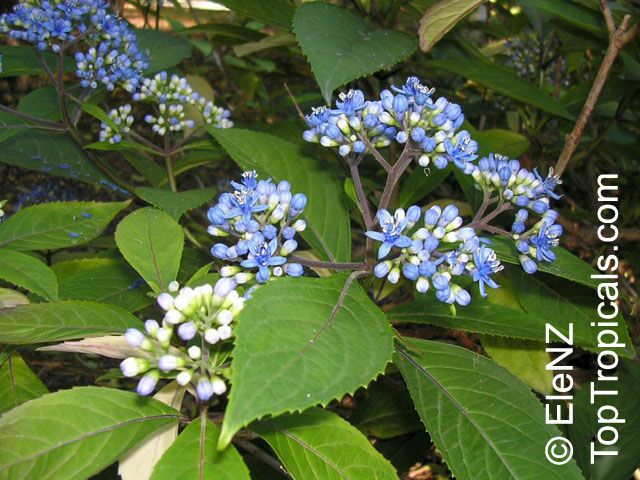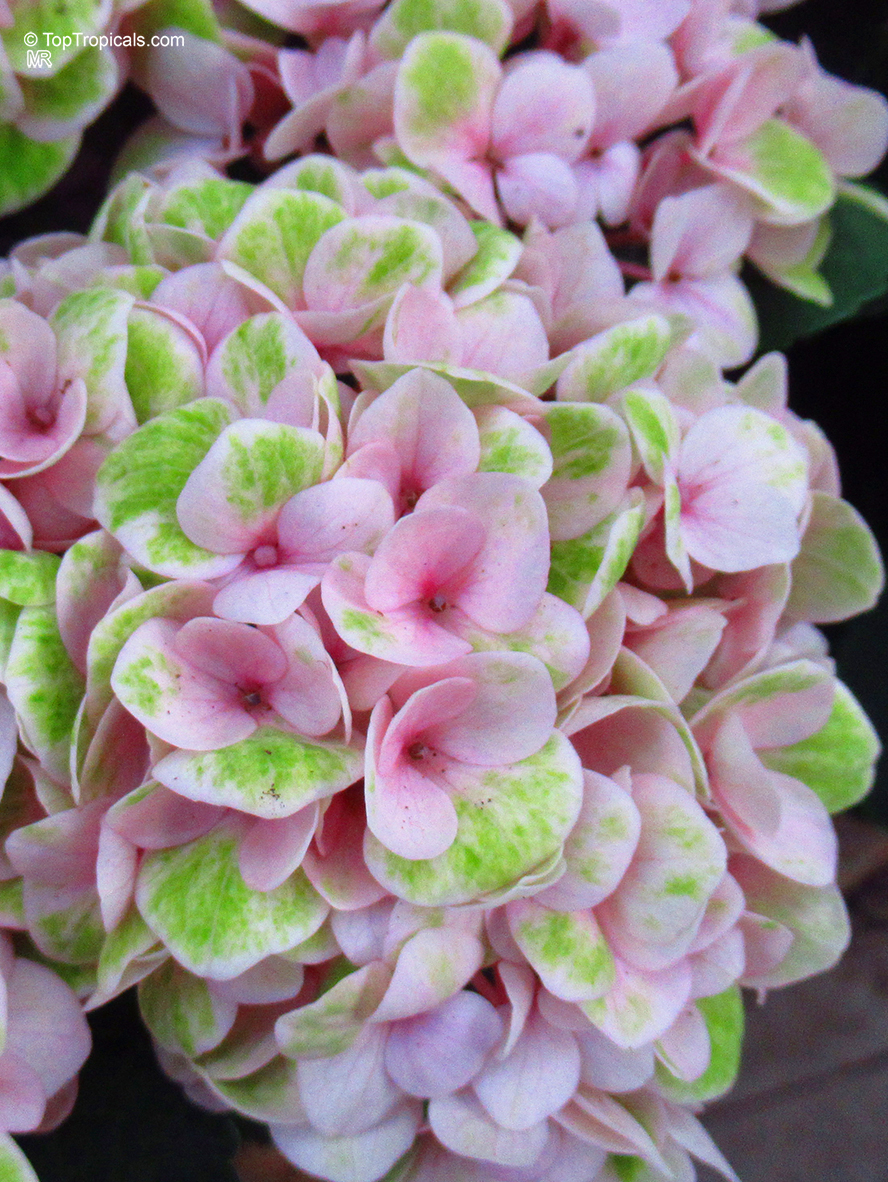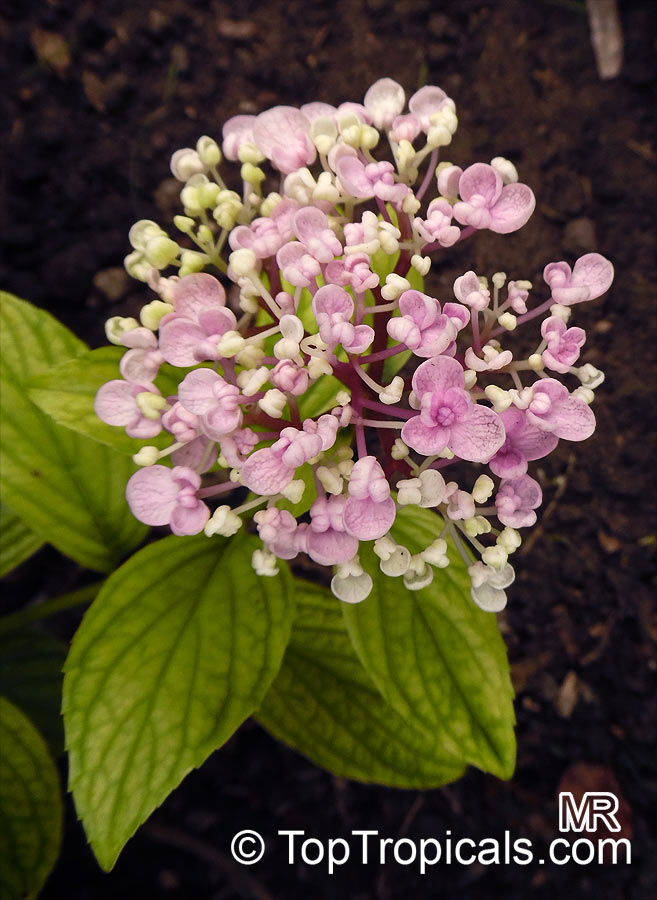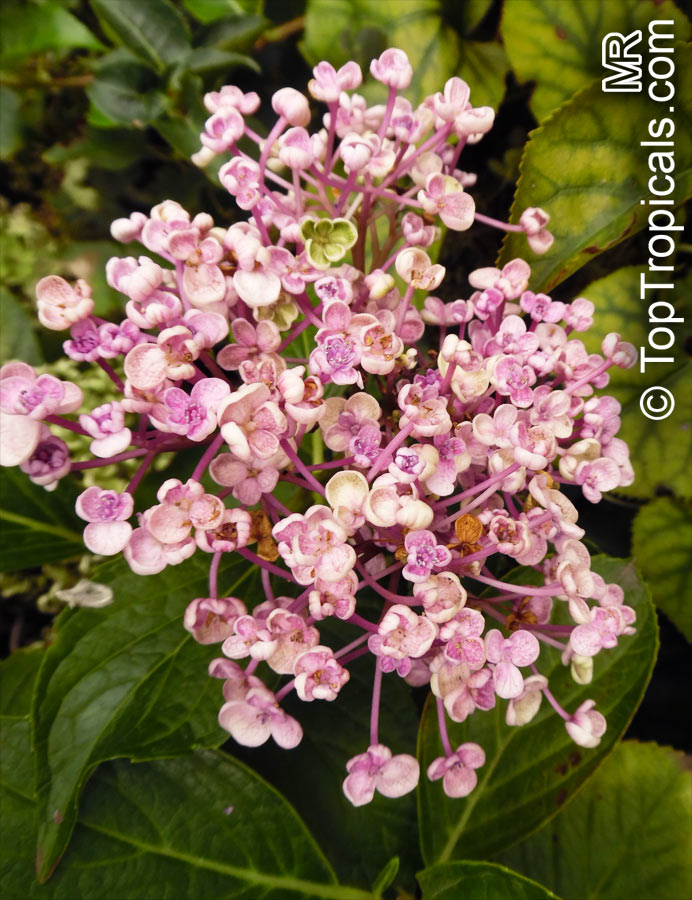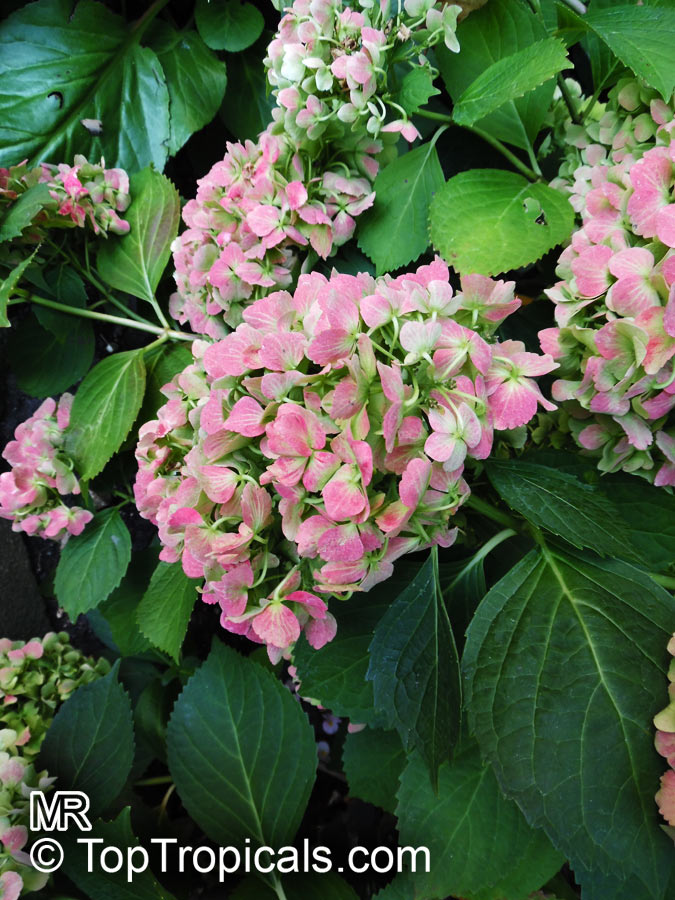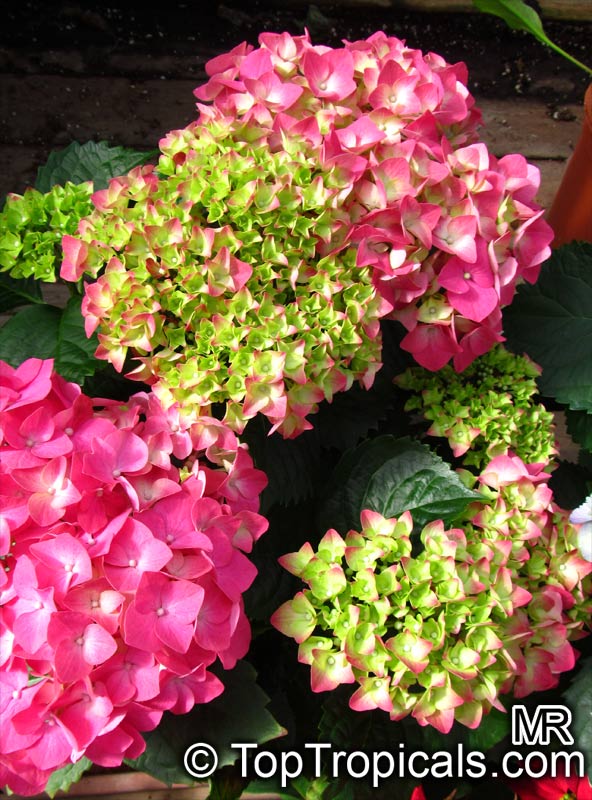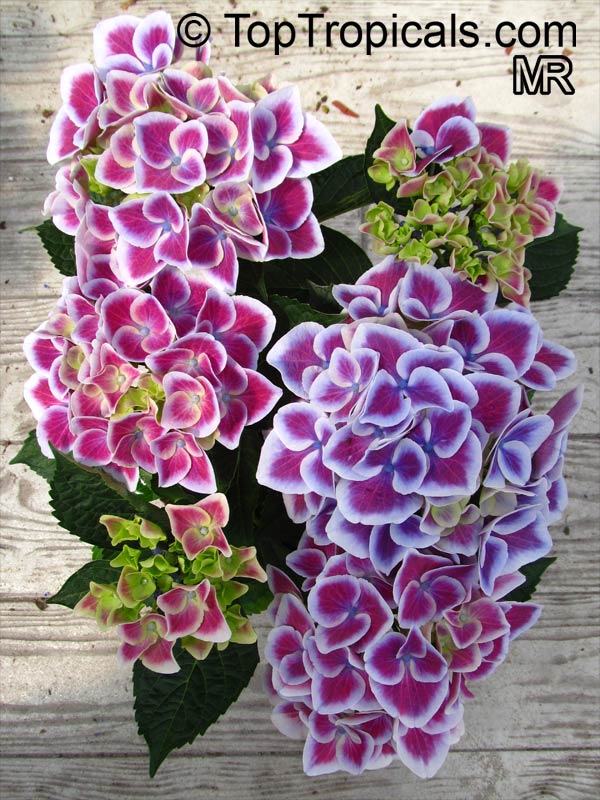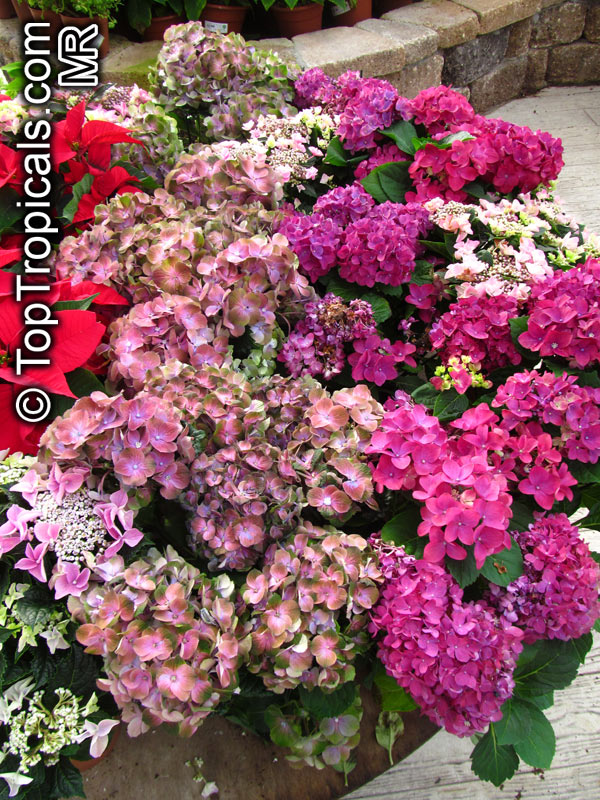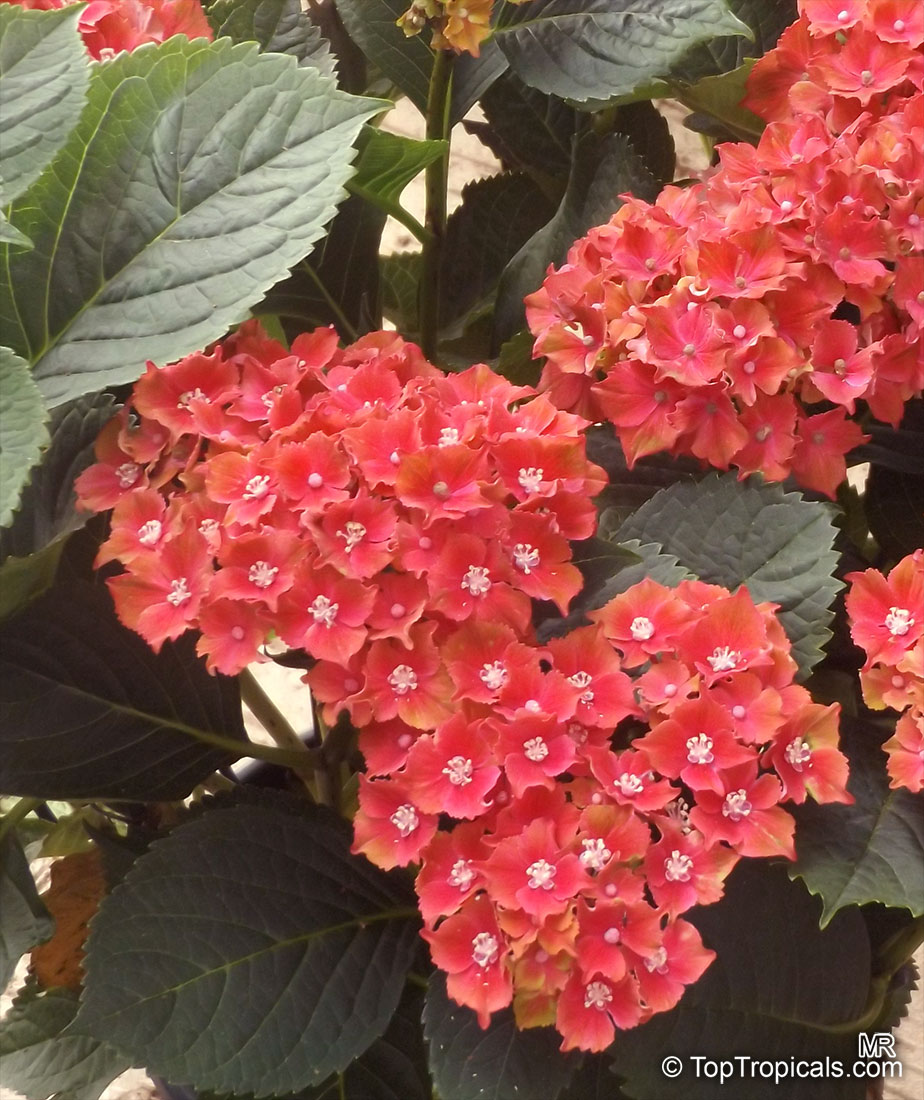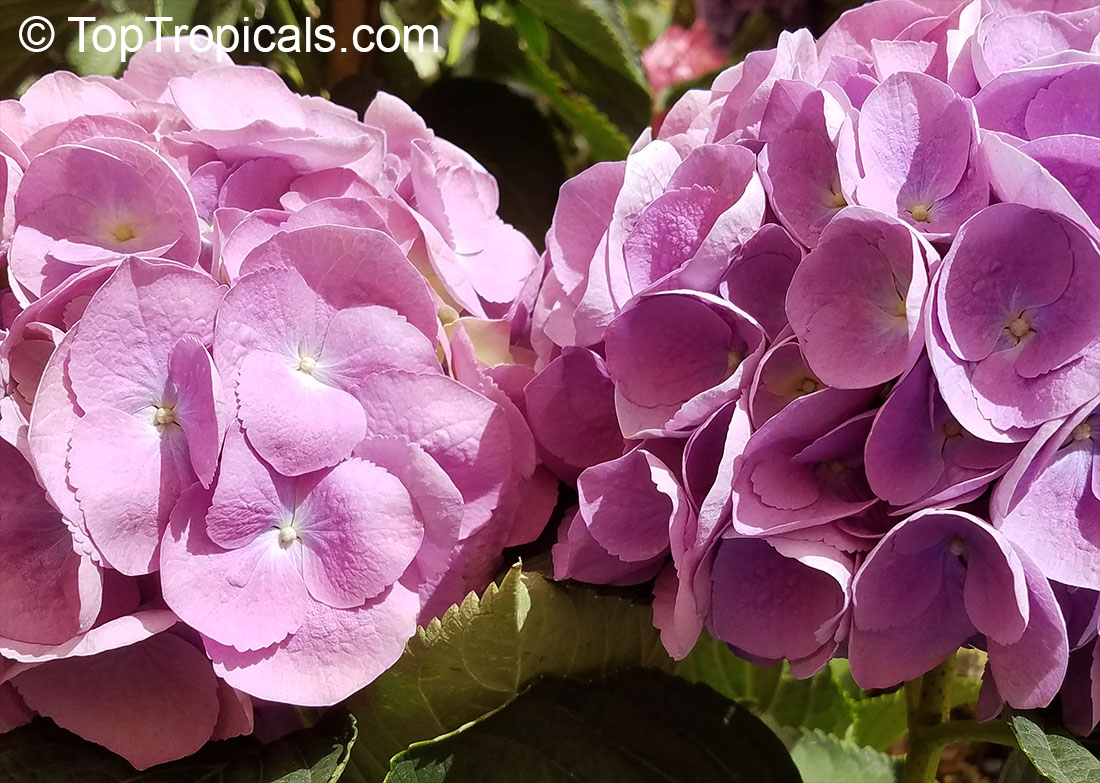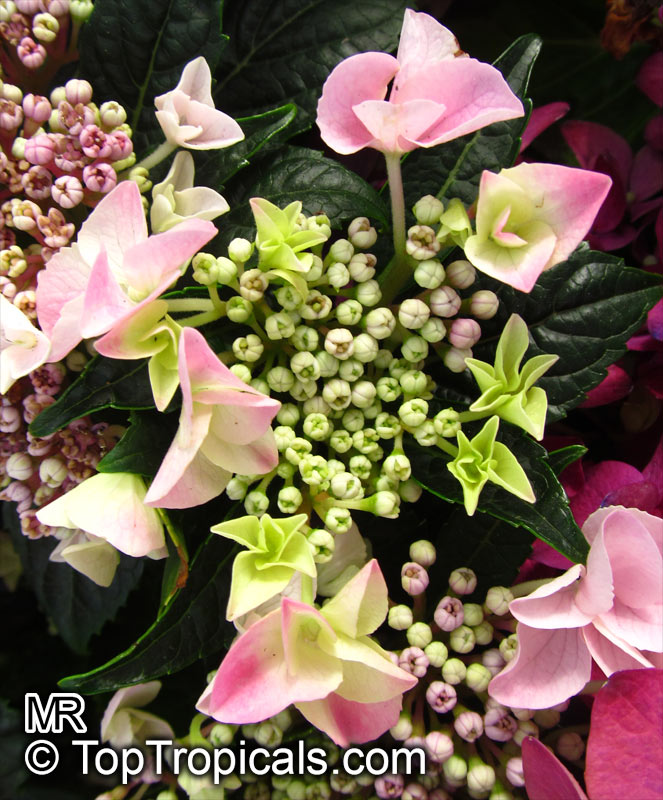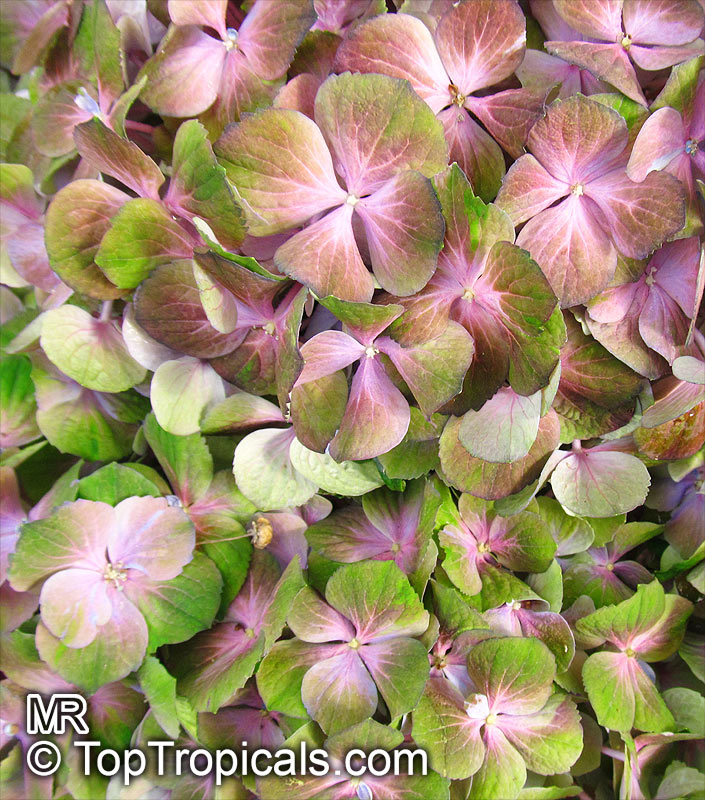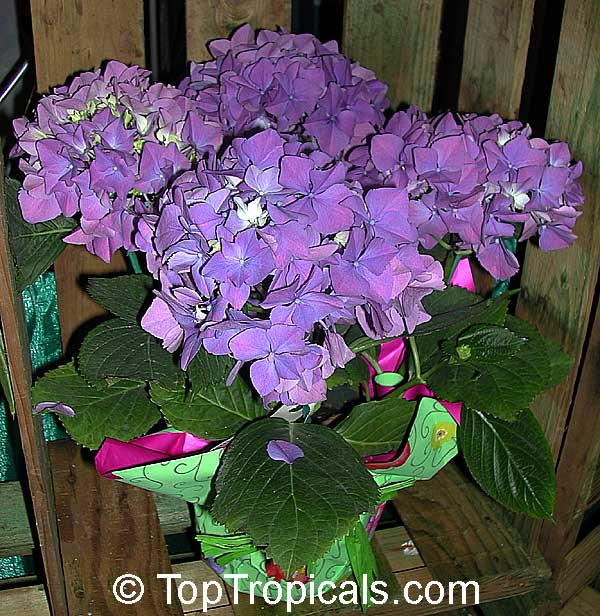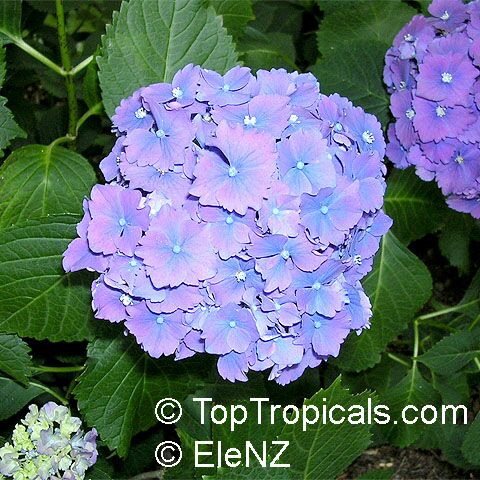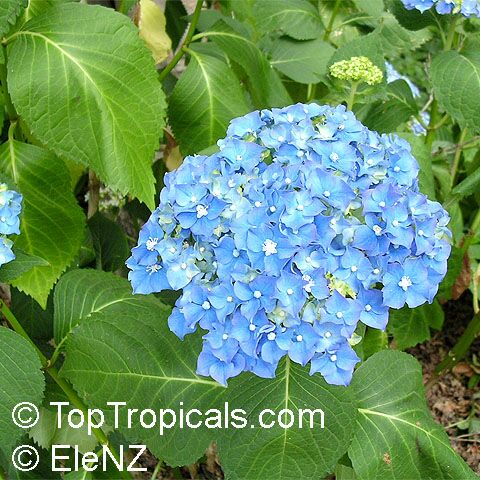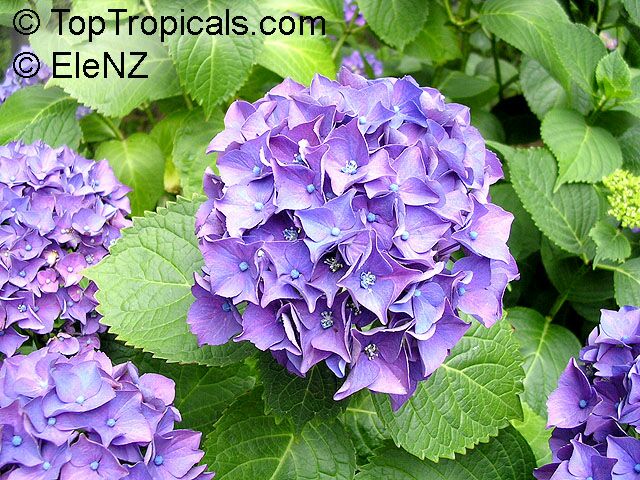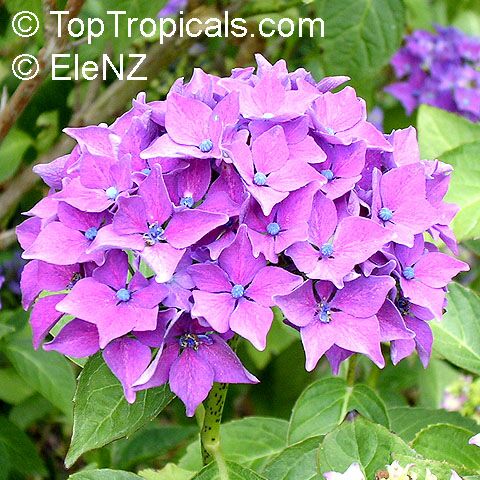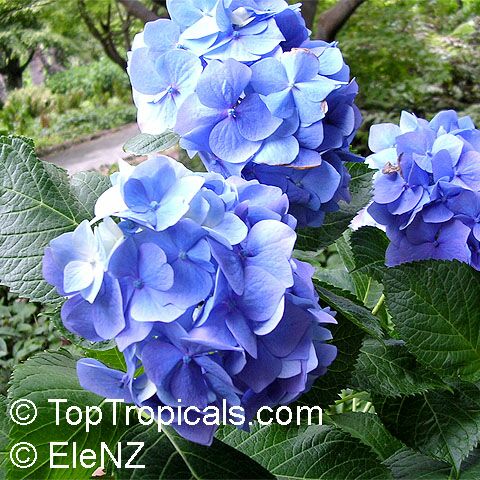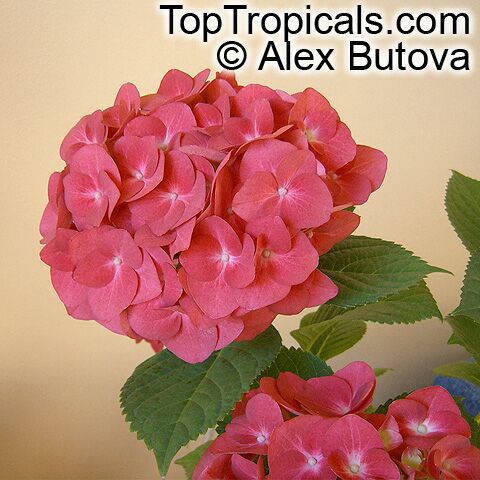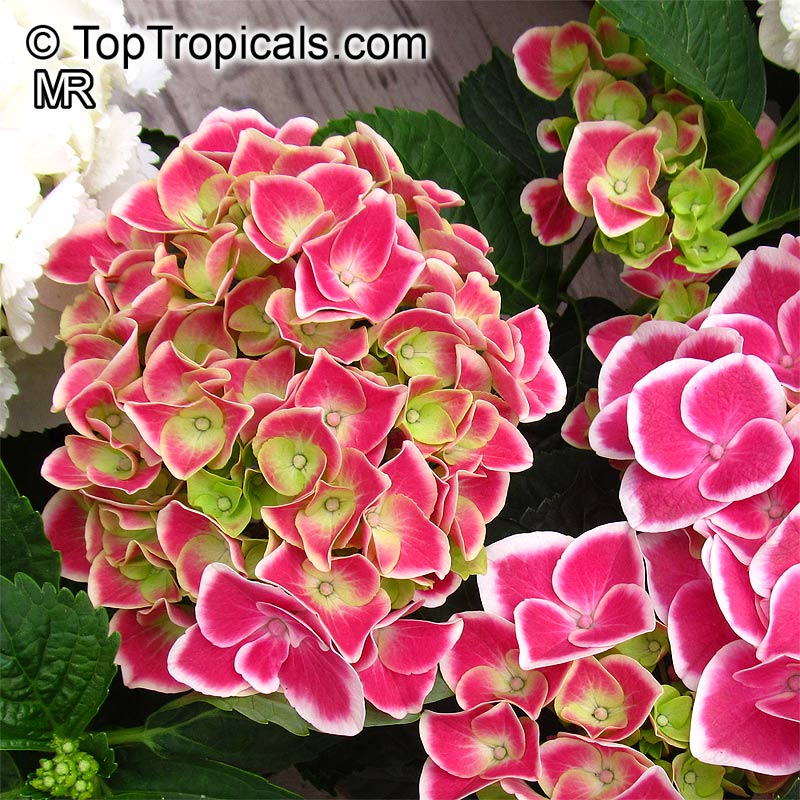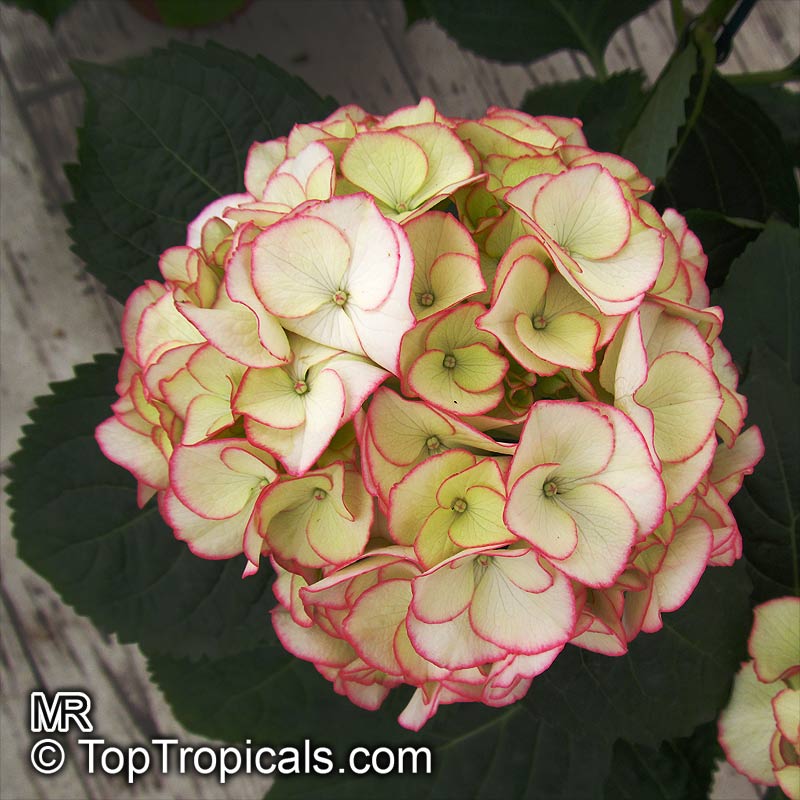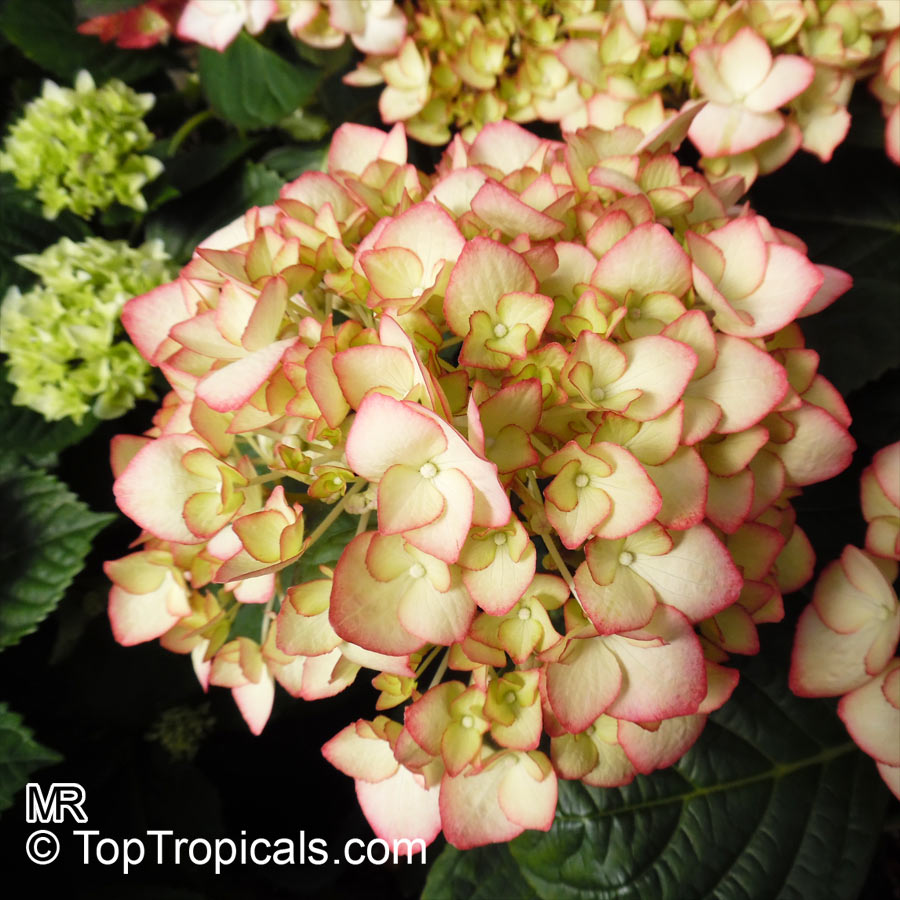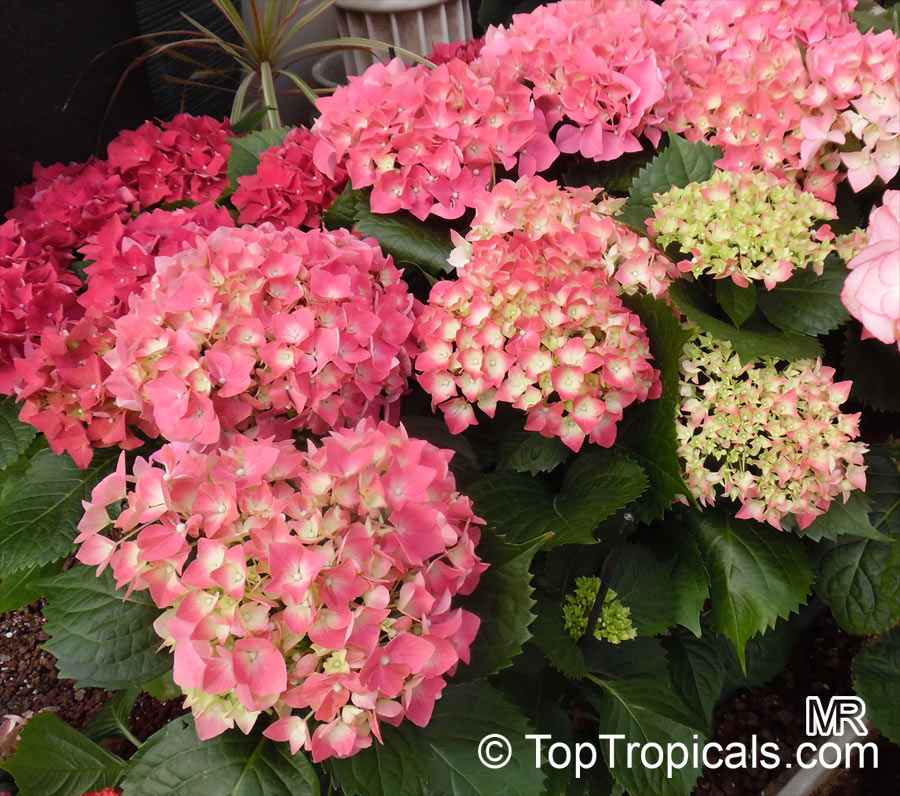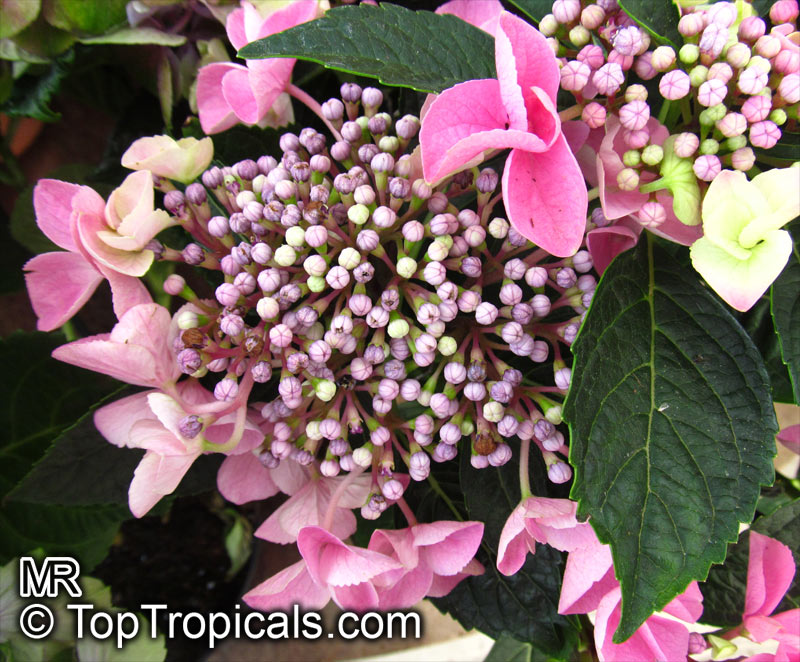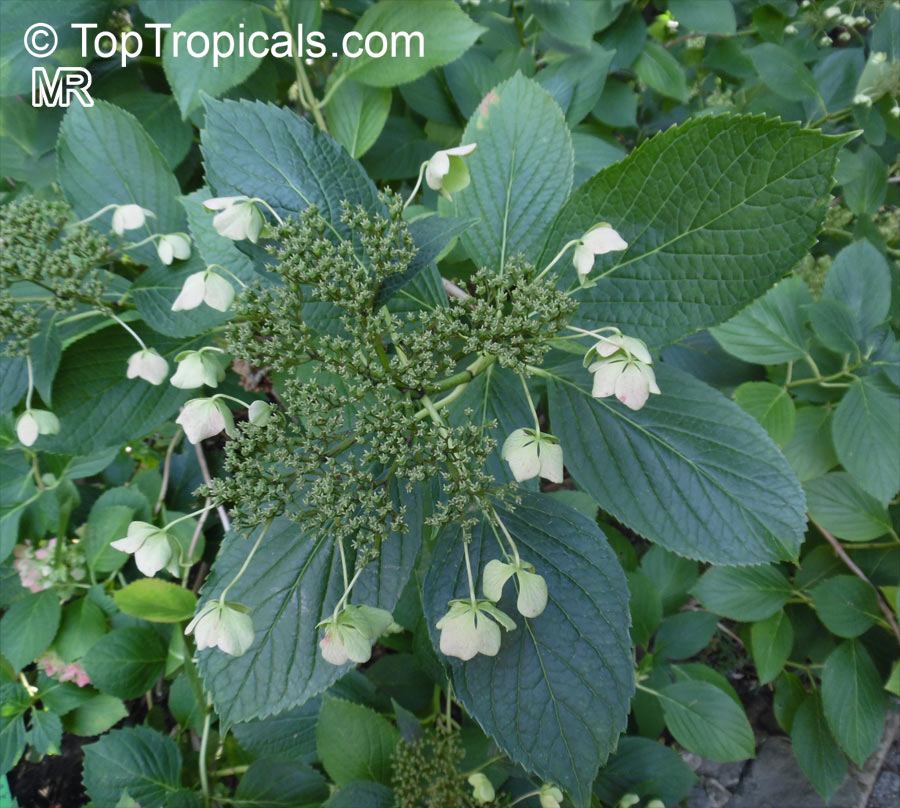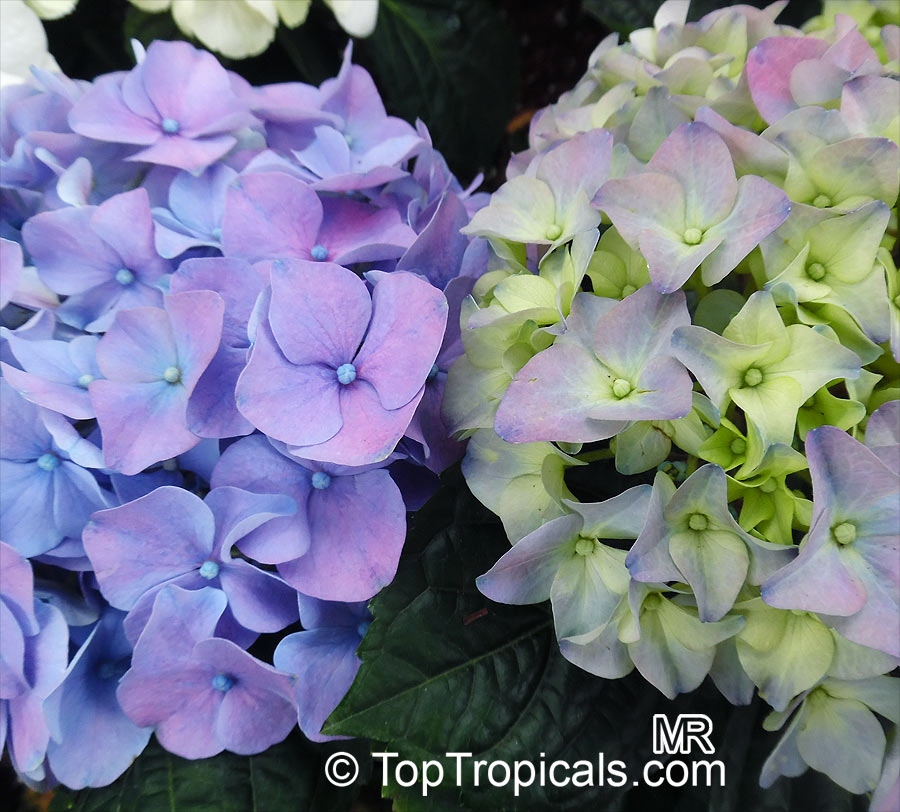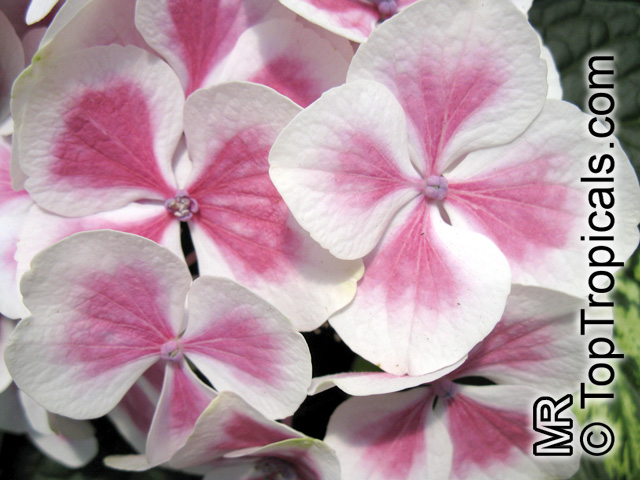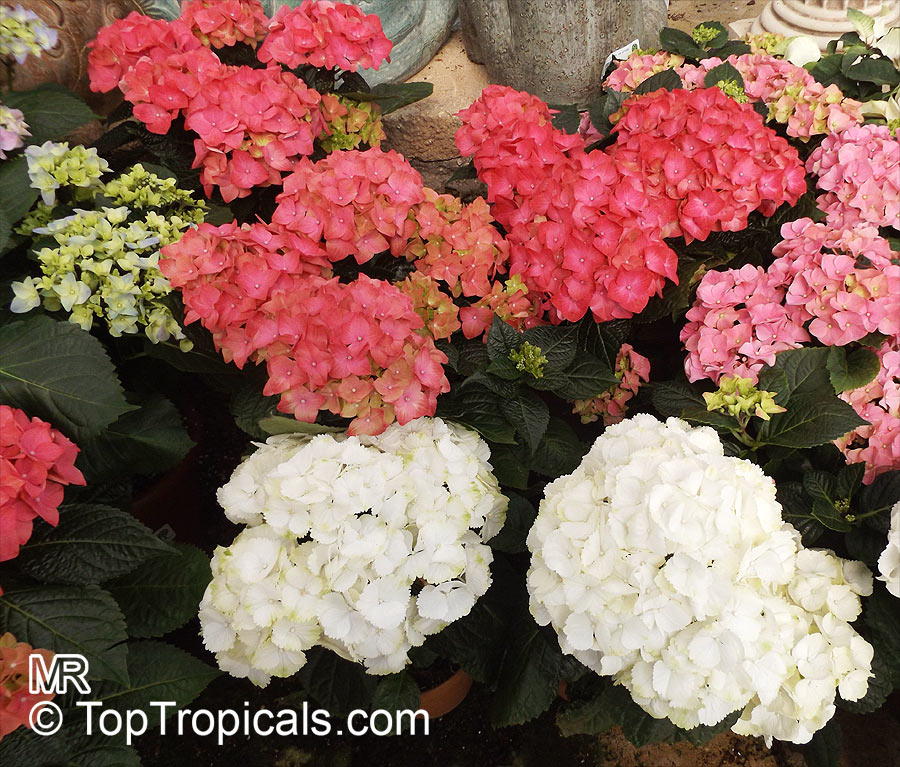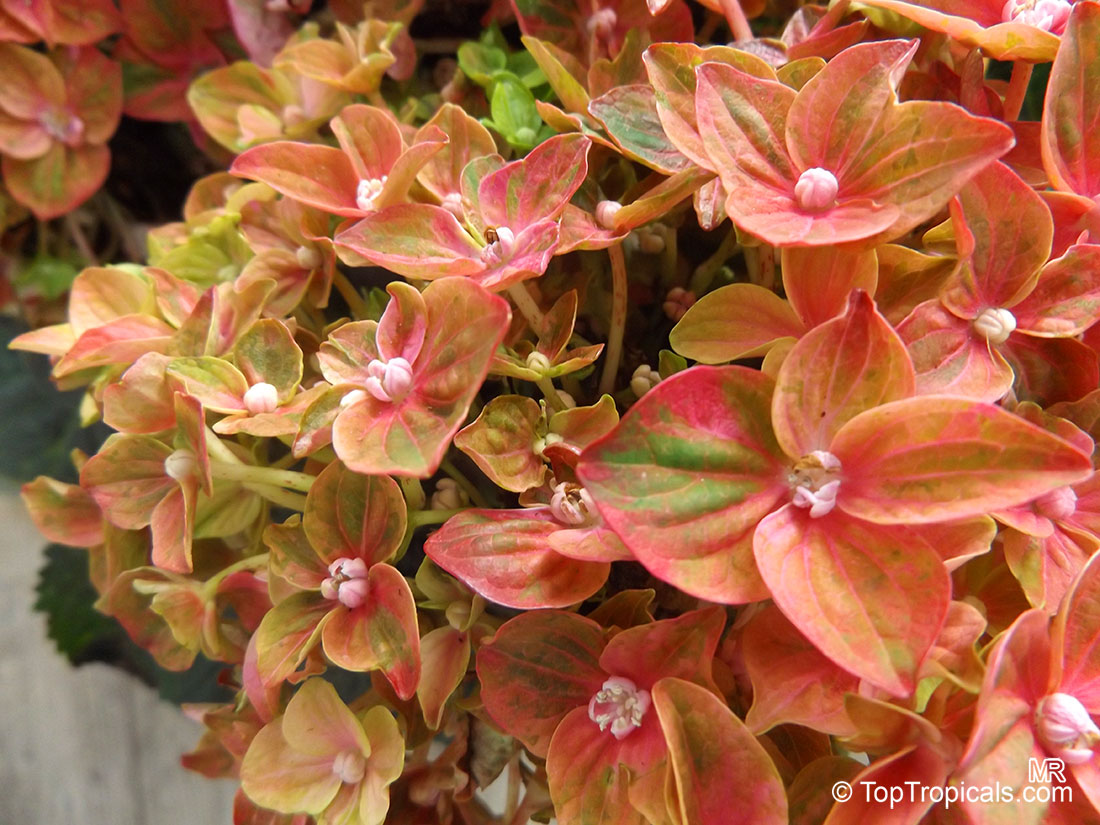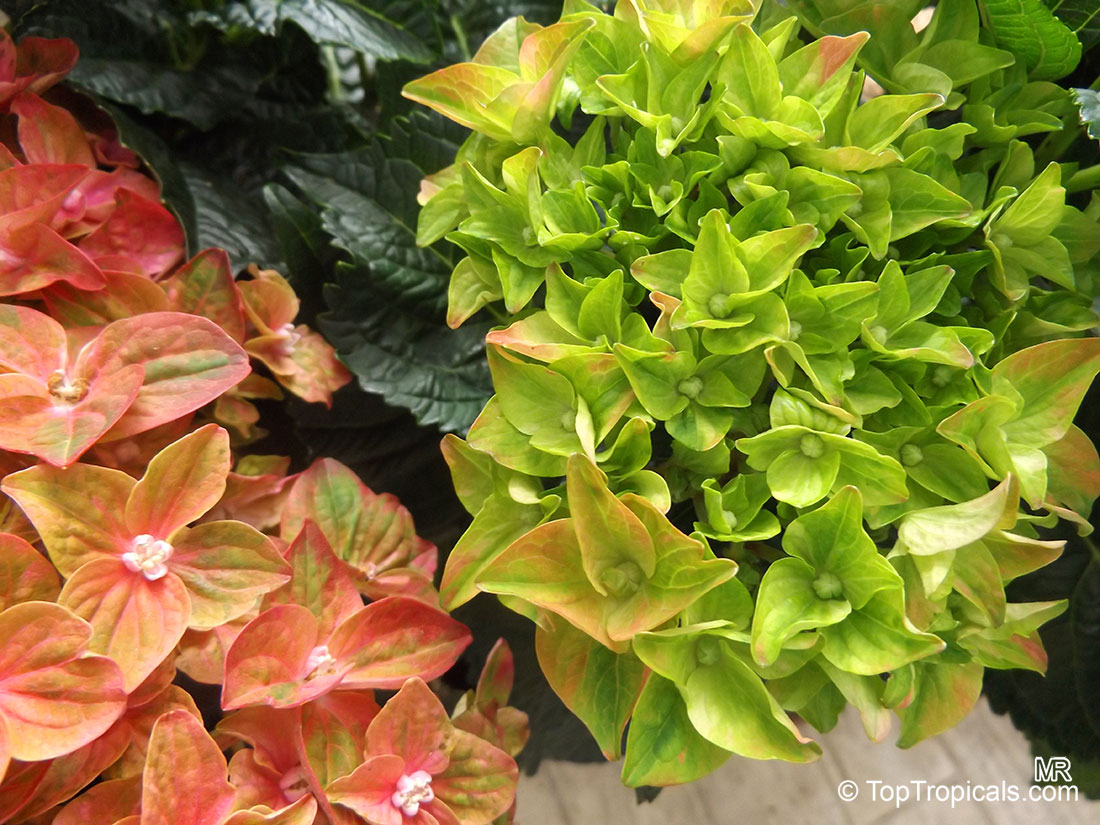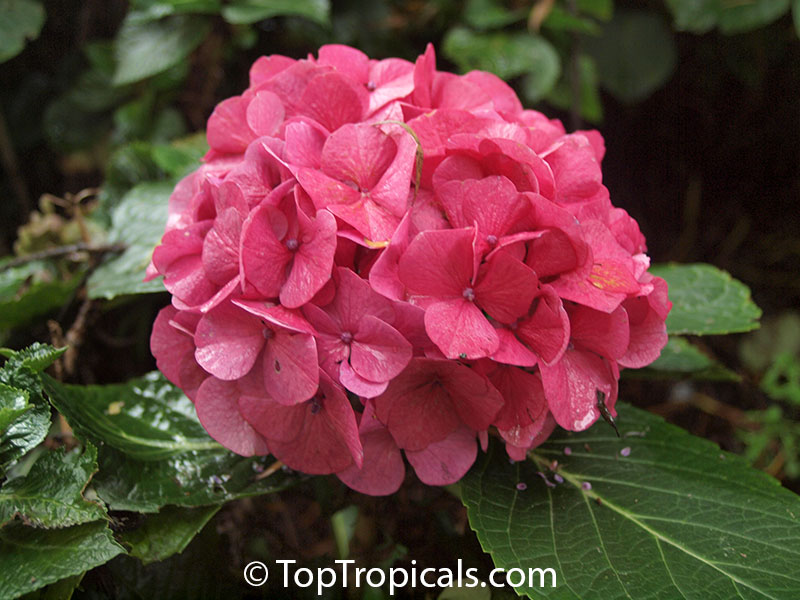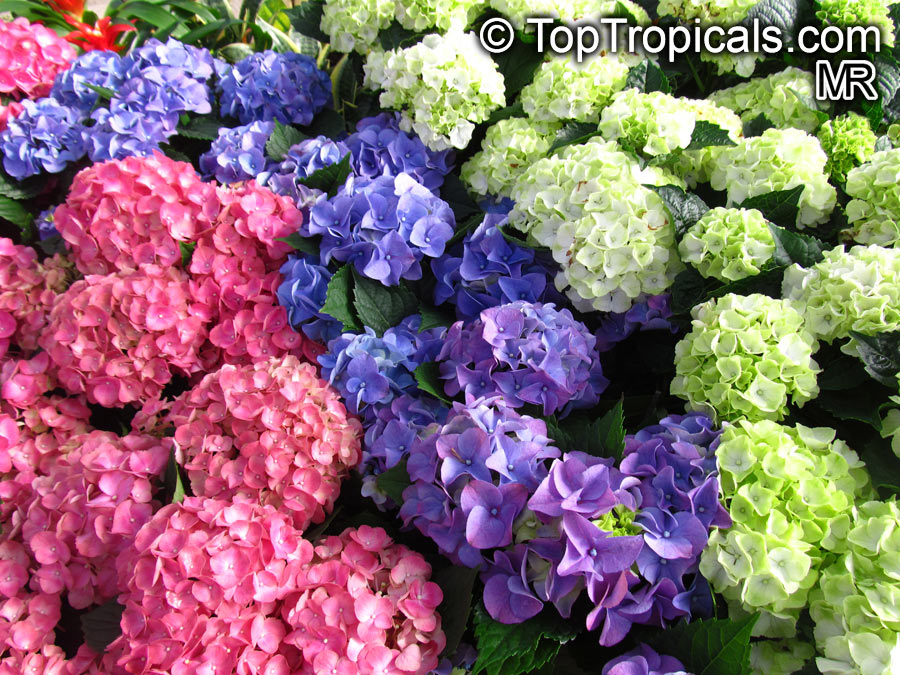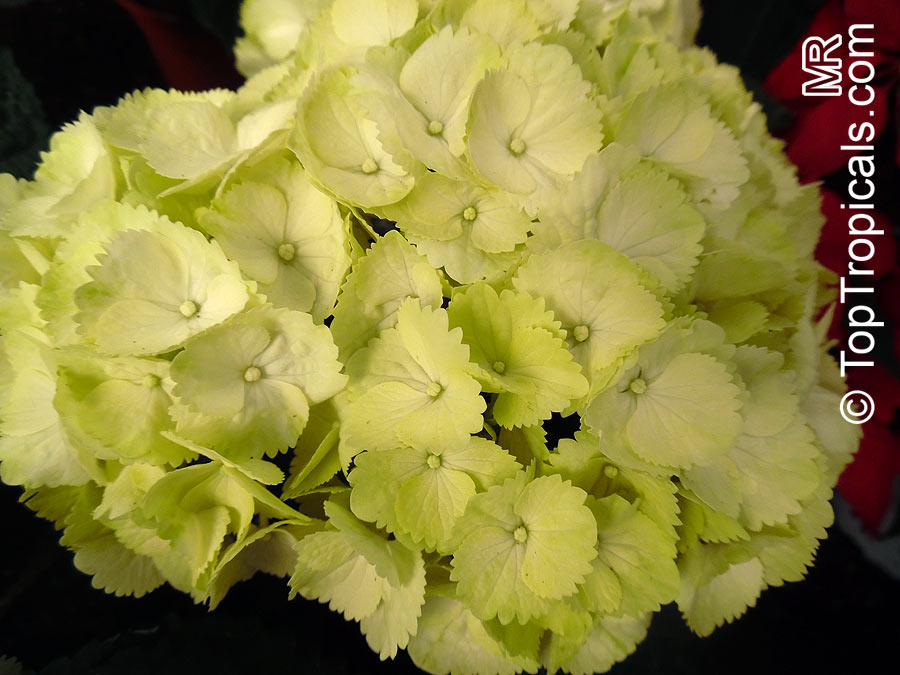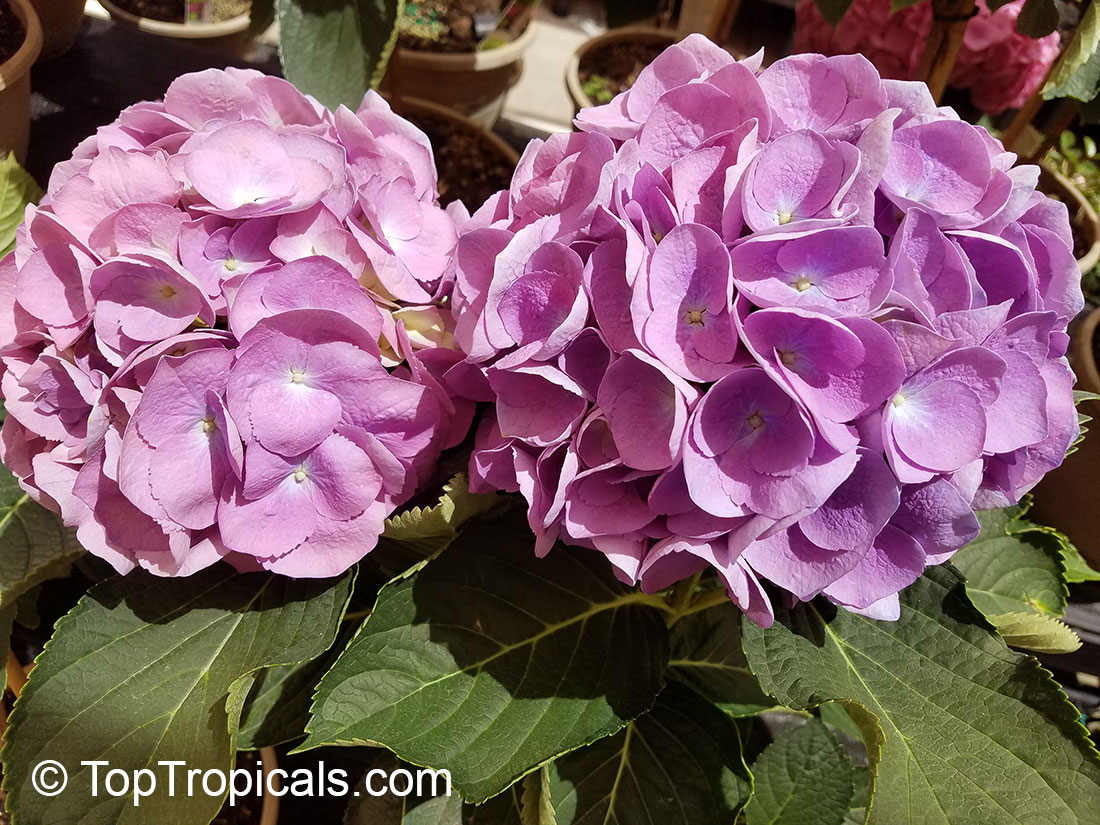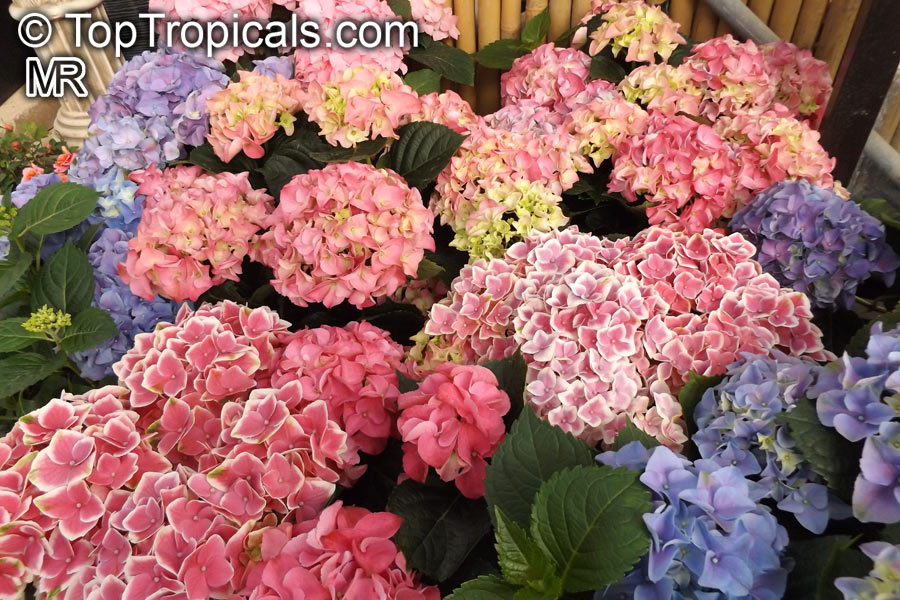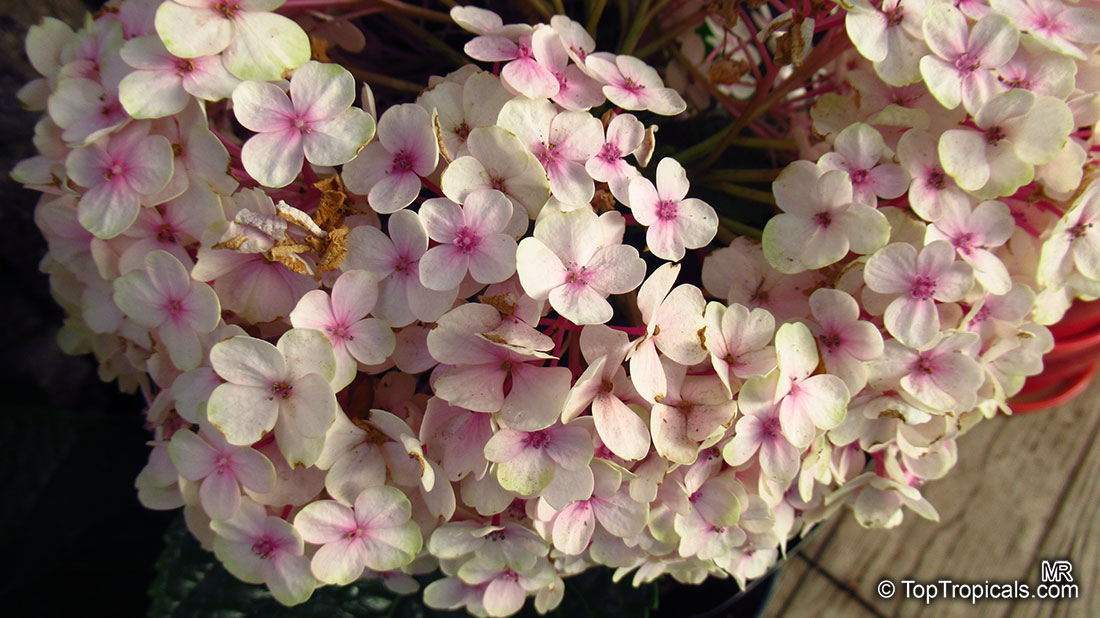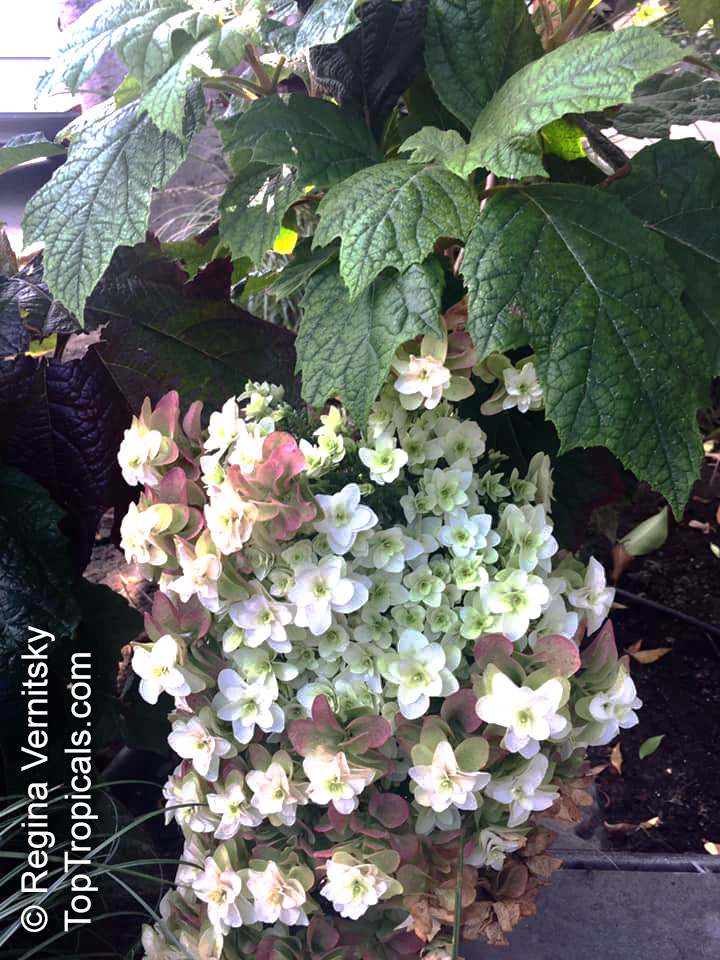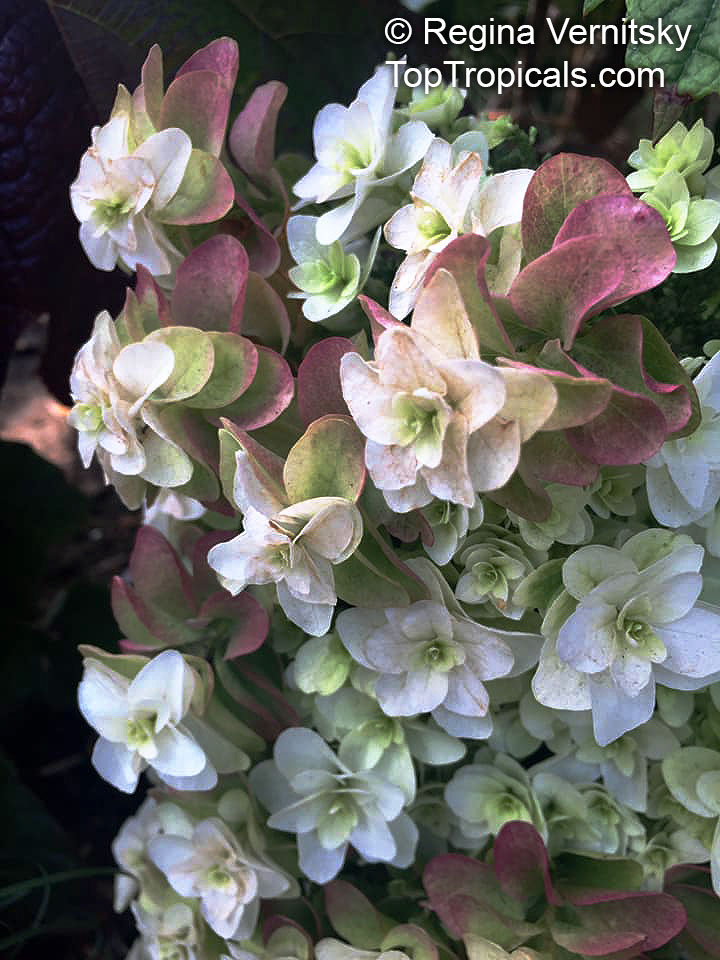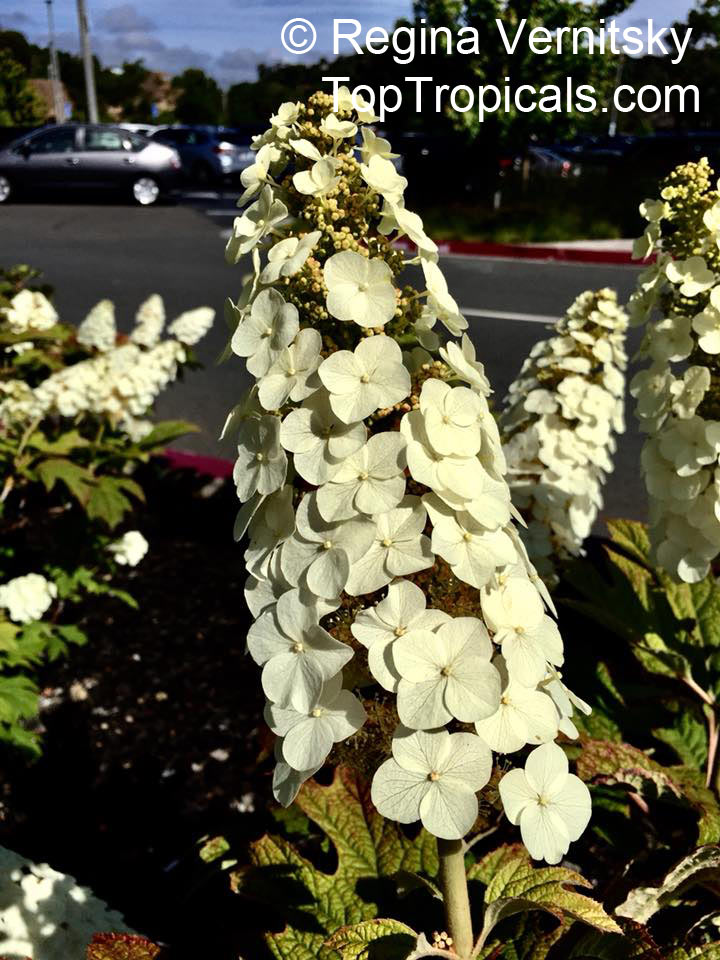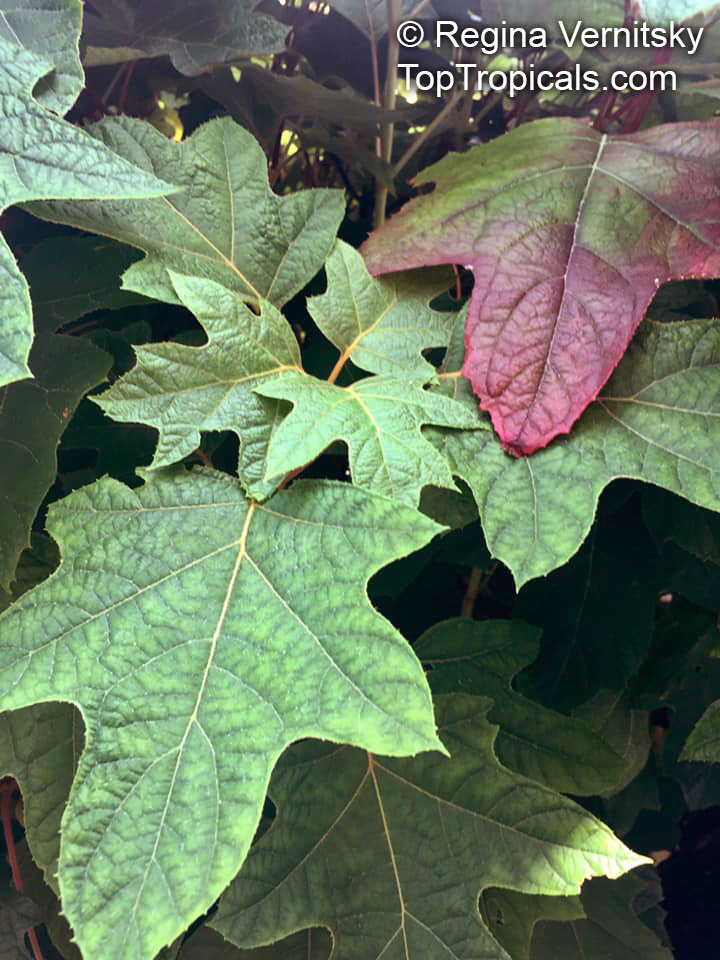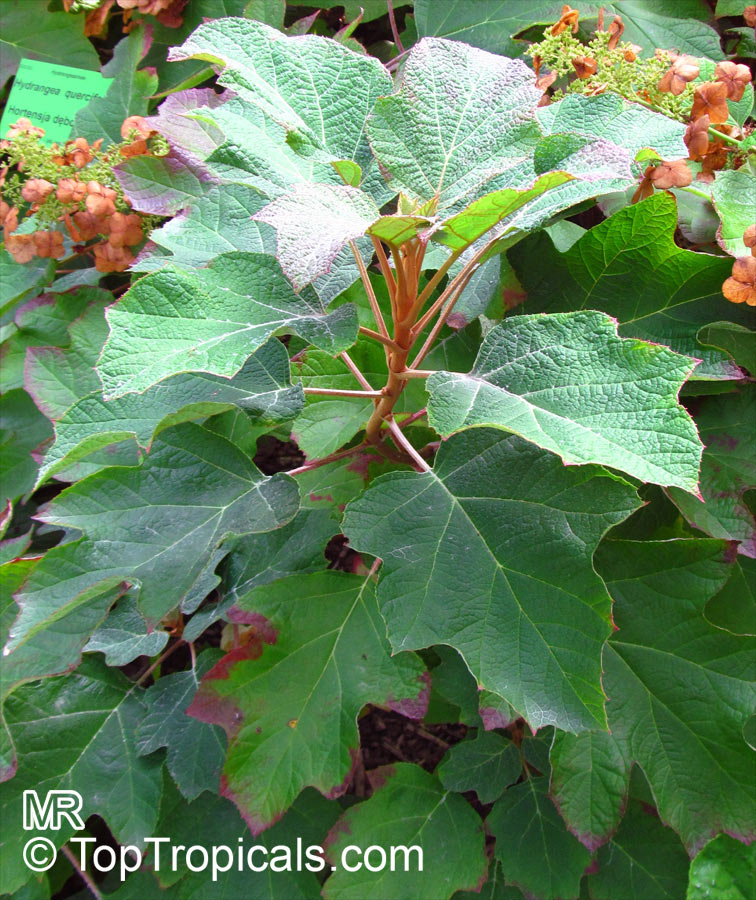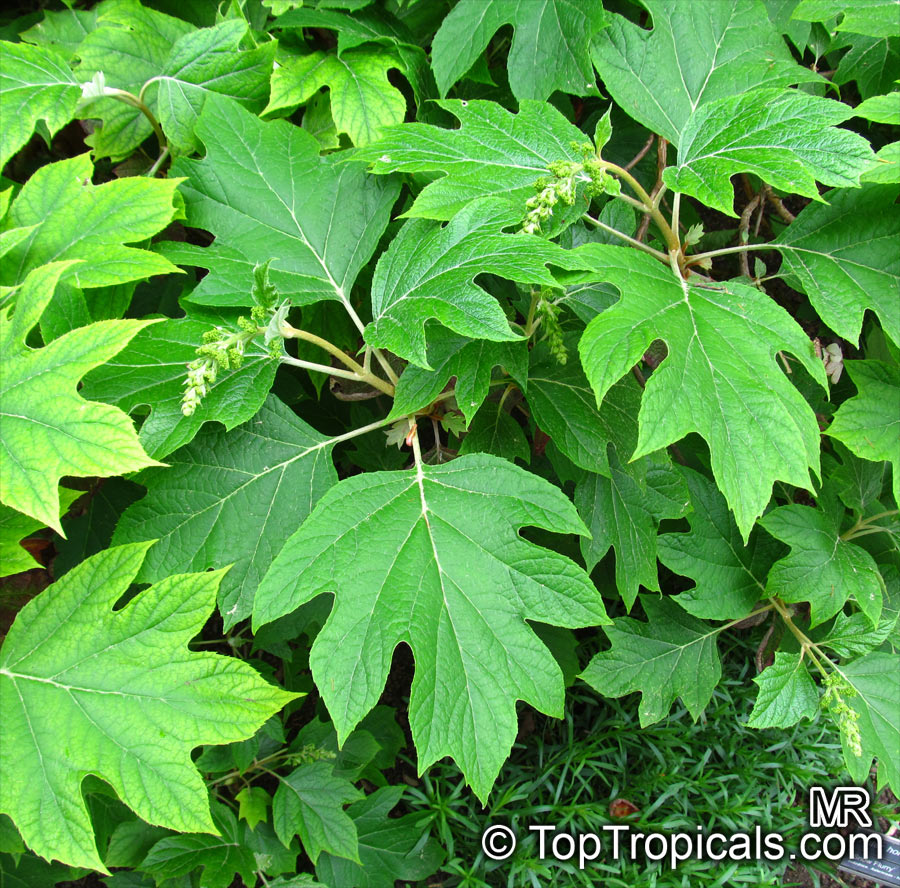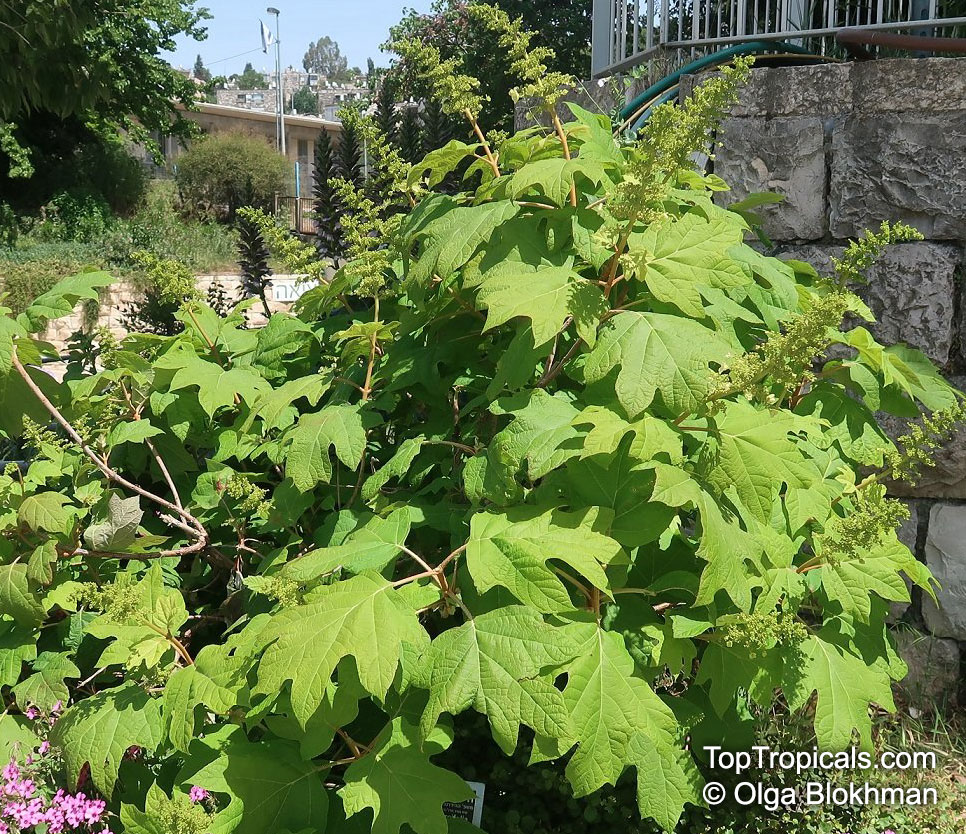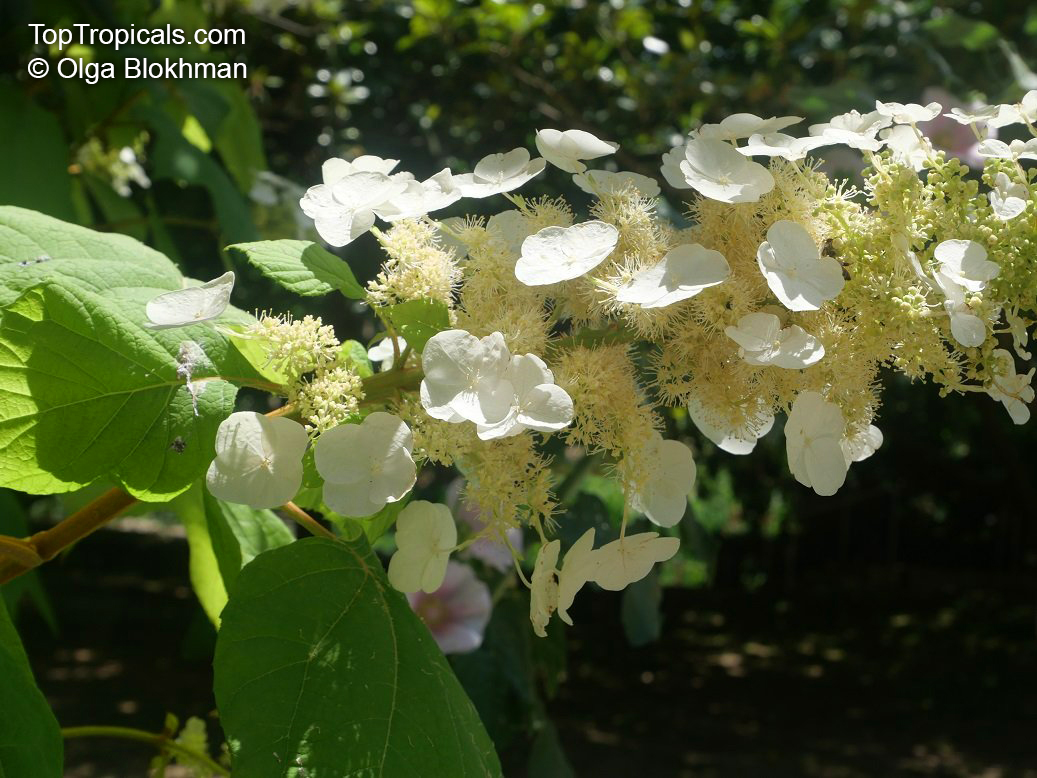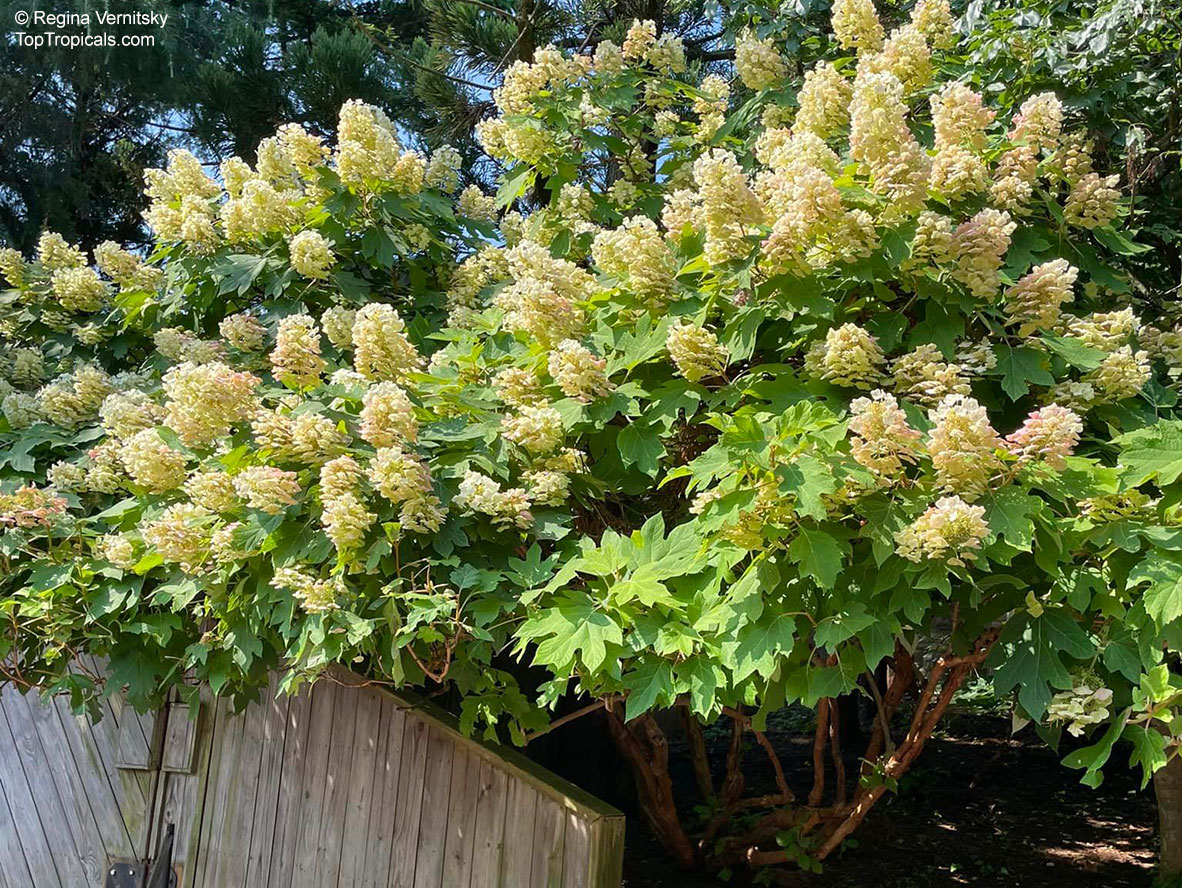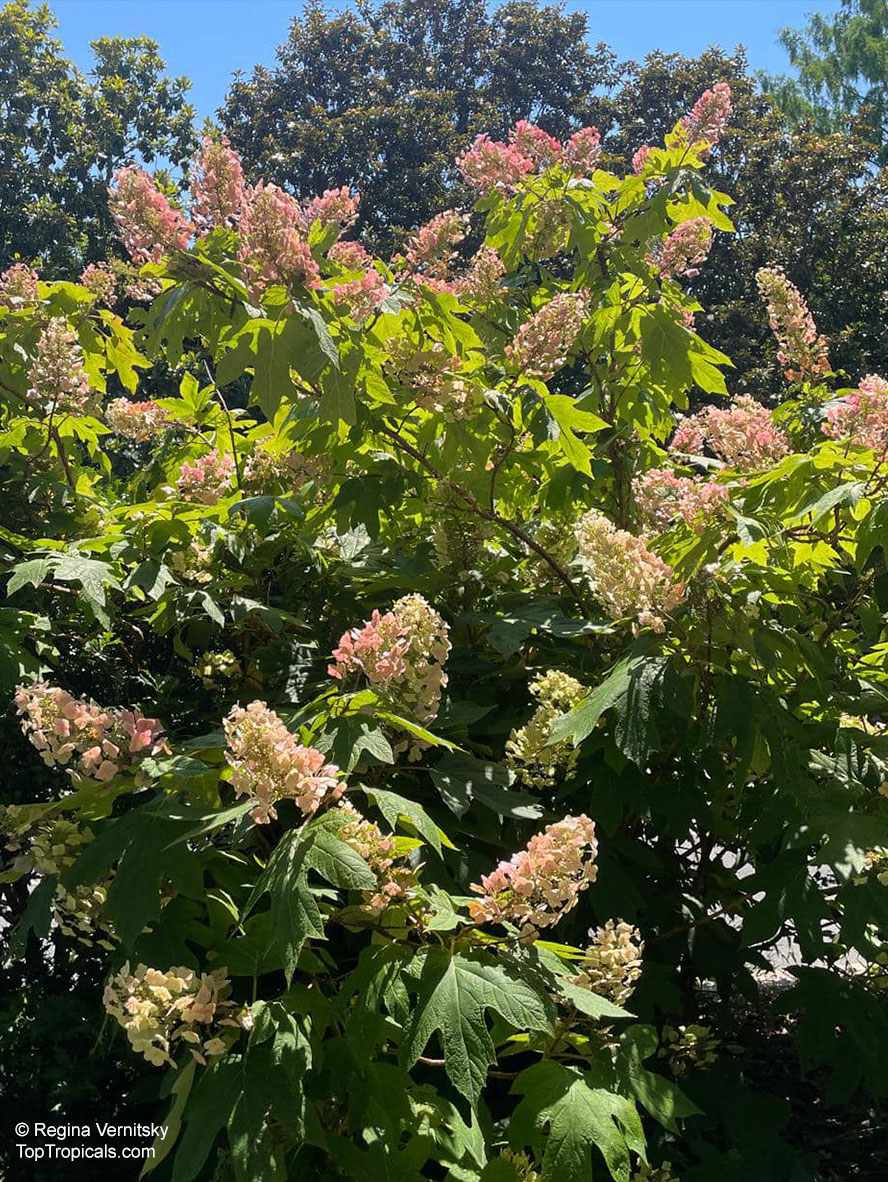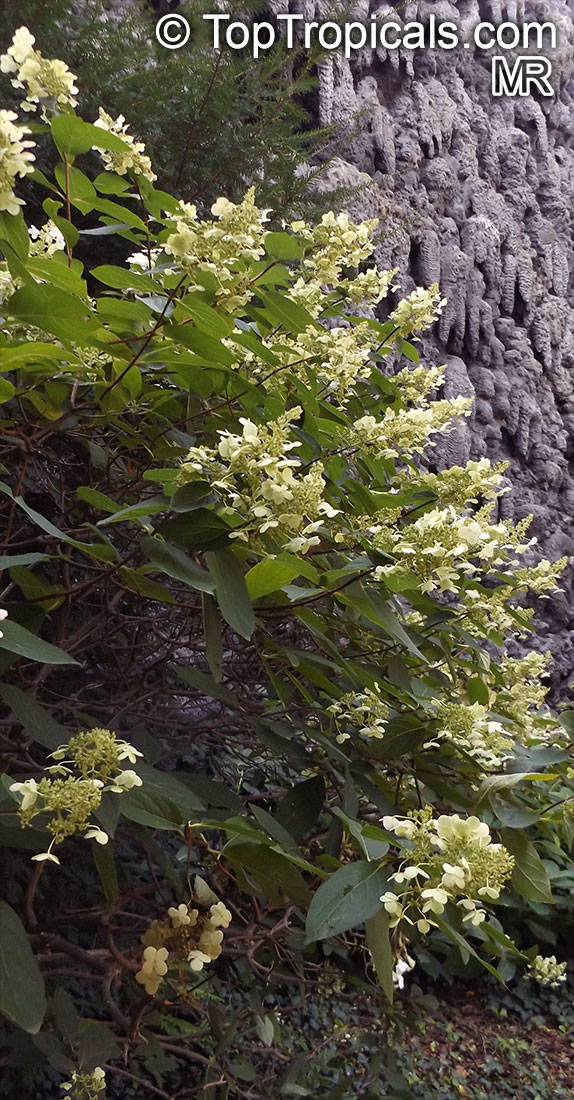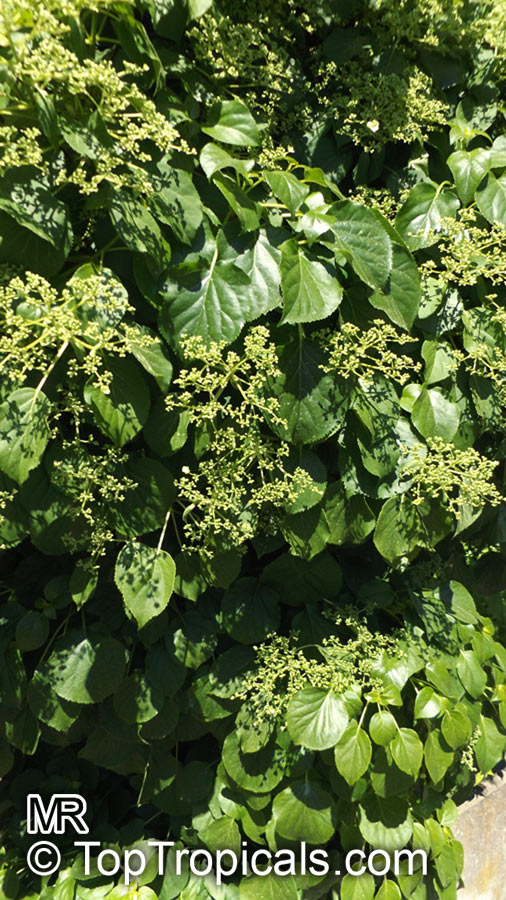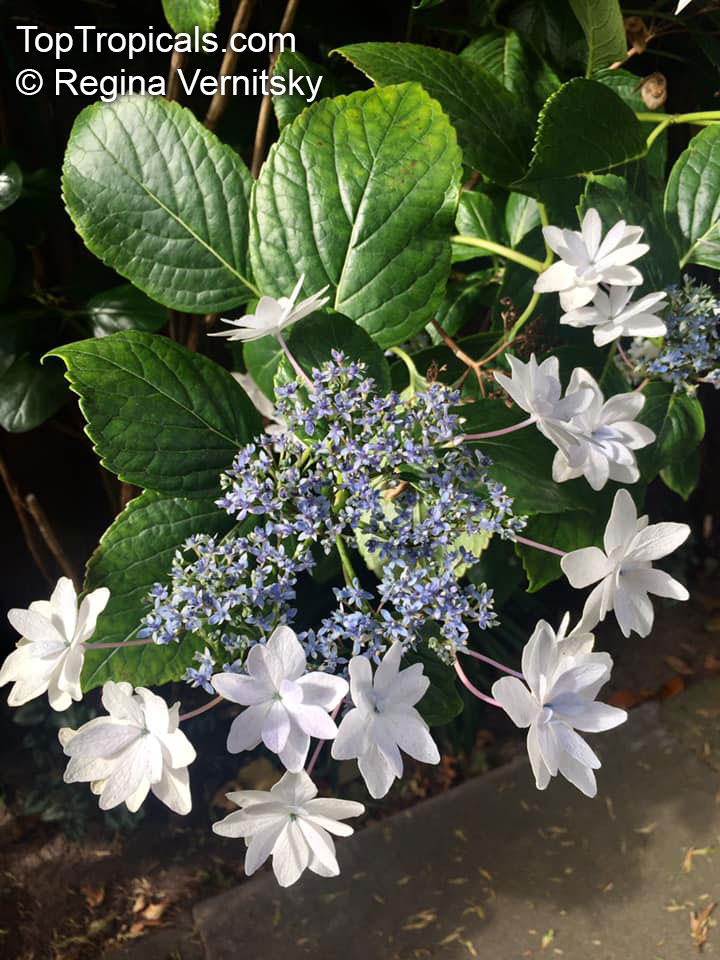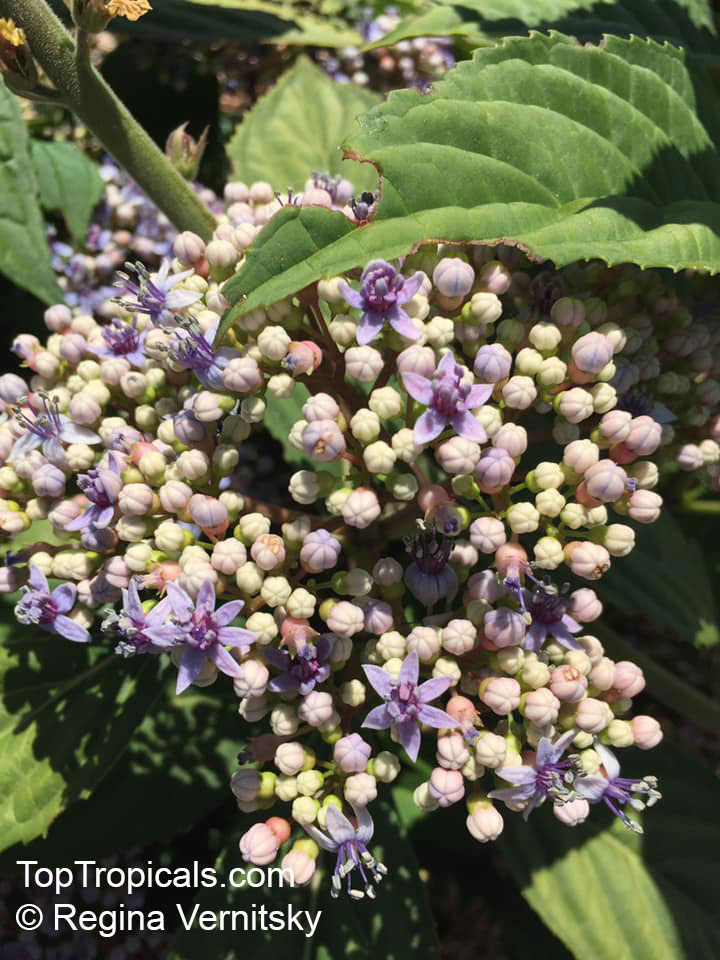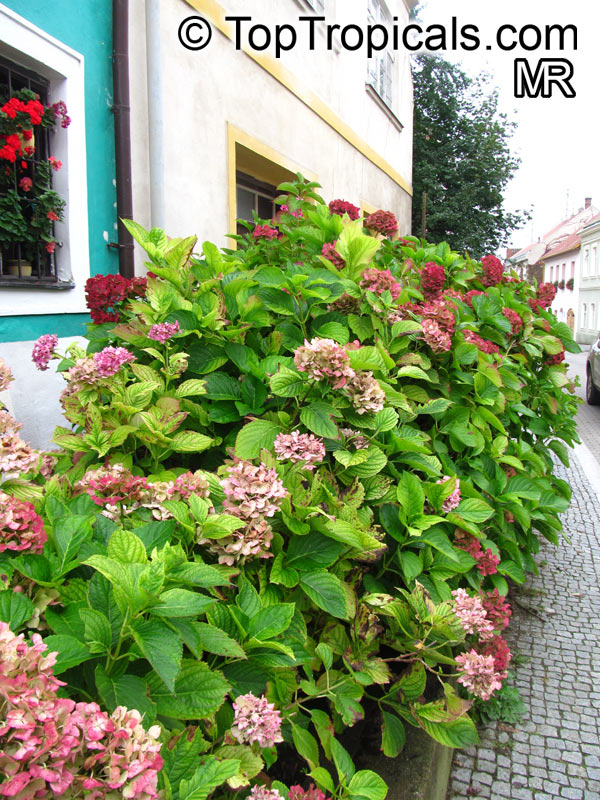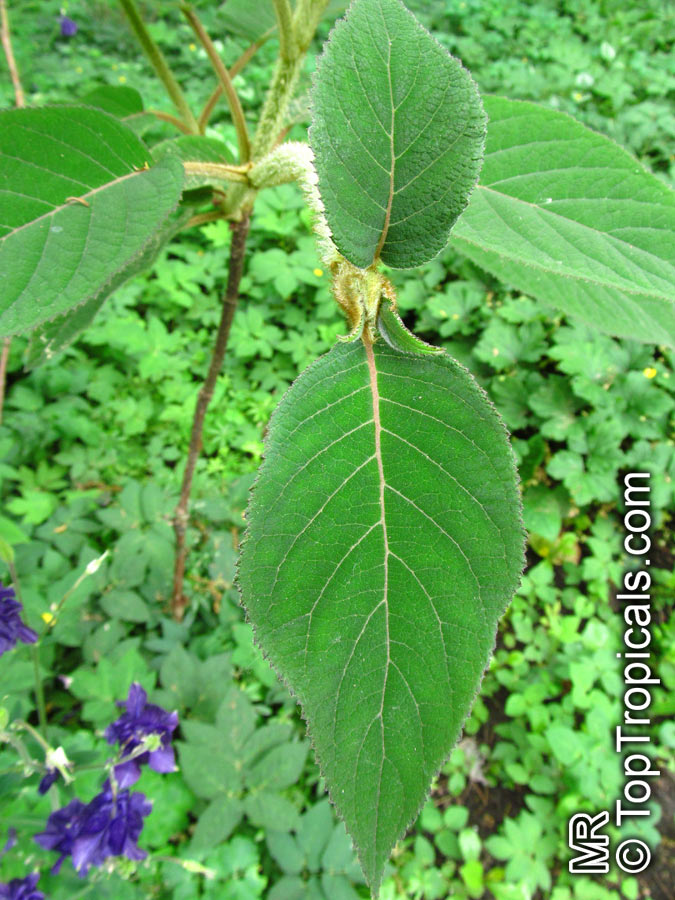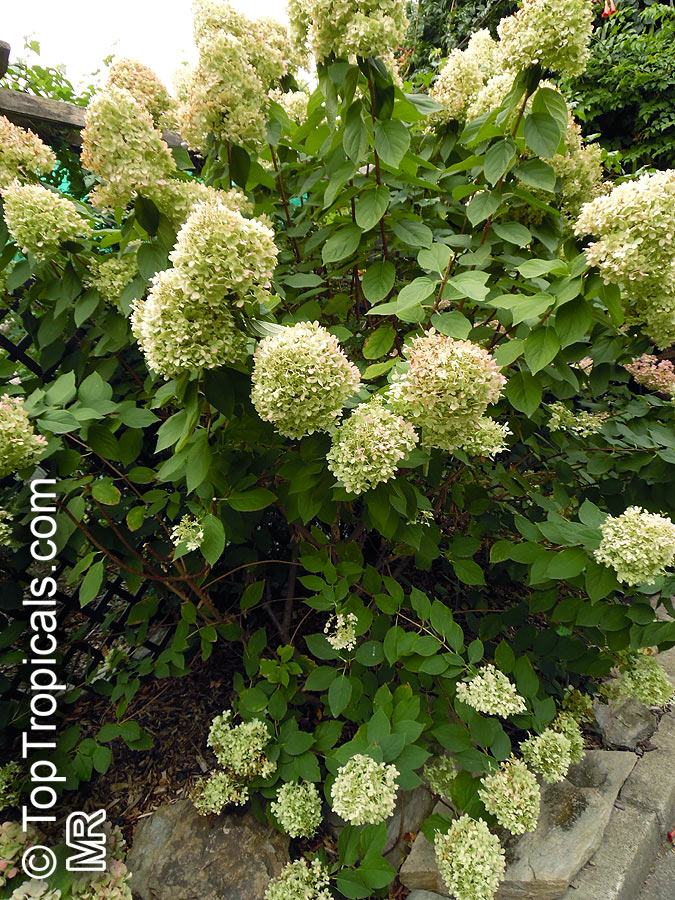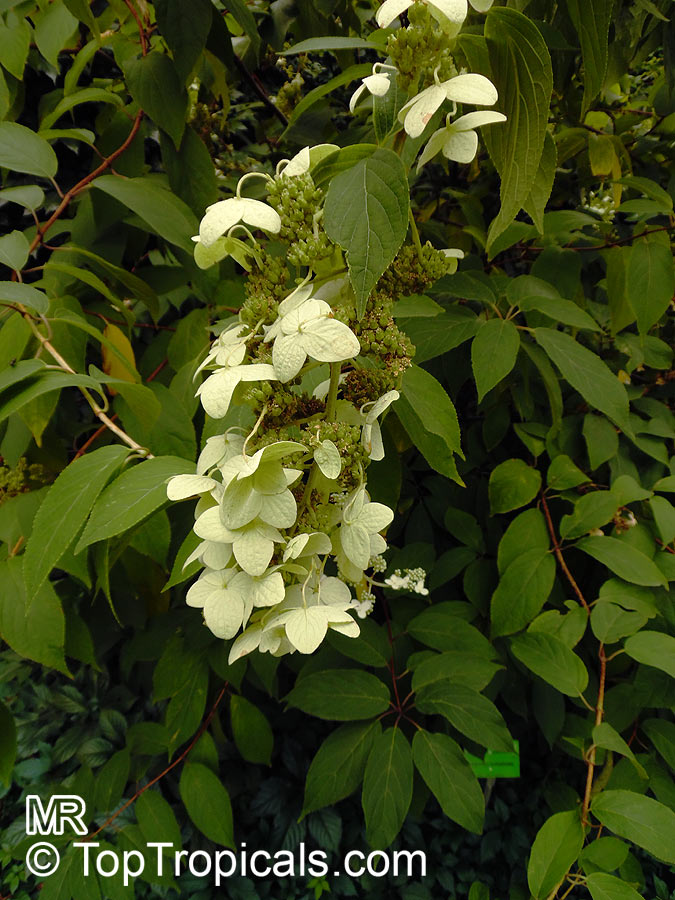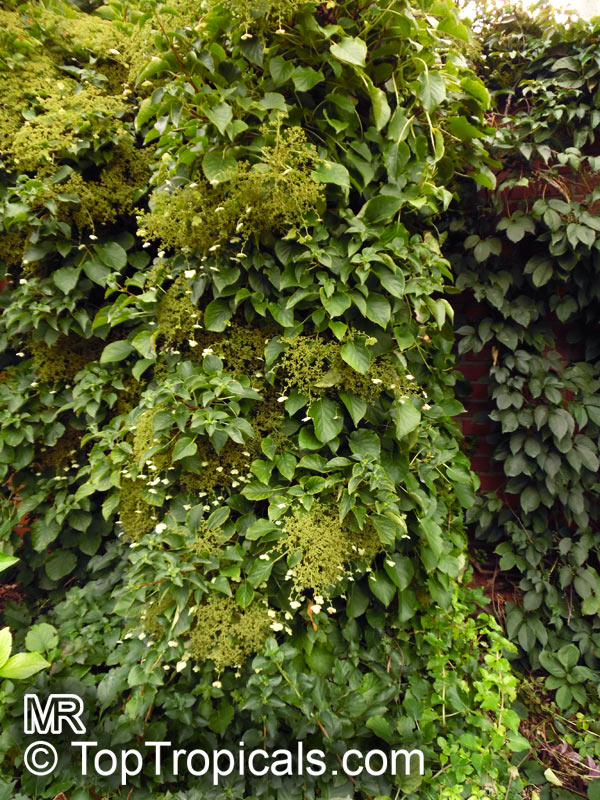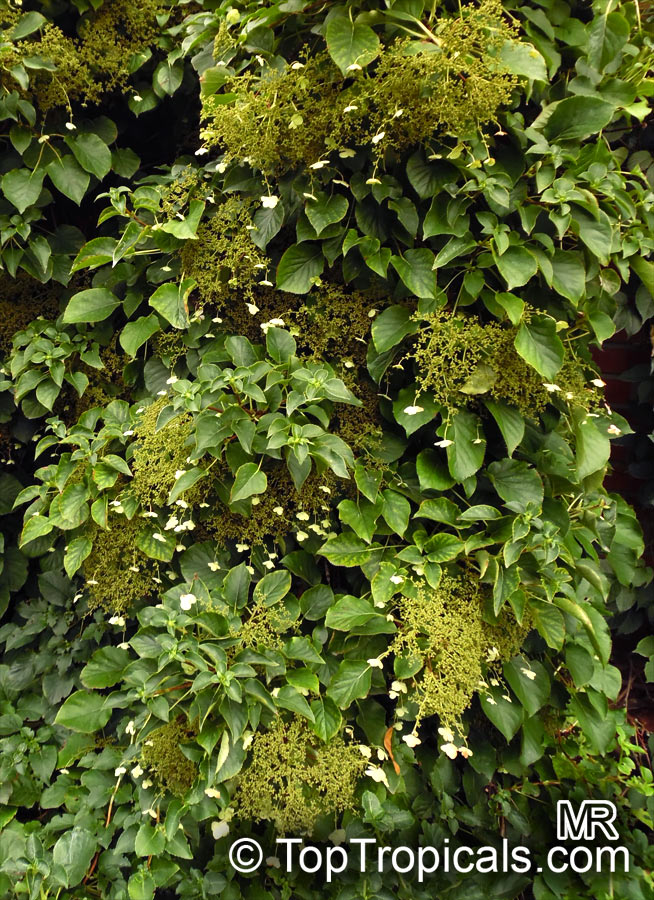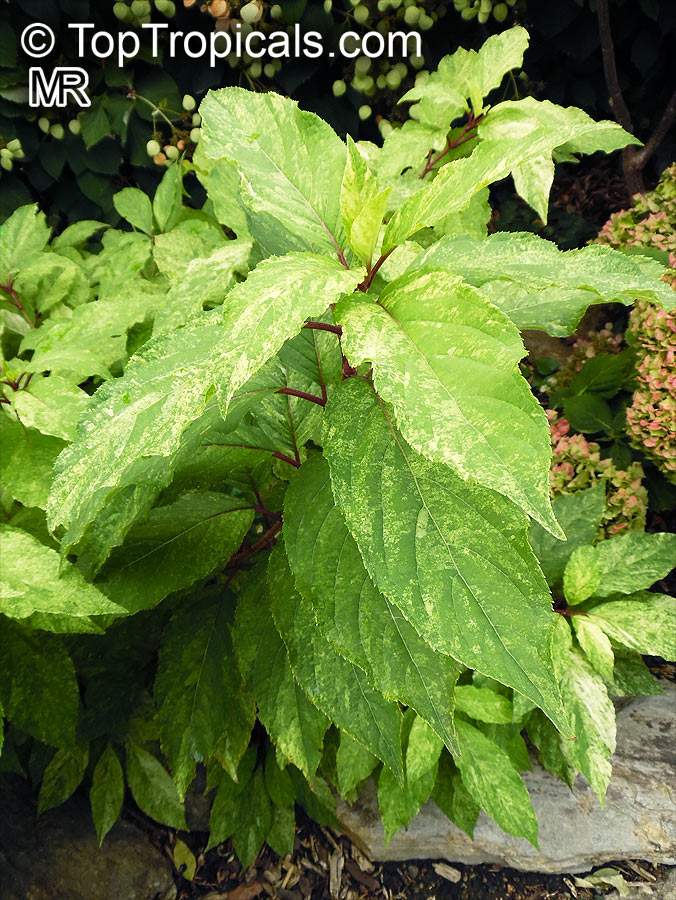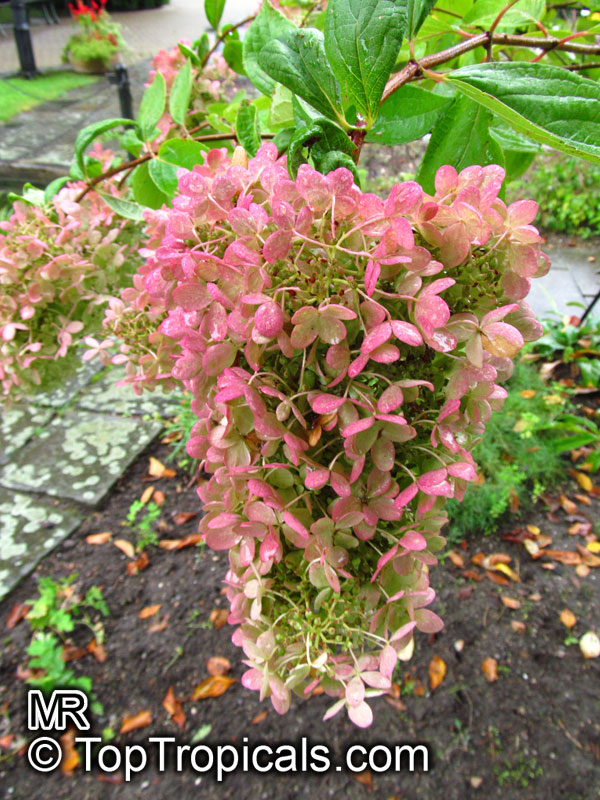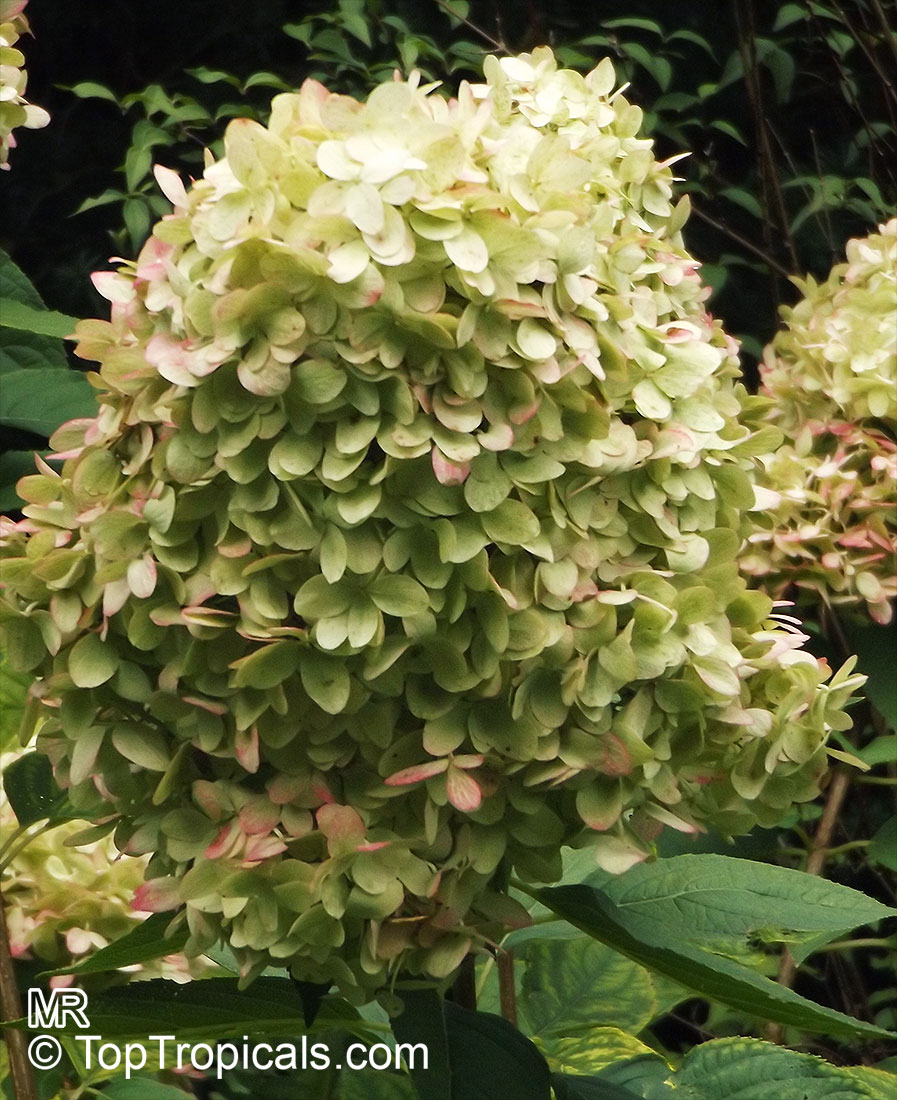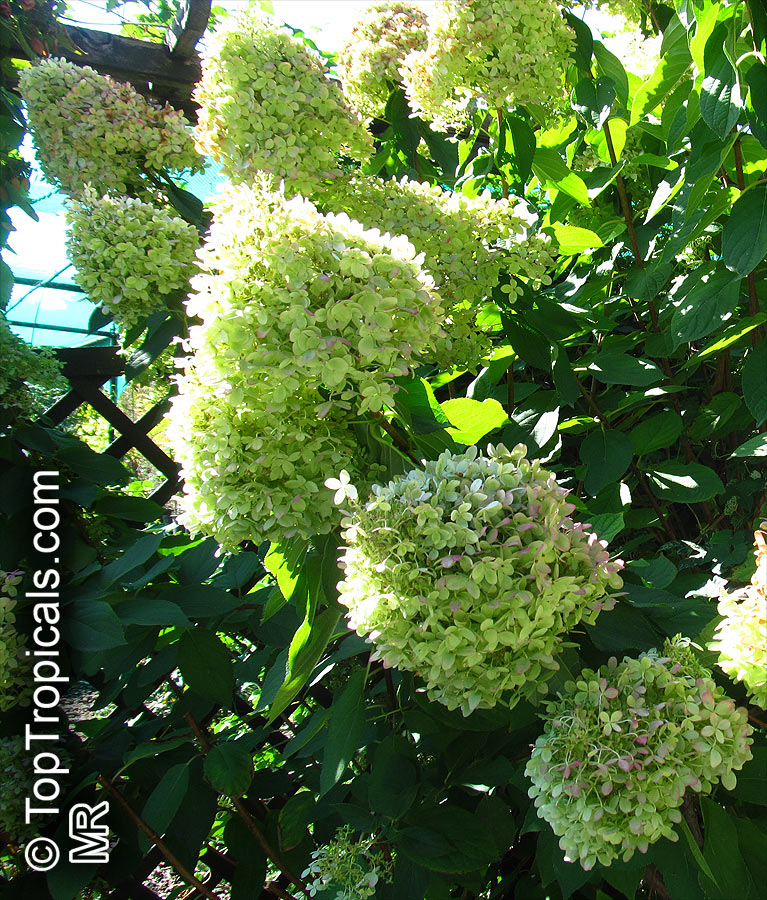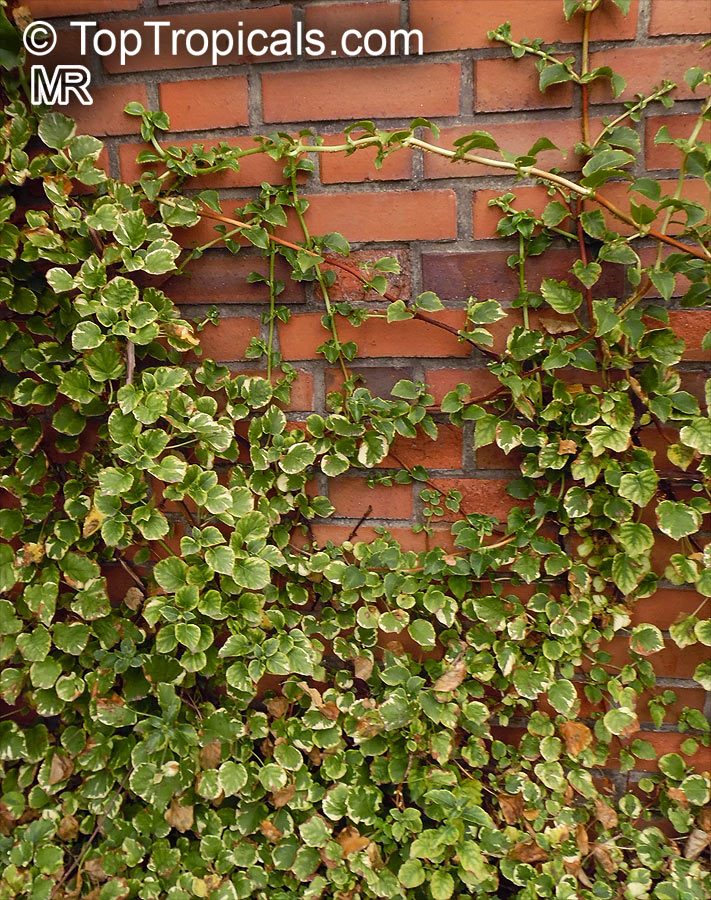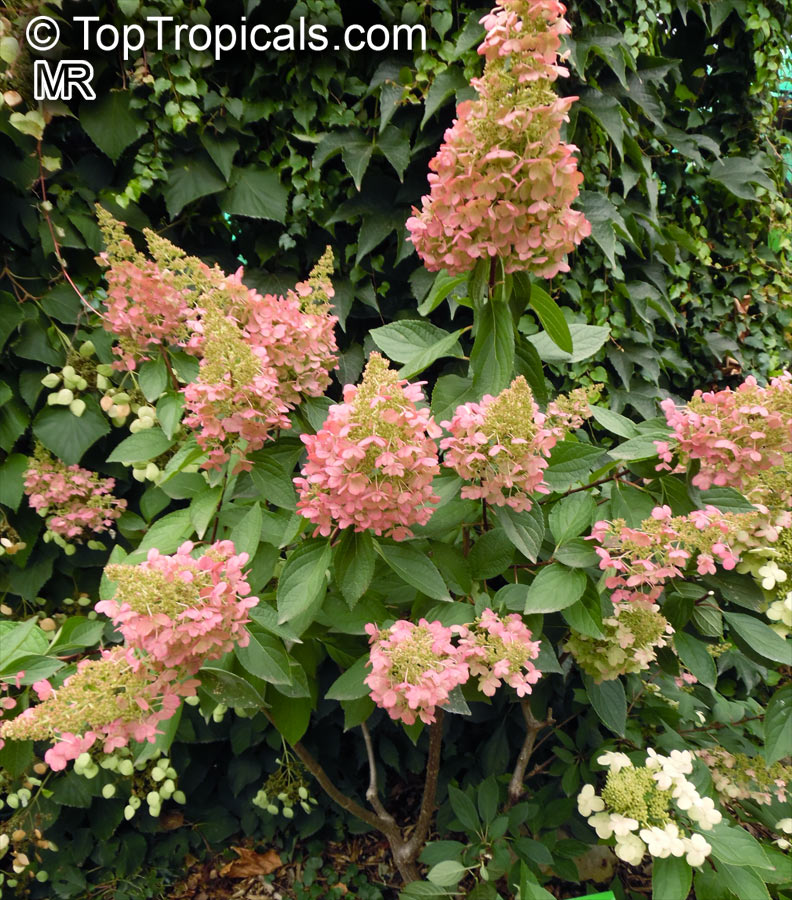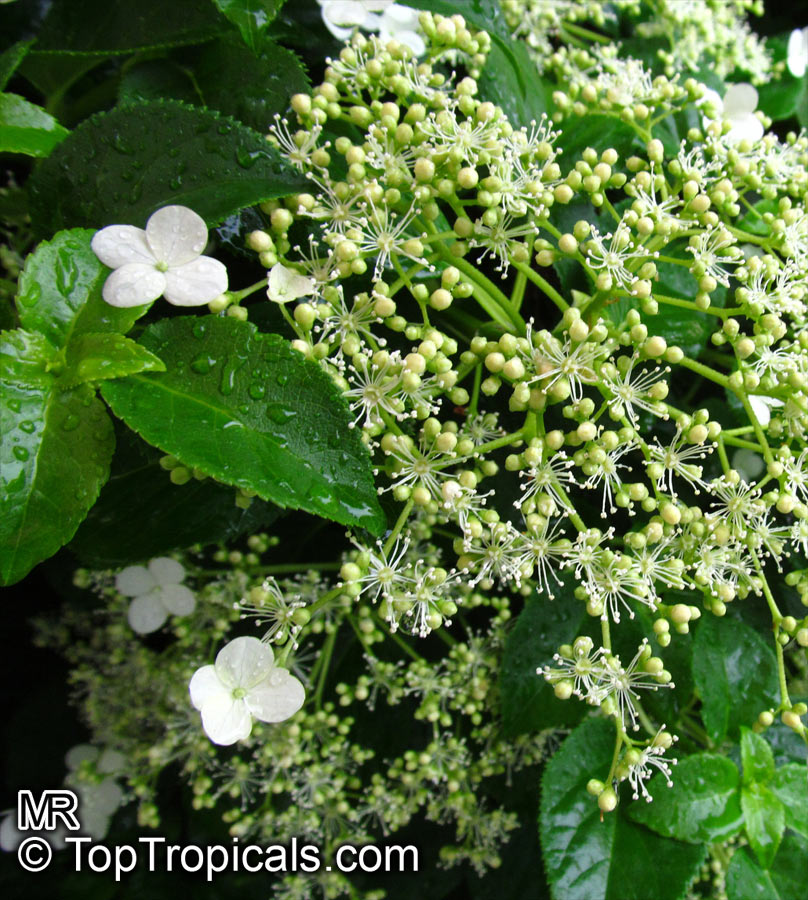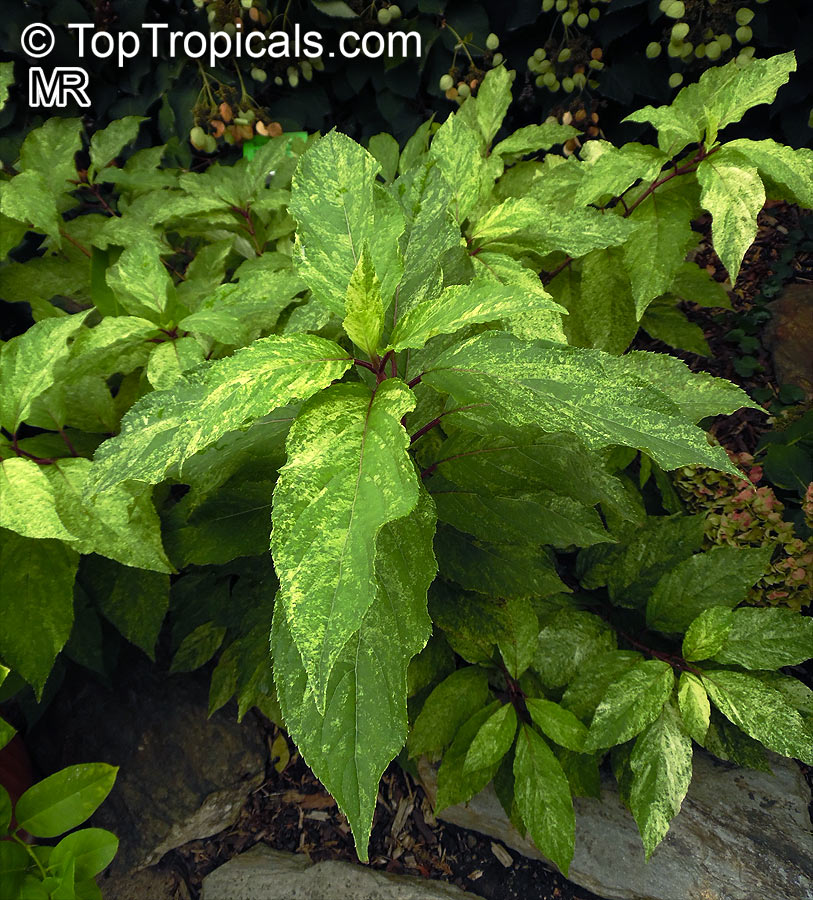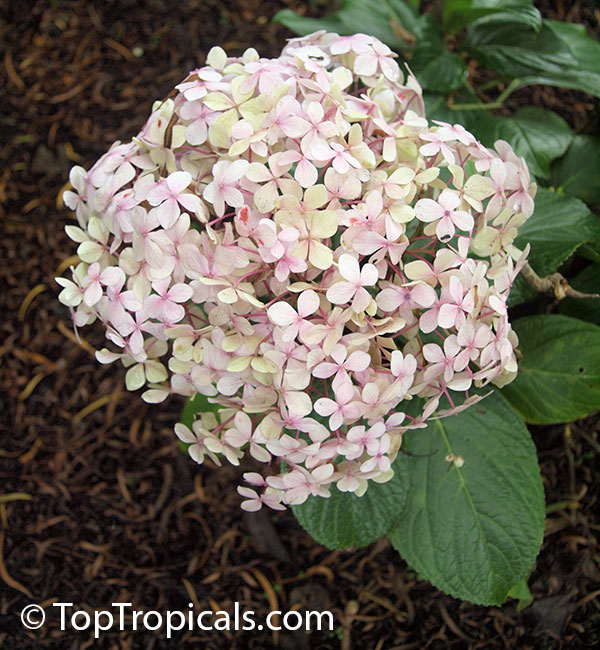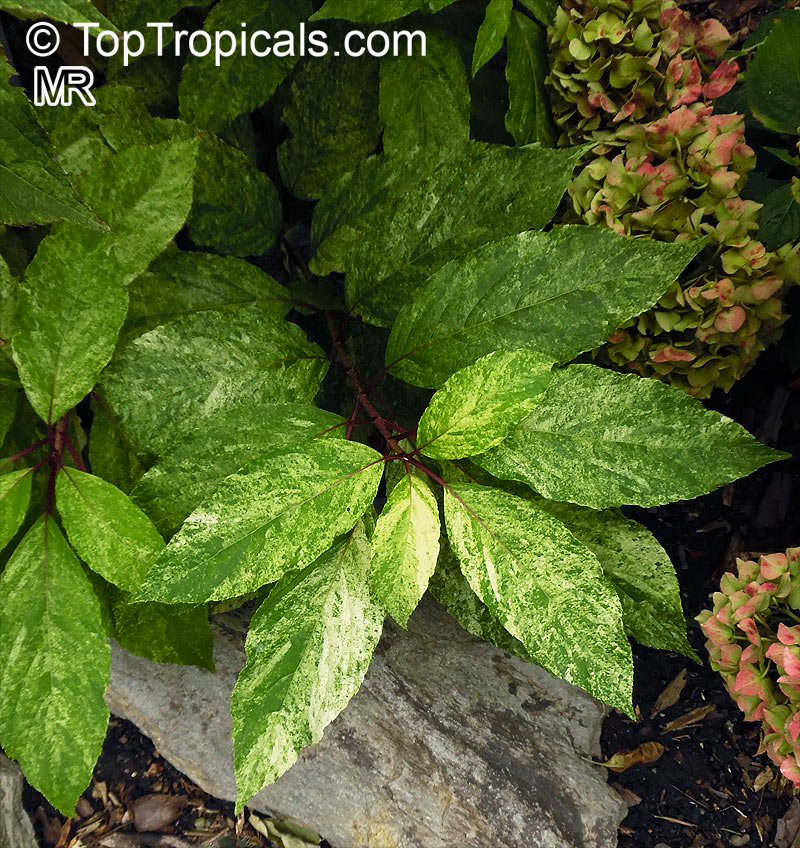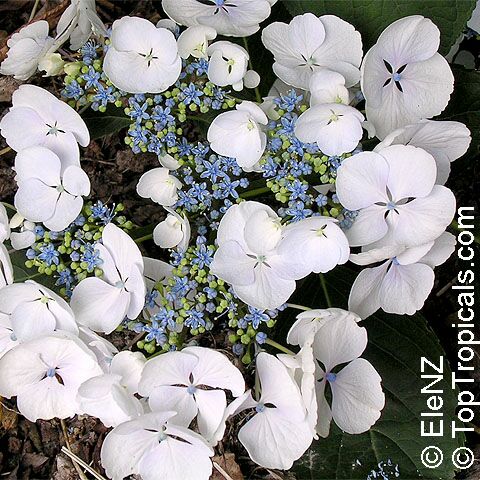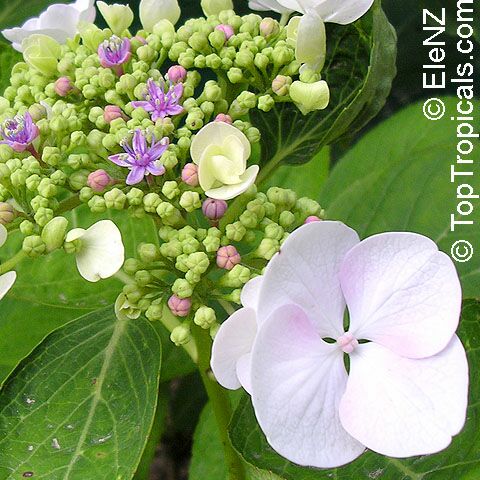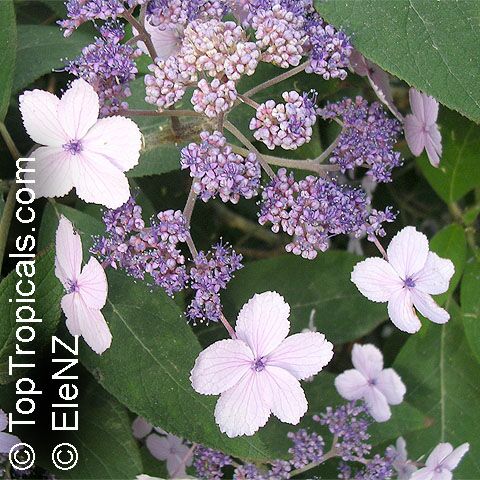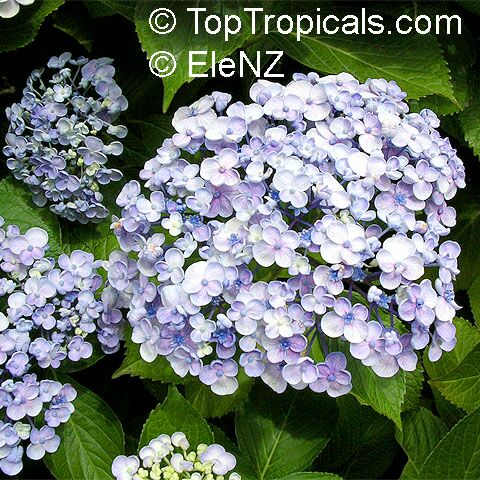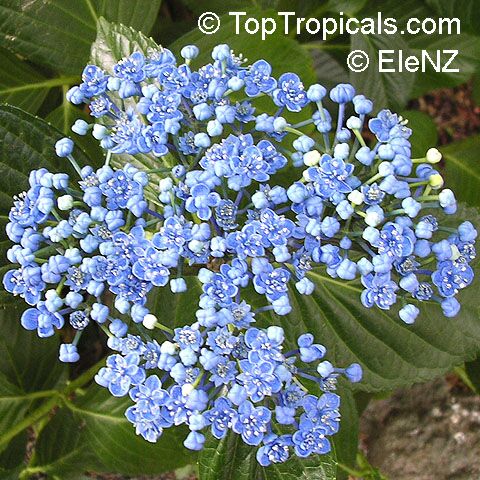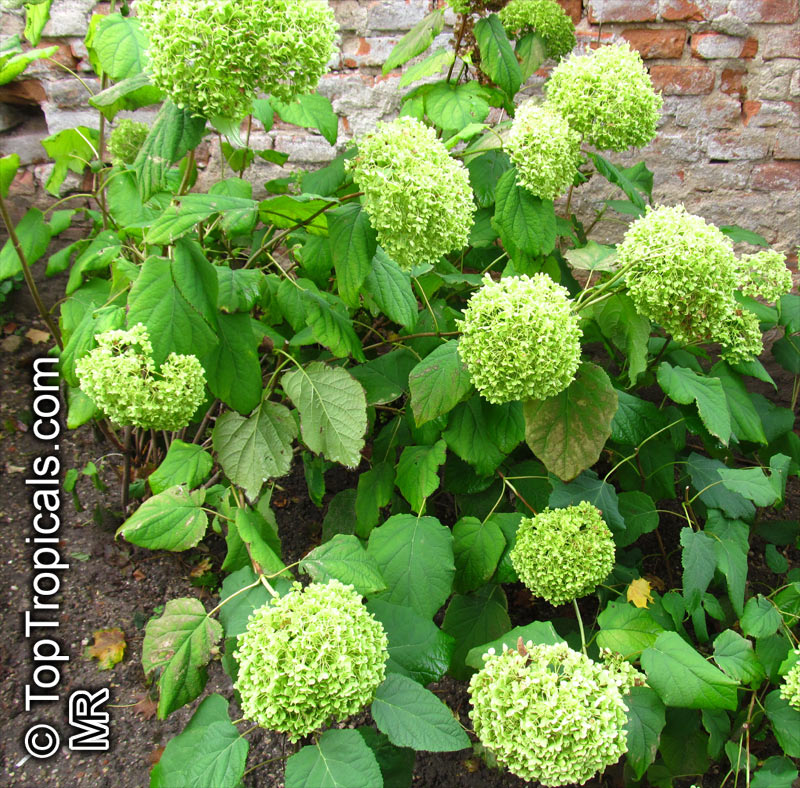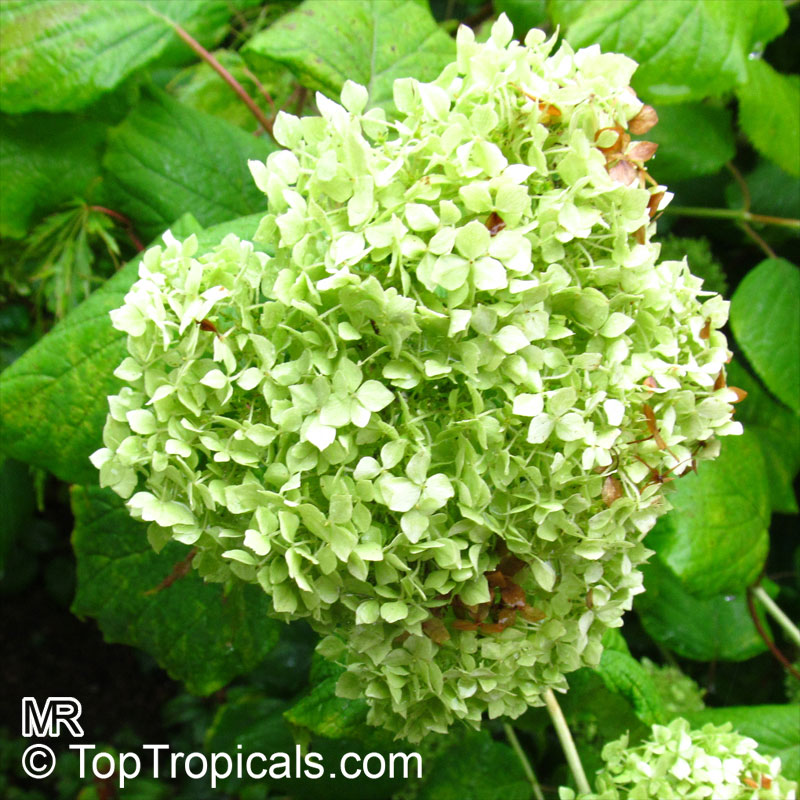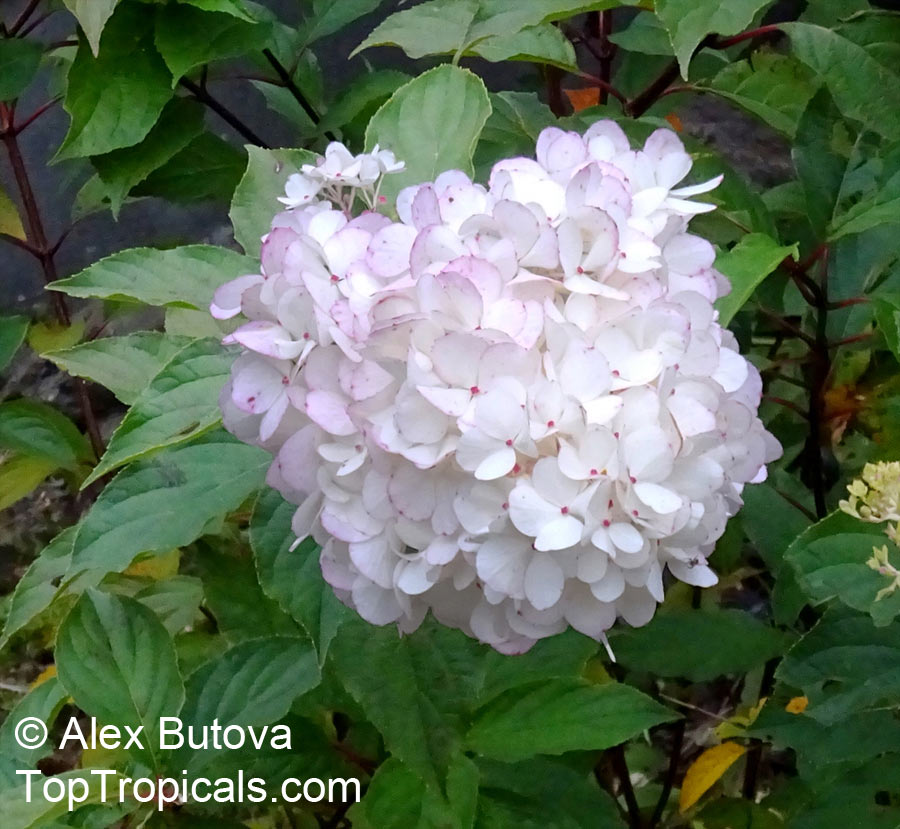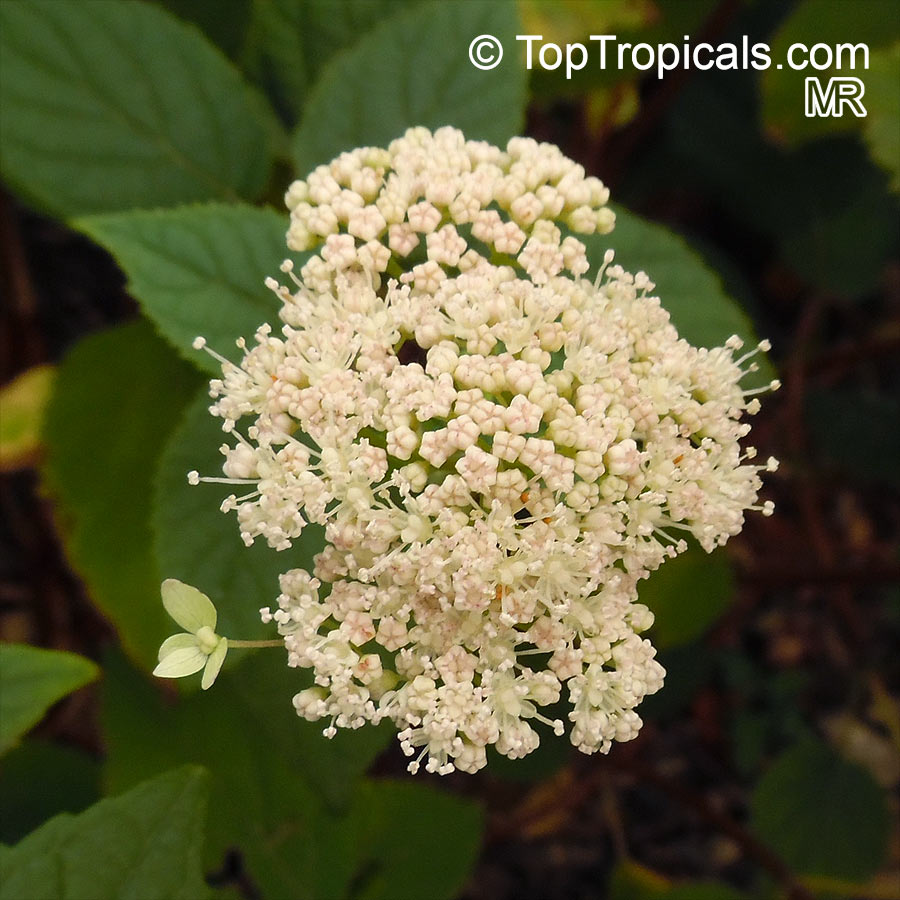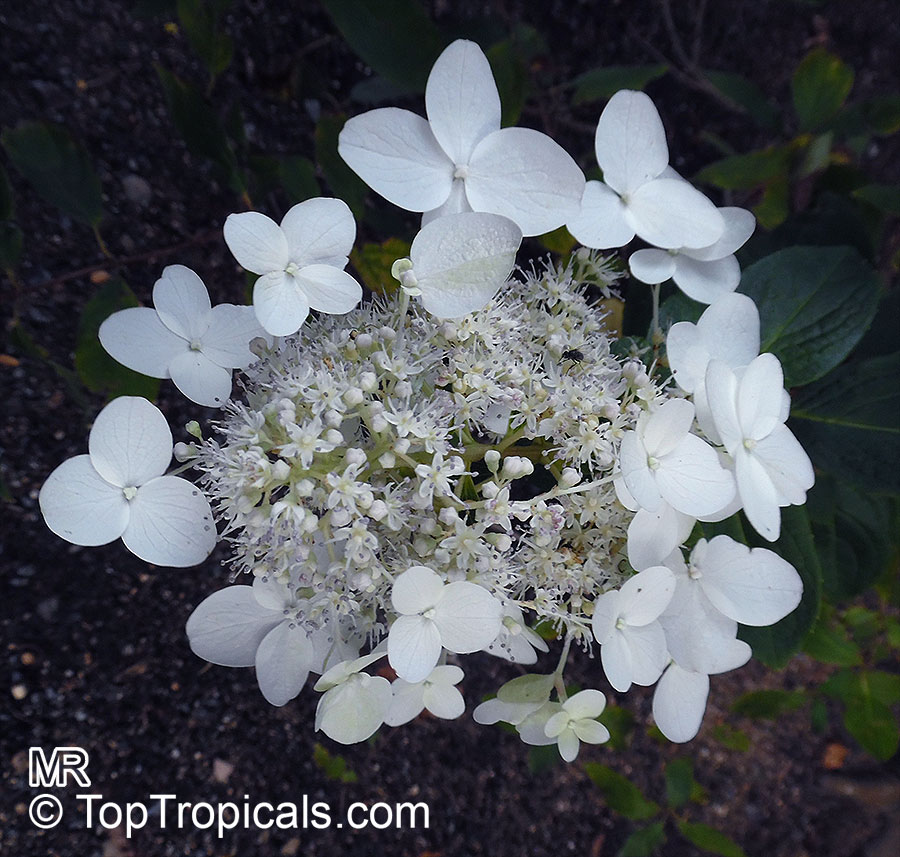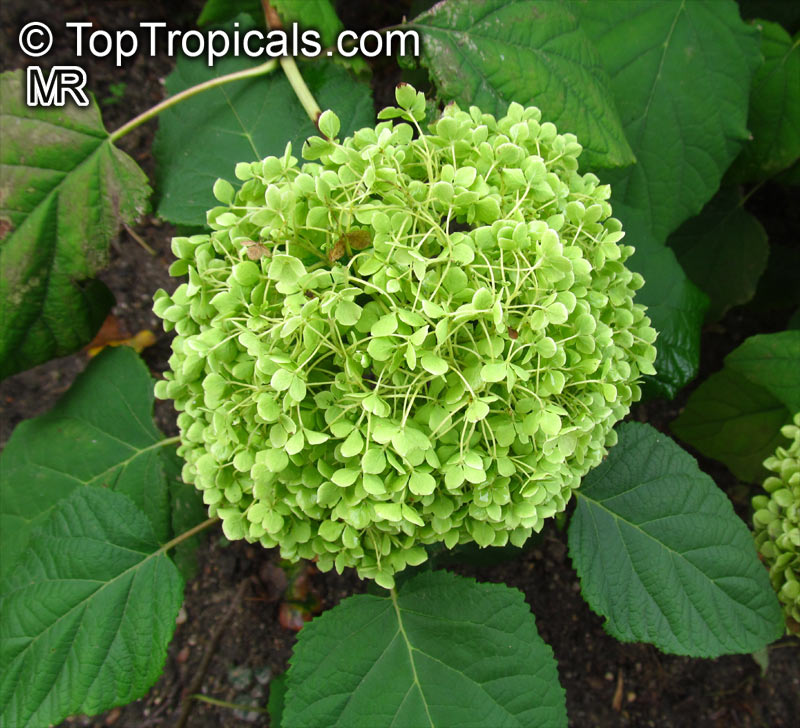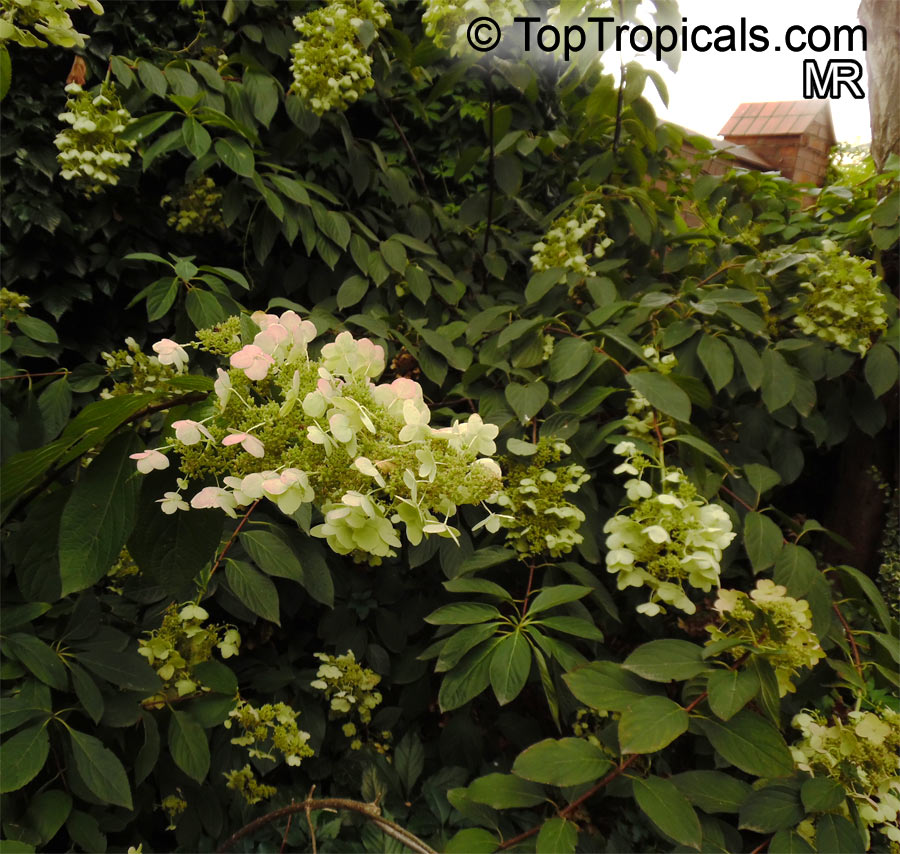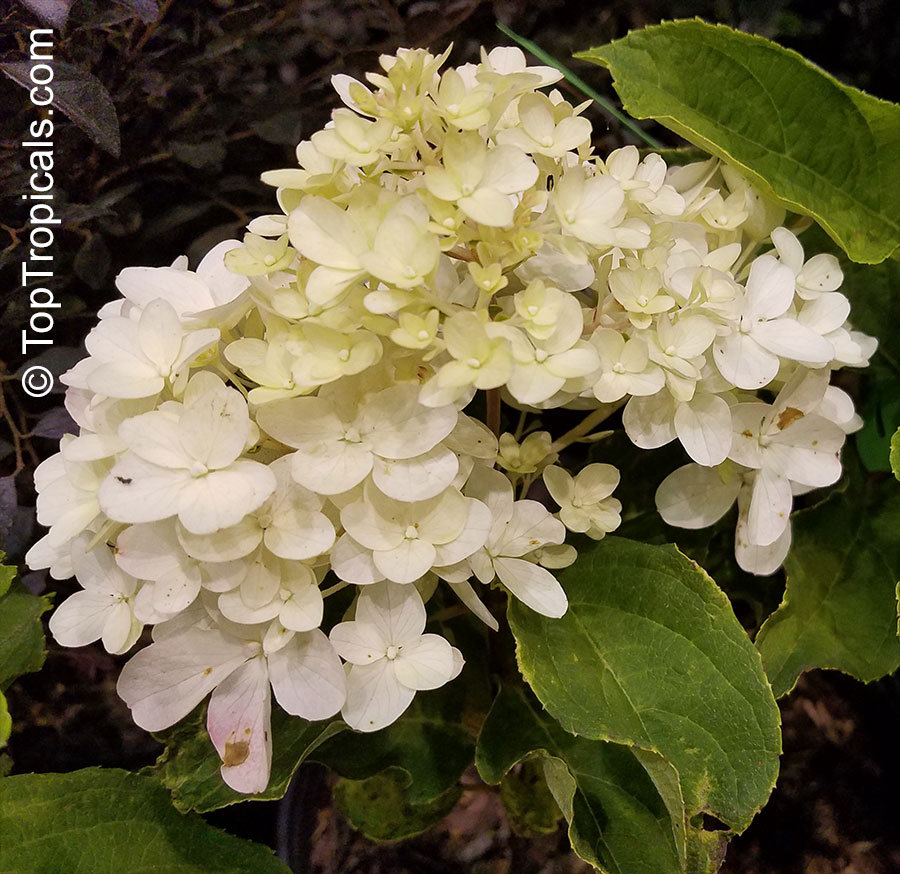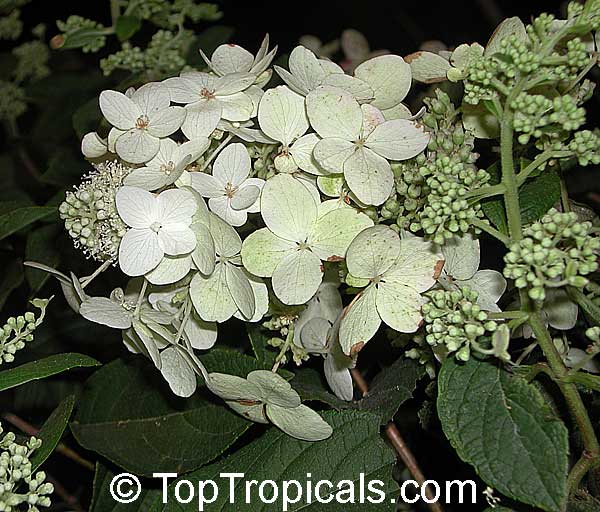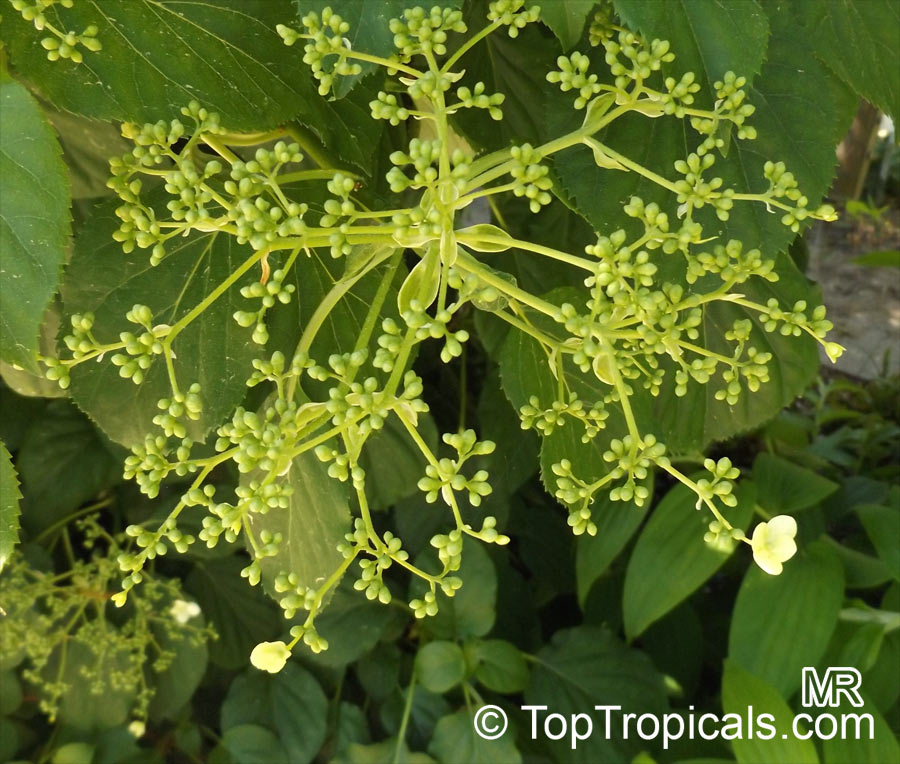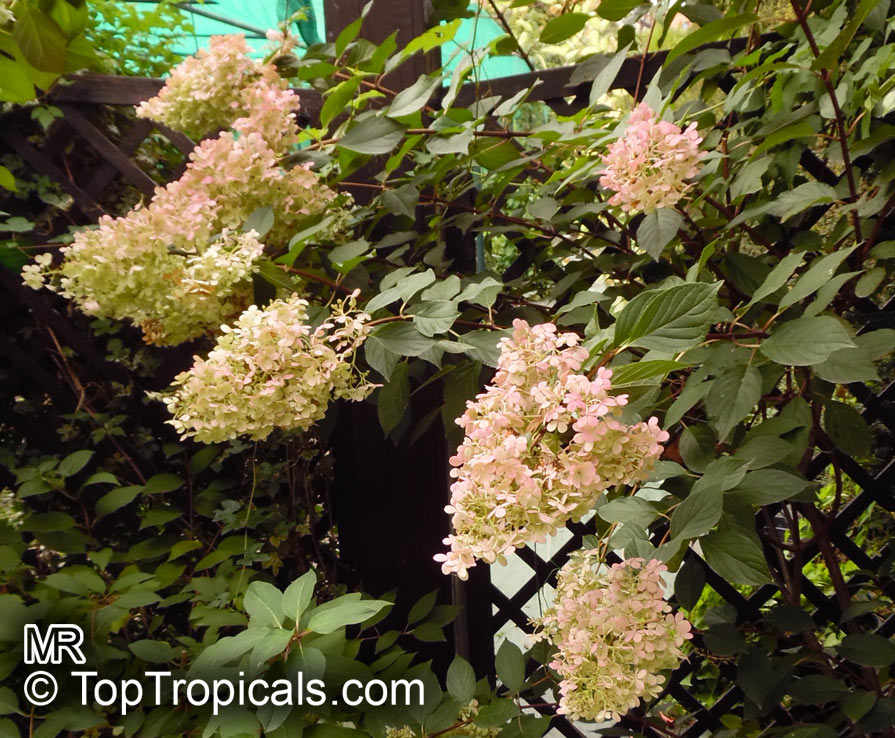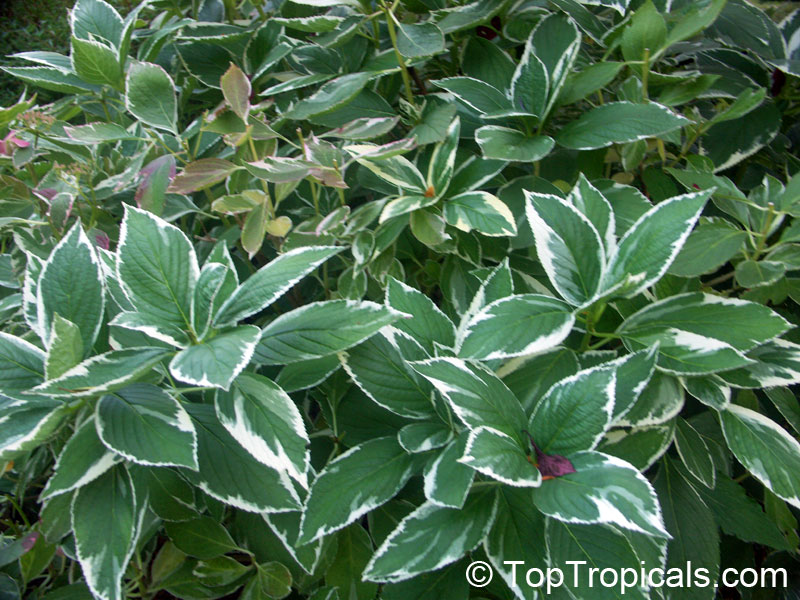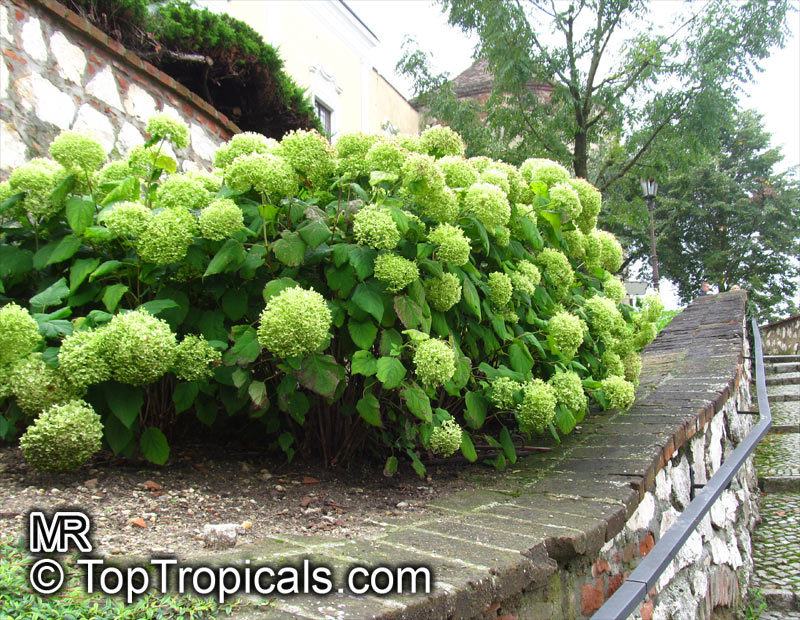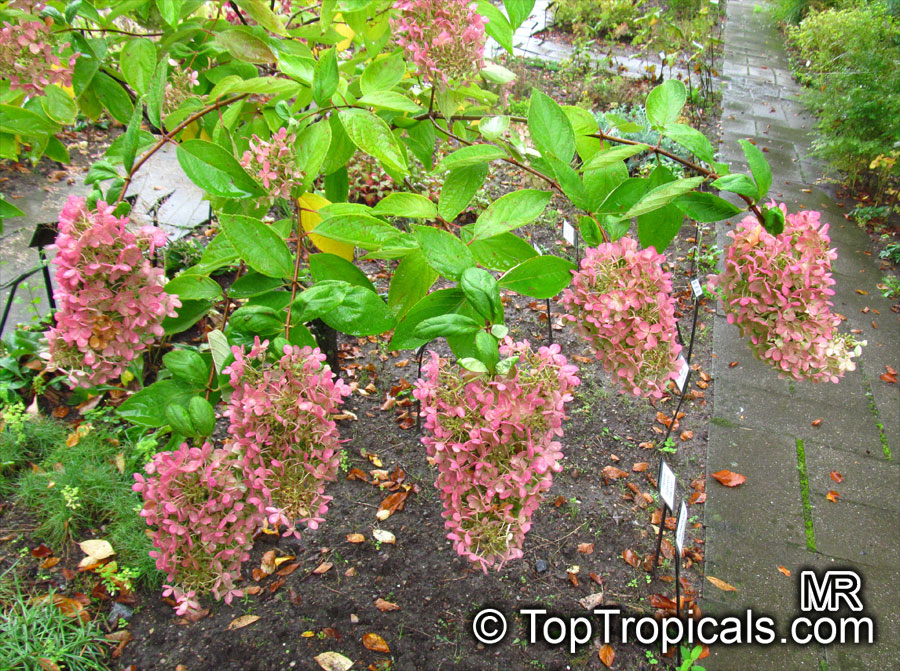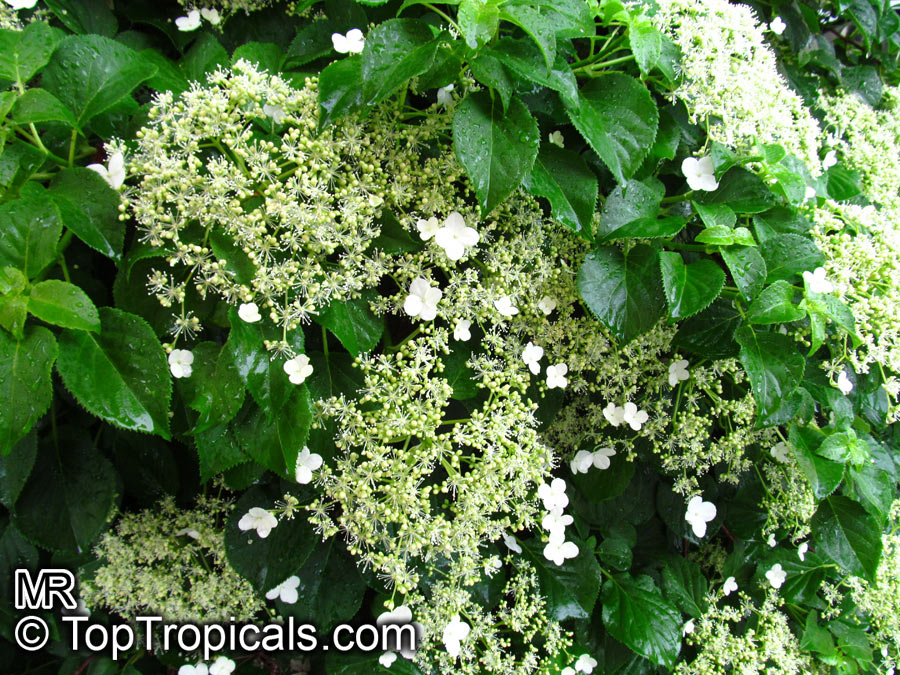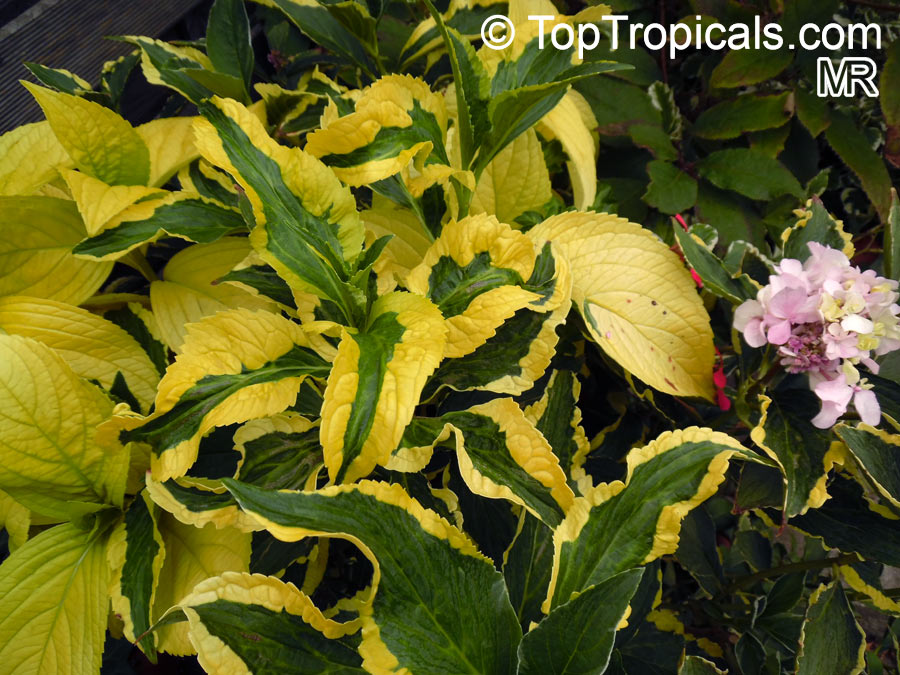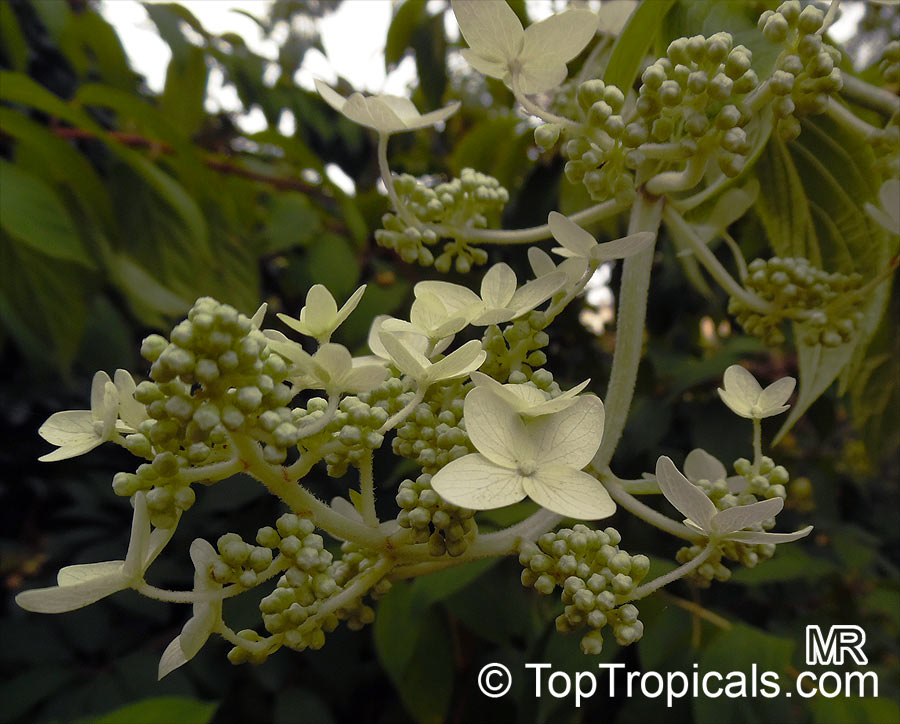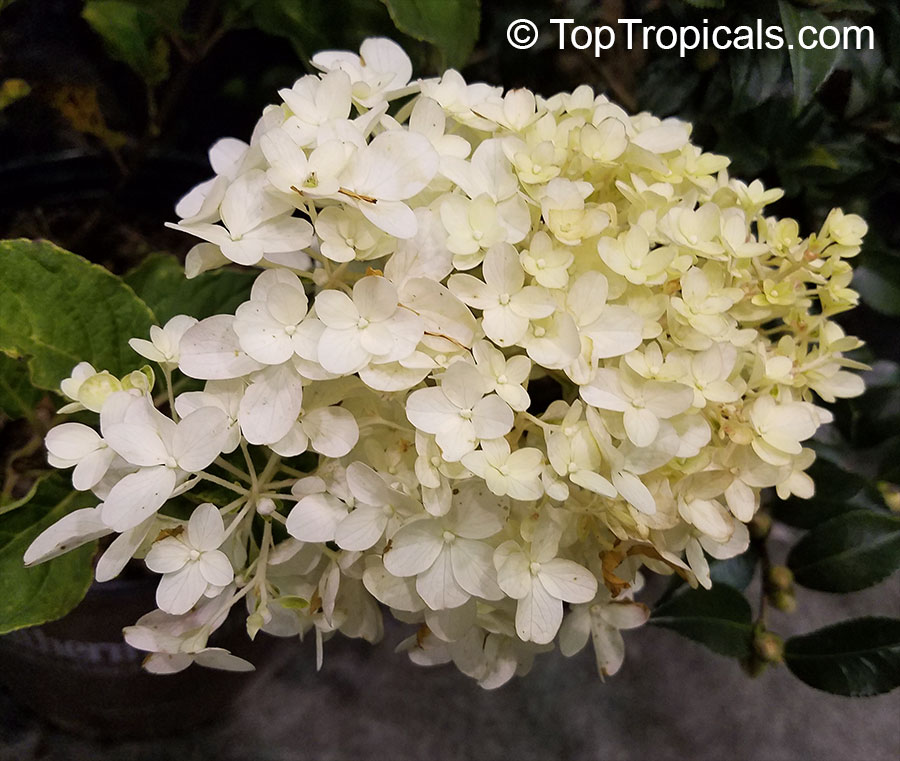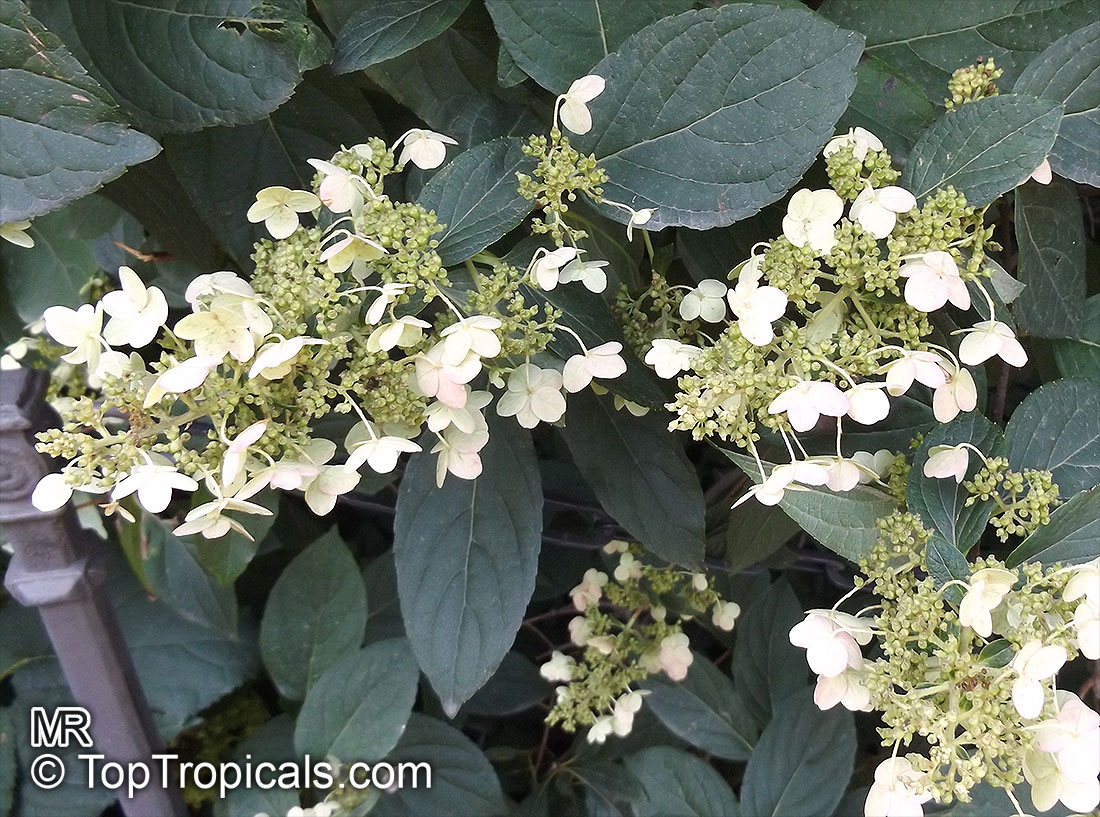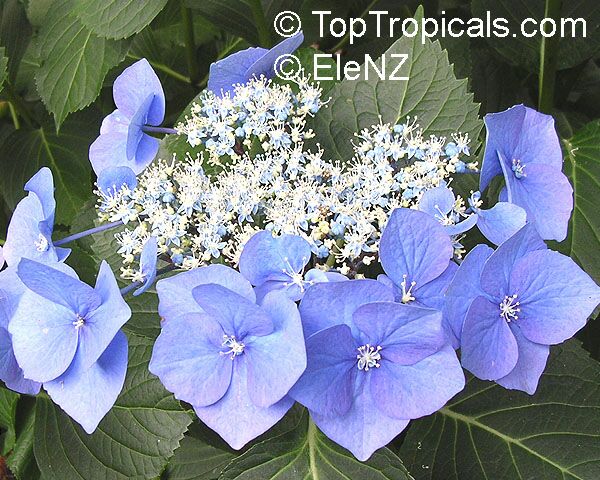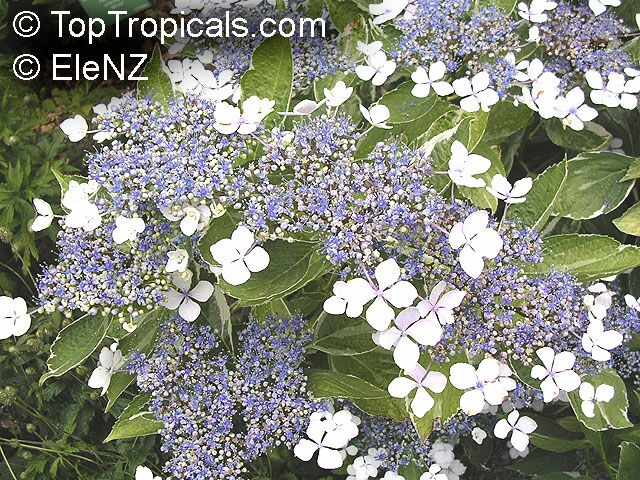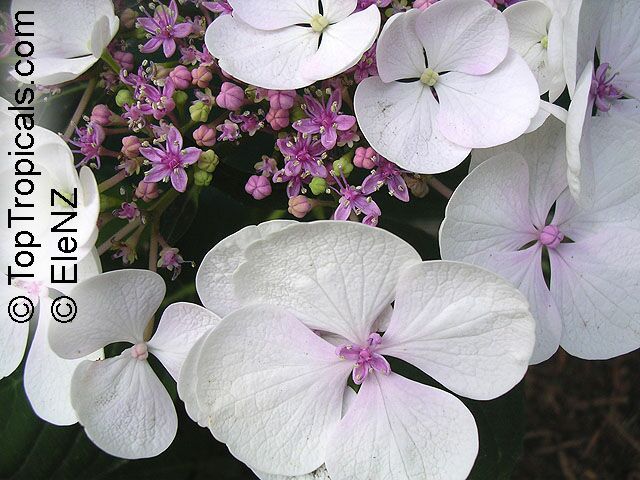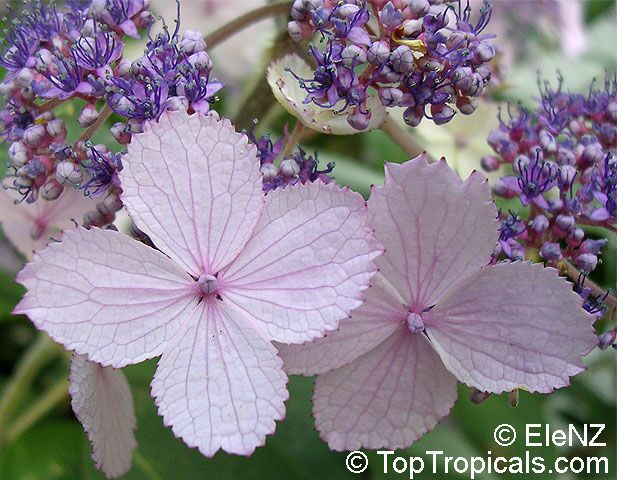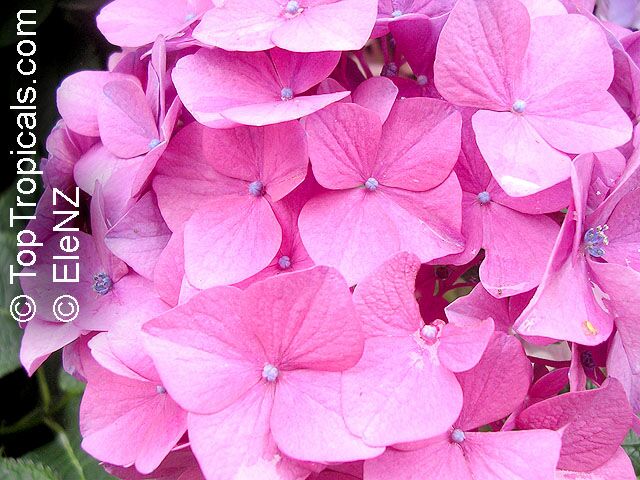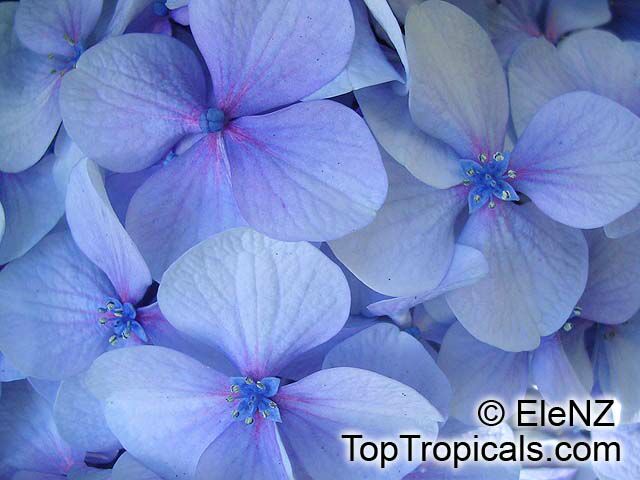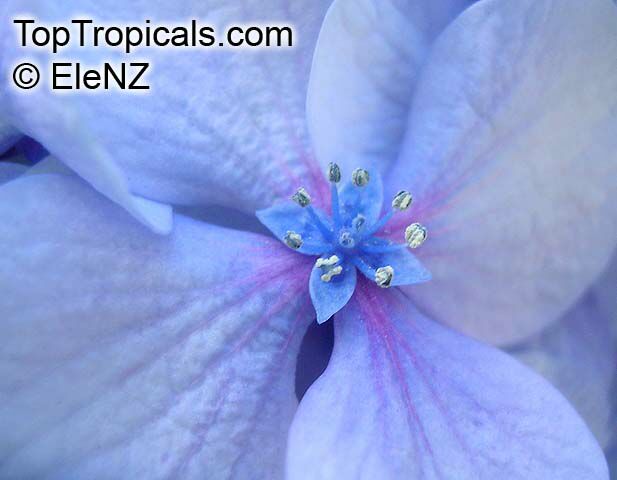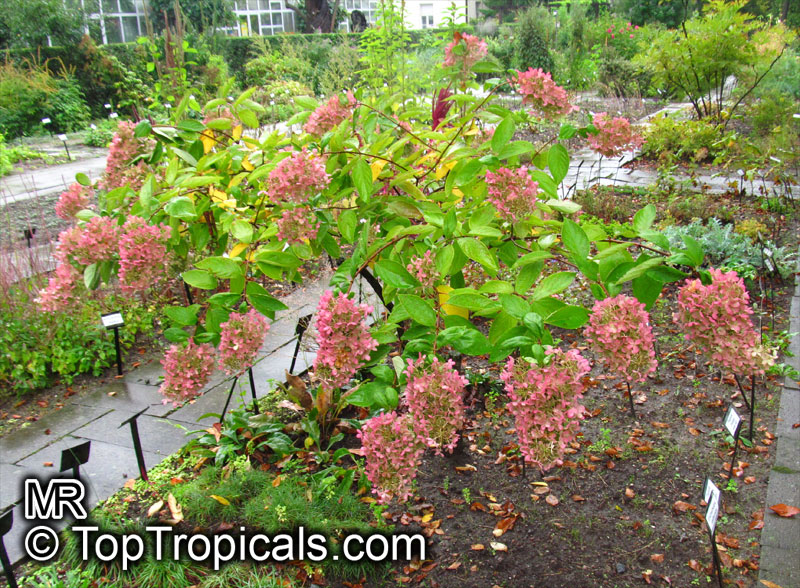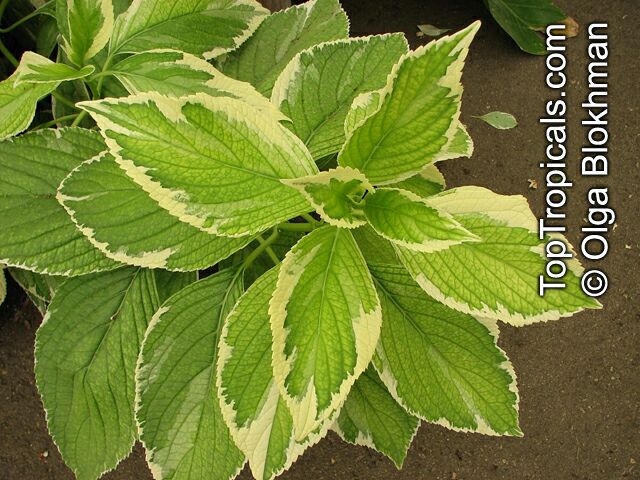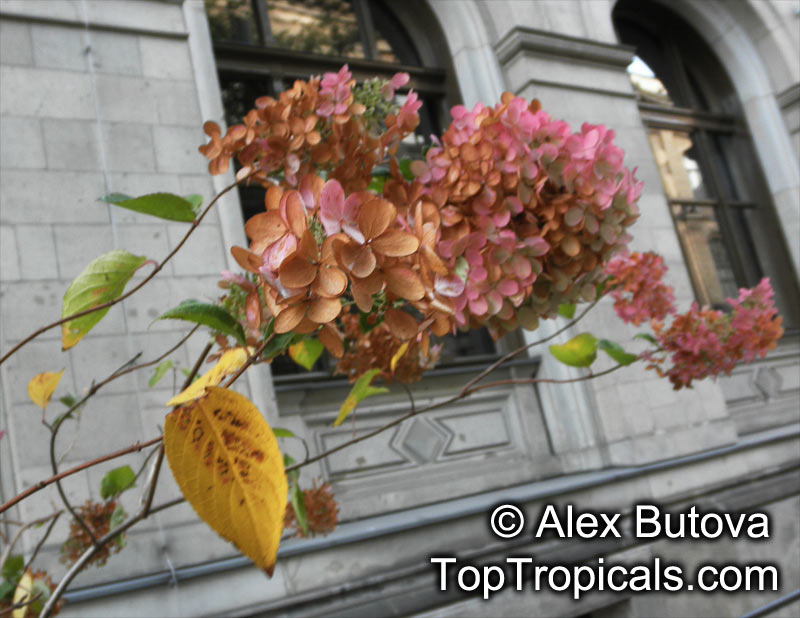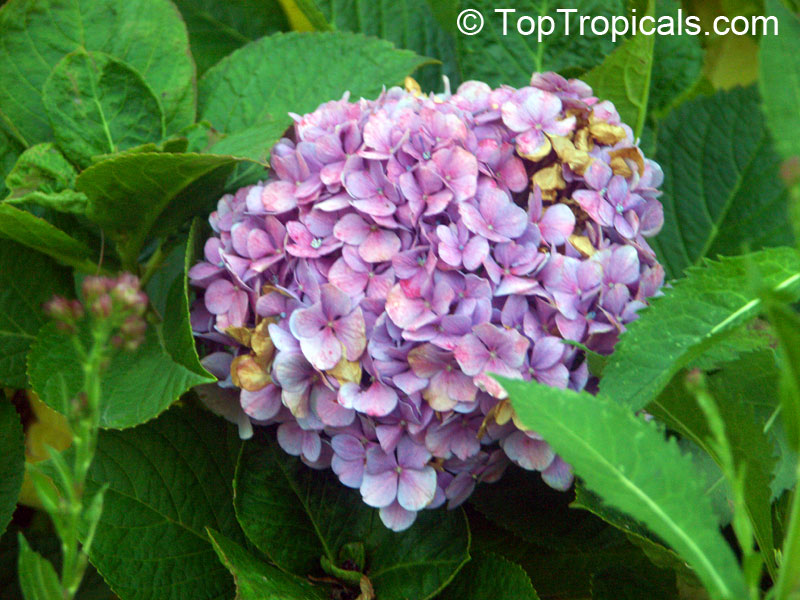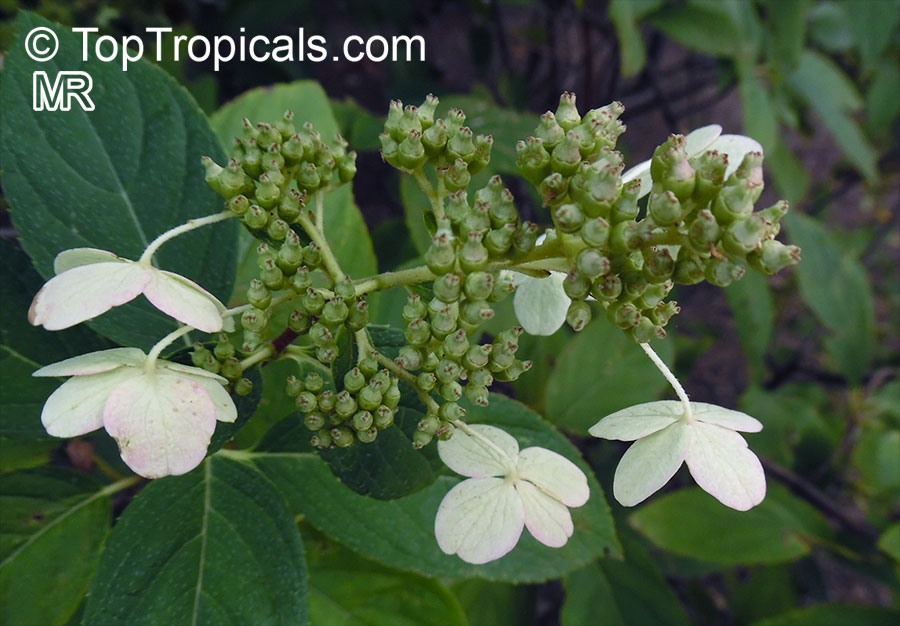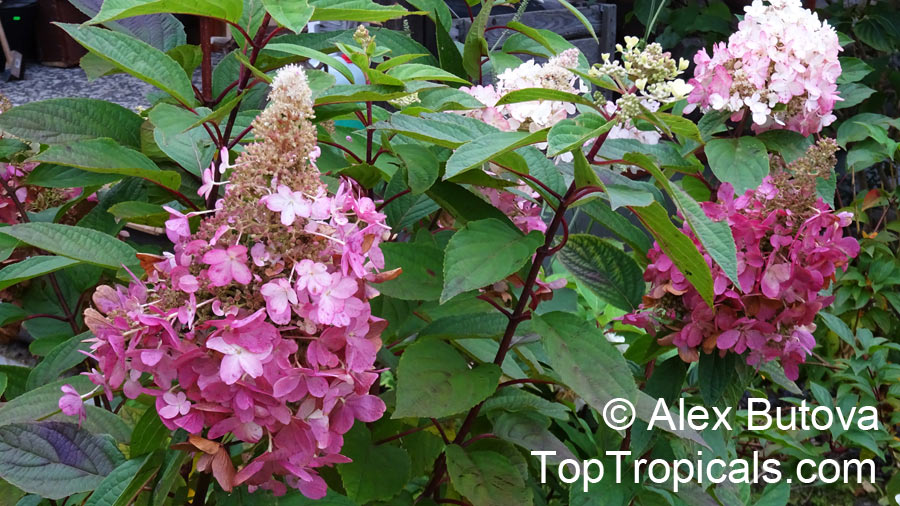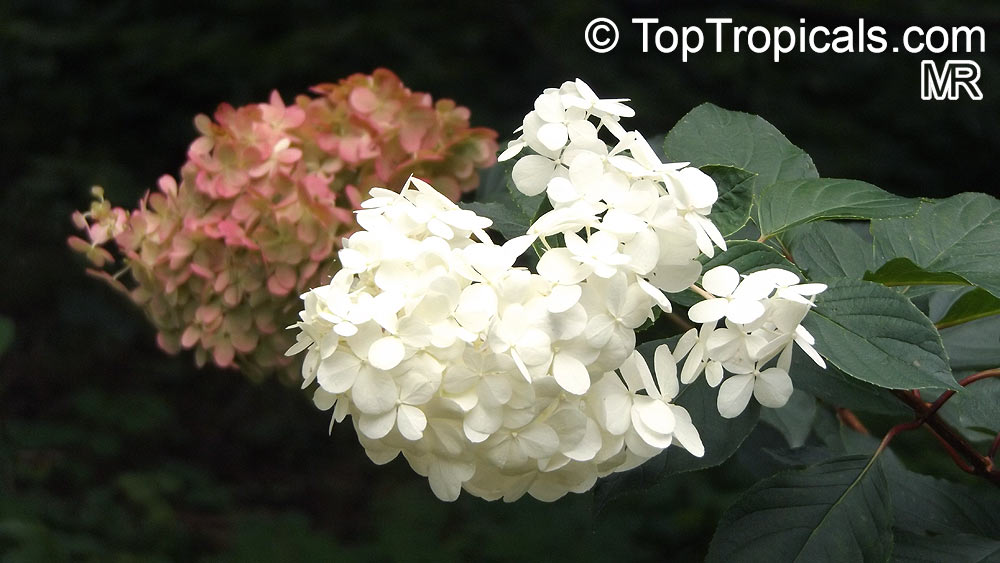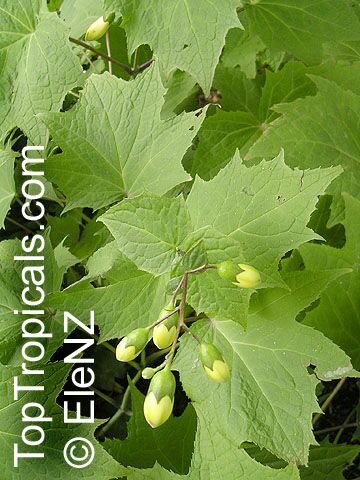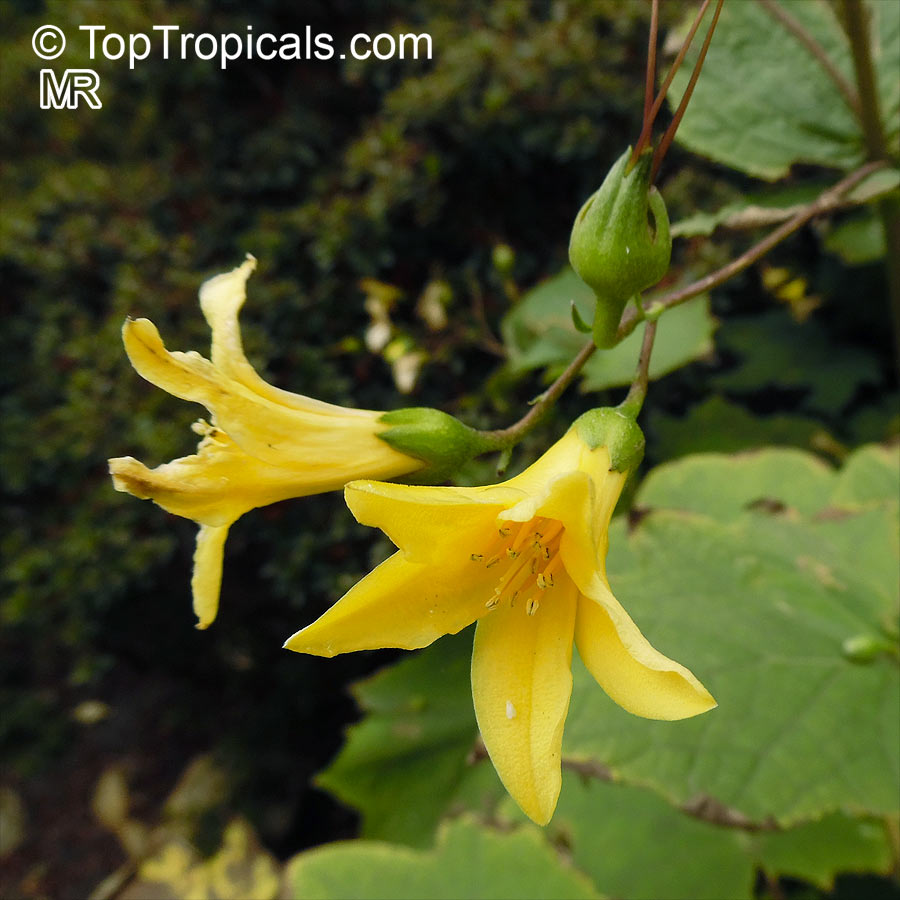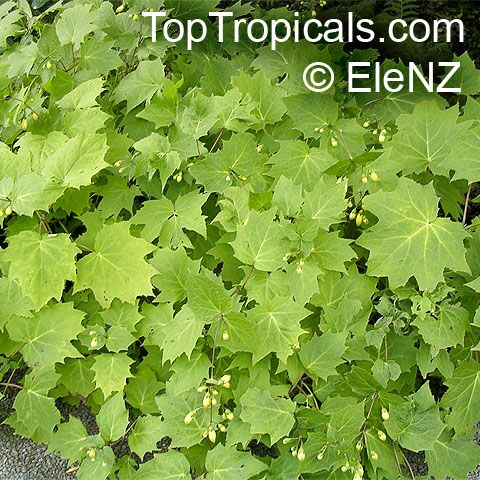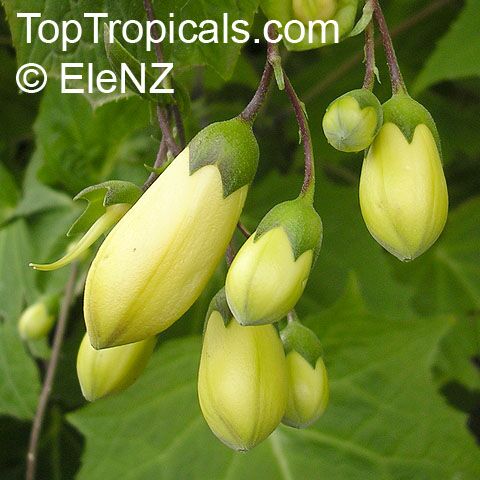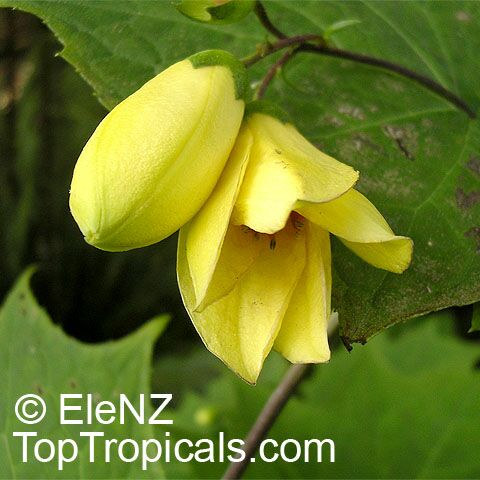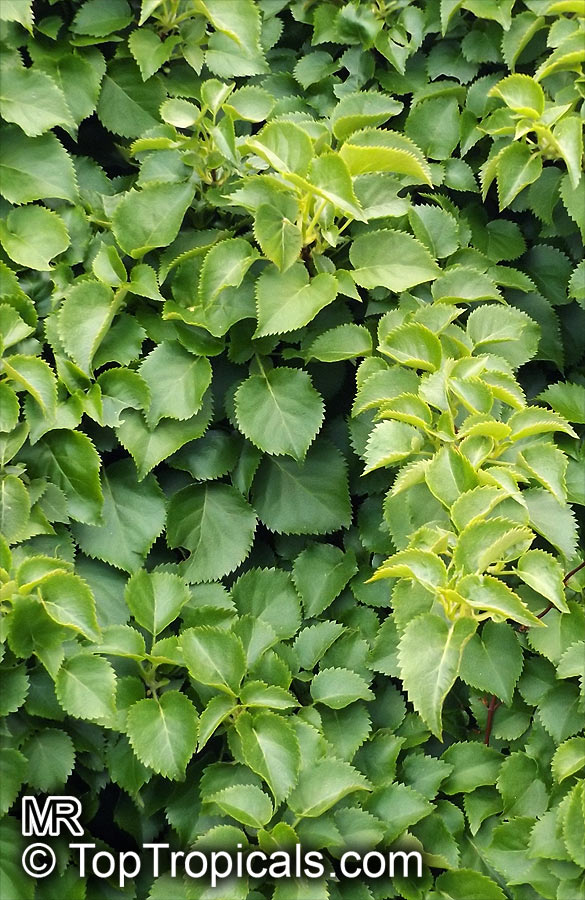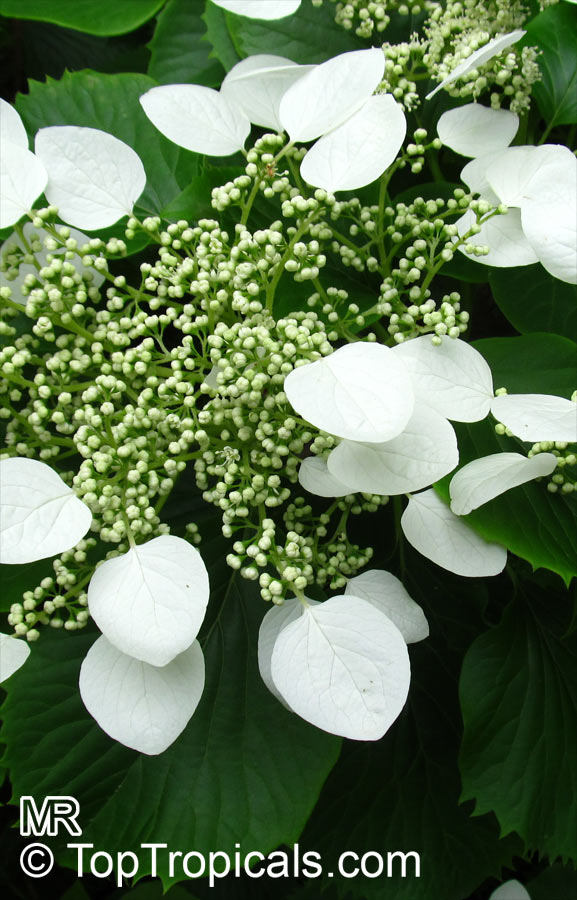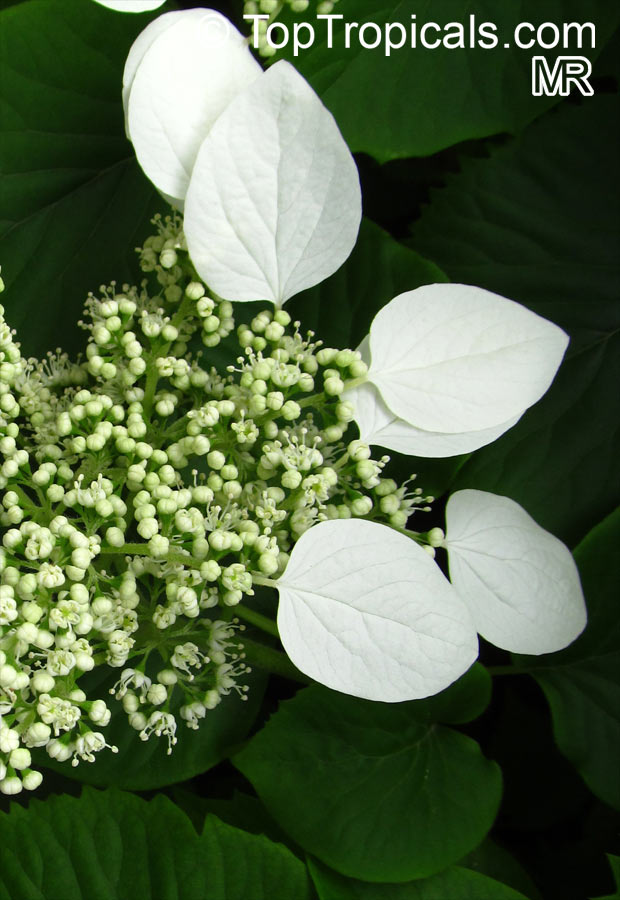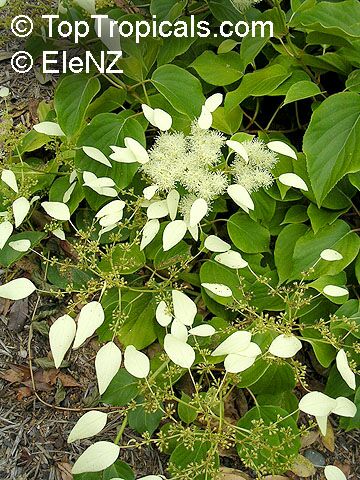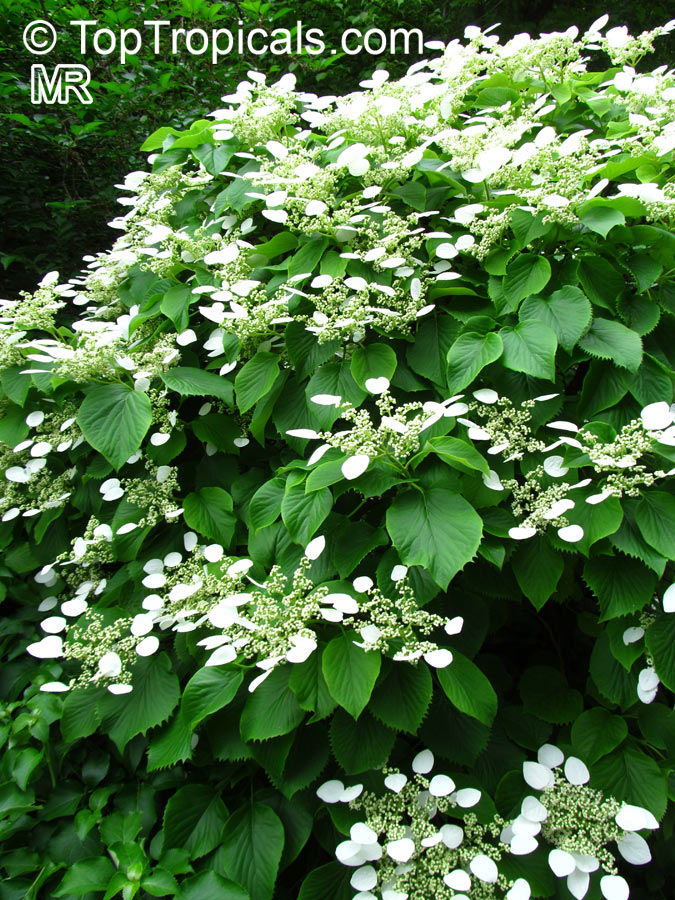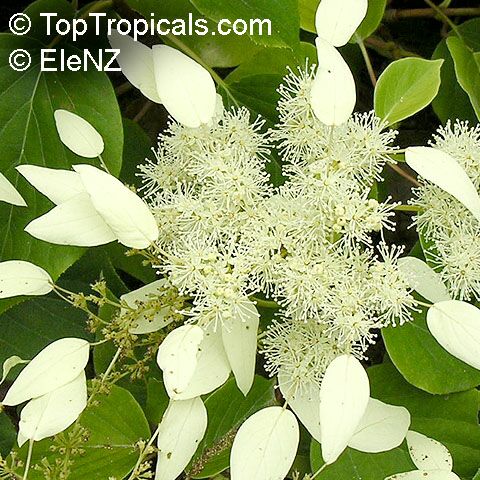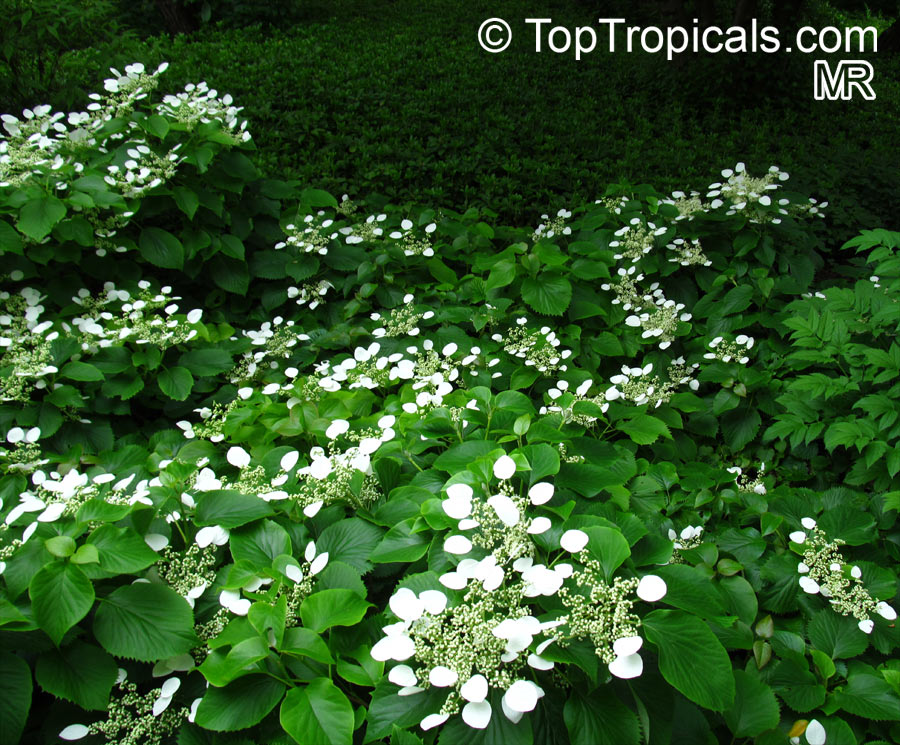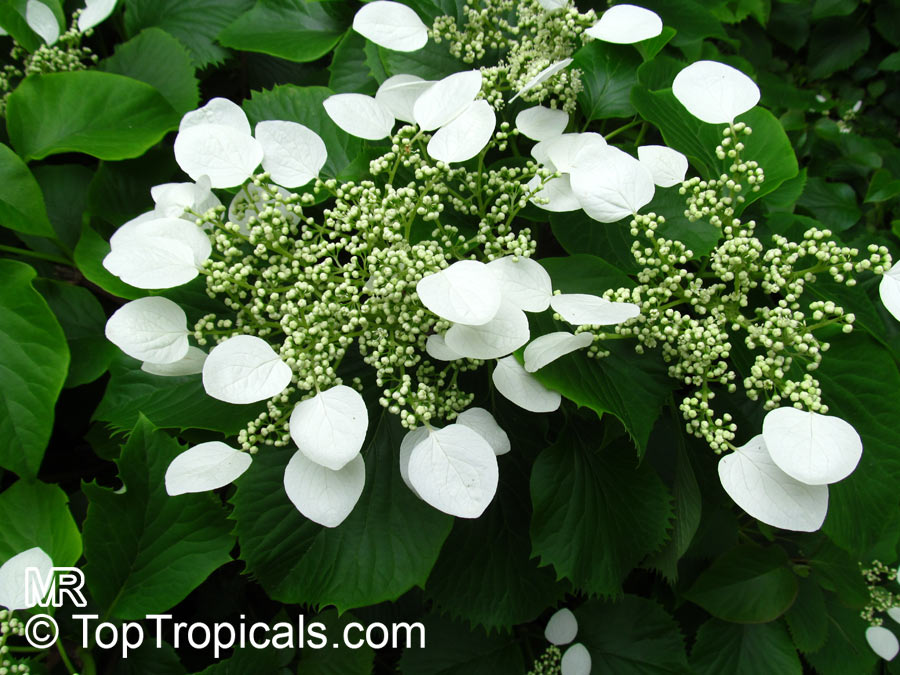Hydrangeaceae - Botanical Family
Top Tropicals Plant Encyclopedia
| Number of plants found: 8 |
Botanical name: Dichroa sp.
Common name: Dichroa
Family: Hydrangeaceae
Origin: South East Asia







Dichroa is a genus of 12 species of flowering plants. The flowers are produced in a broad inflorescence similar to that of the related genus Hydrangea.
Dichroa febrifuga it blooms in broad domes of small fertile flowers of deep blue. What immediately distinguishes it are the nearly black stems on all new growth.
In some sources Dichroa febrifuga is indicated as synonim of Dichroa versicolor.
Botanical name: Dichroa versicolor
Common name: Dichroa
Family: Hydrangeaceae
Origin: South East Asia






Like Dichroa febrifuga it blooms in broad domes of small fertile flowers of deep blue. What immediately distinguishes it are the nearly black stems on all new growth. This shrub is dense, upright and robust, reaching over six feet. Evergreen and rather tender, it will thrive in most parts of Zones 8-10, but shoud be given a sheltered position. Best planted in sun or shade. It's best to prune to around half size after flowering to maintain vigour and flower performance next summer. Tolerant of dry spells, more so than it's sisters, the hydrangeas. Yellowing of foliage though is a sign that it needs more water, and very likely a little general fertilizer.
Botanical name: Hydrangea macrophylla
Common names: Hortensia, Bigleaf Hydrangea, French Hydrange
Family: Hydrangeaceae
Origin: Japan












This large shrub is native to Japan and thrives in full sun or partial shade.
It is best to provide Hydrangea macrophylla with regular watering, however too much water can negatively impact the flowers. Ideal soil should be moist but well-drained. It prefers a slightly acidic soil. It is hardy to USDA zones 4-9.
The flowers of Hydrangea macrophylla come in a range of colors from white, off-white, blue, lavender and purple to particularly unusual colors such as red, crimson and vinous, and yellow and orange. The flower heads can be up to 10 inches wide and the plant can grow to an impressive 5-10 feet tall.
For ideal growth and flower production, the shrub prefers full sun in cooler climates and semi-shade in warmer areas. However, it is important to also reduce the intensity of sun during the peak of summer as too much heat can cause bud drop. For best production of flowers, prune the branches in late winter before the growth starts. Regular watering is important due to evaporation in hot summers. For areas where winter temperature below zero is expected or where frequent snow or ice occurs, you can wrap the plant in extra layers.
In cold regions, it is best to grow Hydrangea macrophylla in a pot - protect the pot from direct sun to protect the roots and provide some winter insulation like wrapping insulation or bubble wrap. Provide additional water when the temperature drops below freezing, or when the plant is under water stress. Take extra care with the pot when the temperature is below freezing: watering too much can cause the roots to freeze, damaging the plant.
Botanical name: Hydrangea quercifolia
Common name: Oakleaf Hydrangea
Family: Hydrangeaceae
Origin: Southeastern United States






Hydrangea quercifolia is a large shrub, which can grow up to 5 to 10 feet tall, is native to the Southeastern United States. It has oval-shaped, large and toothed leaves, with deep lobes that resemble the leaf of an oak tree. During the bloom season, it features bunches of pink and off-white flowers that sit atop large trusses. Over time, these flowers will take on a brown hue as they age.
Oakleaf Hydrangea is easy to care for and grows best in part shade and with regular watering. It is hardy in USDA Zones 5 to 10, but in colder climates, it is best grown in a container so that it can be brought indoors and kept in a sheltered spot when temperatures drop. Ensure that the potting medium is well-draining and planted in a location that receives morning sunlight.
In the growing season, keep the container watered thoroughly, but be careful not to over-water. Fertilize the plant in early spring before the new growth starts, and then again in mid-summer. Prune the shrub after the flower buds form in mid-spring to keep the shrub an even size, and remove any dead branches.
Overall, Hydrangea quercifolia is an easy-to-care for and rewarding shrub that can bring a bit of beauty to a landscape. With its majestic foliage and delicate flower clusters, it is an all-season eye-catching addition to any garden.
Botanical name: Hydrangea sp.
Common name: Hydrangea
Family: Hydrangeaceae
Origin: Eastern Asia












Hydrangeas are an incredibly varied and interesting group of large and small shrubs that have become a staple in many residential gardens throughout the United States. Typically growing 3-10 feet tall at full maturity, this deciduous plant is hardy to USDA Zone 5-9 and, although more sensitive to the cold, even some more northern regions will see hardiness down to the low 30s Fahrenheit for short periods of time.
Native to Eastern Asia, hydrangeas are known for their delightful showy flower heads that can be found in shades of pink, white or off-white, blue, lavender and even a unique purple that appears almost as an unusual color. The flowers can also be two-toned with contrasting eyes, speckled or striped with another color for a particularly standout display.
These unique blooms are counterpointed with striking ornamental foliage that can range from large, glossy green leaves to smaller, leathery foliage found in more dwarf or creeping varieties. When it comes to planting, grow hydrangeas in moist but well-drained and slightly acidic soil, enriched with organic matter and also ensure they receive enough shade or semi-shade throughout the day. For those located in colder regions consider growing hydrangeas in a pot to ensure that they have the right conditions to thrive during the winter months.
Hydrangeas are relatively easy to propagate by stem cuttings taken between April to August and can boast an incredibly generous flowering period throughout the summer. This lovely and hardy shrub has become a sought-after addition to many horticultural displays and is sure to bring a burst of color and life to any outdoor area.
Botanical name: Kirengeshoma palmata
Common name: Yellow Waxbells
Family: Hydrangeaceae
Origin: Yapan, Korea






An unusual Japanese perennial with palmate foliage and tubular, yellow blooms. Grow this plant in humus rich soil in partial shade. Requires consistently moist soil; do not let dry out between waterings.
It is a lovely plant for an herbaceous or mixed border, or woodland garden.
It is propagated either by division in winter or early spring, or by raising from seed.
Botanical name: Schizophragma hydrangeoides
Common names: Japanese Hydrangea Vine, Japanese Climbing Hydrangea
Family: Hydrangeaceae
Origin: Korea and Japan







Japanese hydrangea vine is a deciduous, woody-stemmed, climbing vine which is valued for its toothed, heart-shaped, deep green leaves and large, flat-topped, lace cap hydrangea-like clusters of white flowers which bloom in early summer. Foliage turns yellow in fall. Attaches to and grows up flat vertical surfaces such as masonry walls by stem-borne adhesive rootlets. Reddish-brown stems provide some interest in winter. Best grown in rich, medium wet, well-drained soil in part shade to full shade. Prune in late winter to early spring.
Use link to repeat this search:
https://toptropicals.com/cgi-bin/garden_catalog/cat.cgi?search_op=and&keyword_op=and&language=e&family=Hydrangeaceae
&number=10&no_change_lang=1&user=tt&sale=1&first=0
